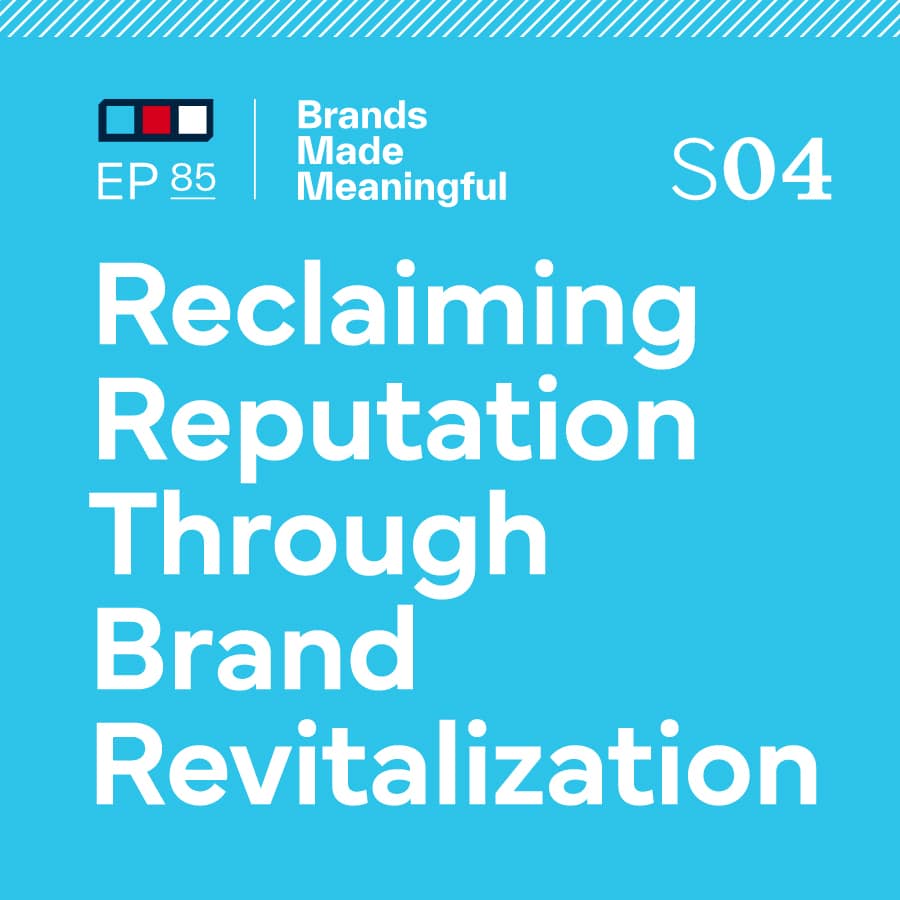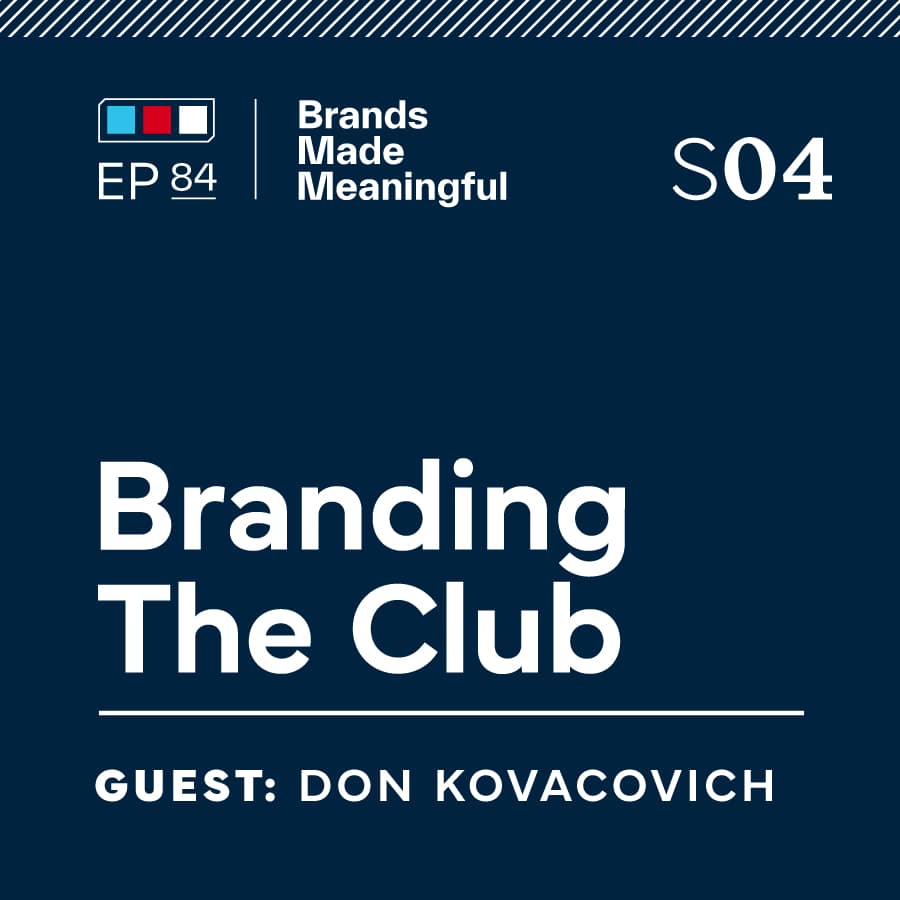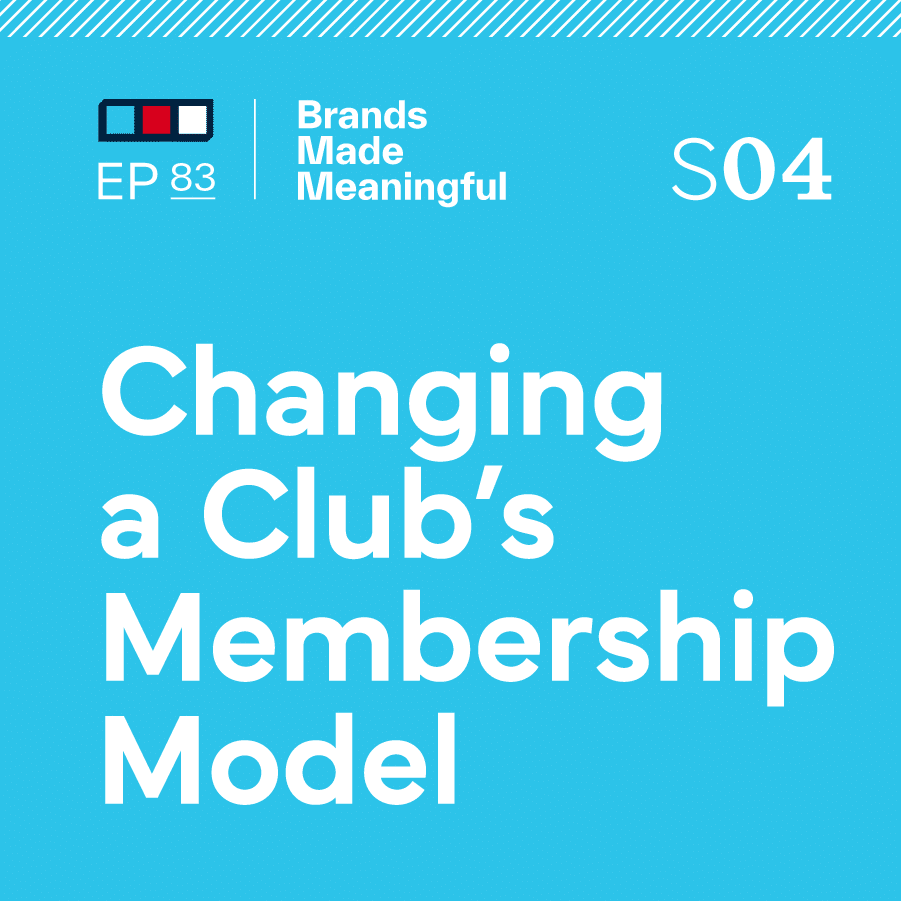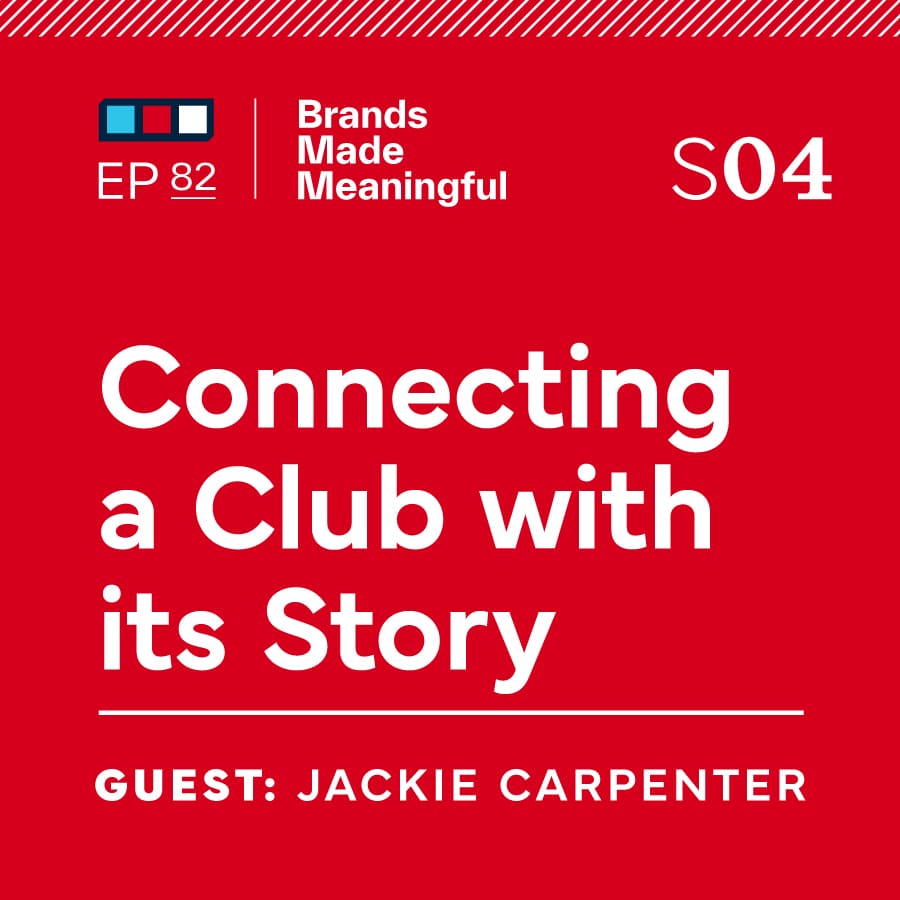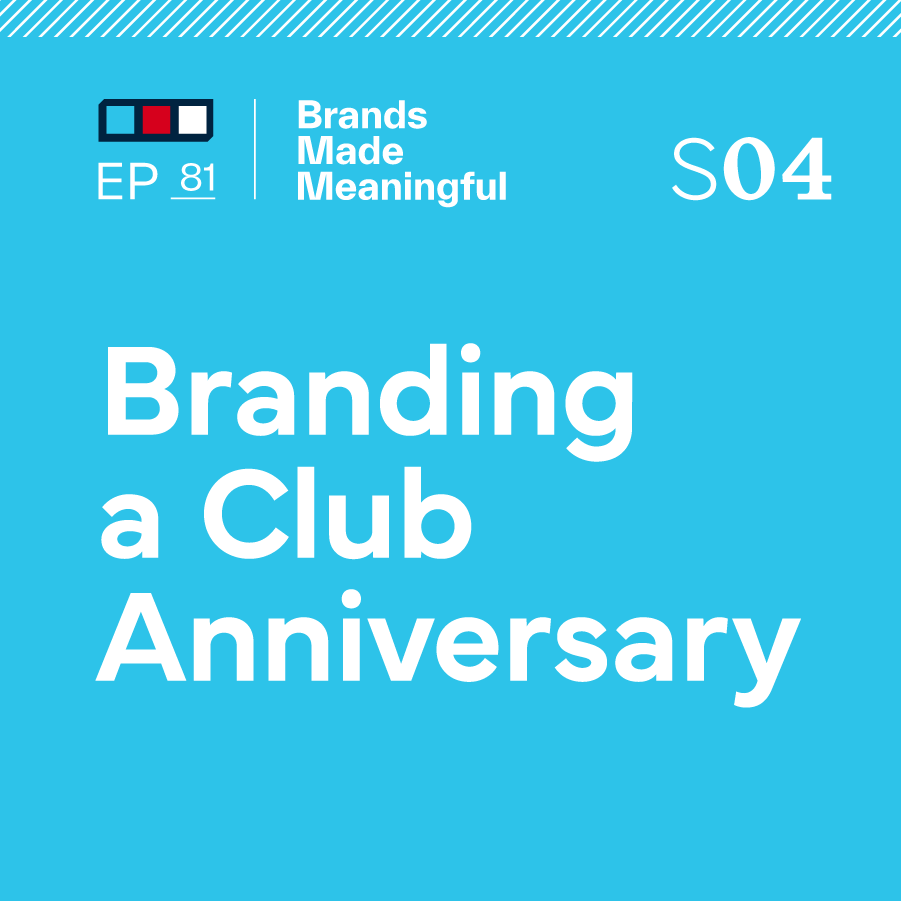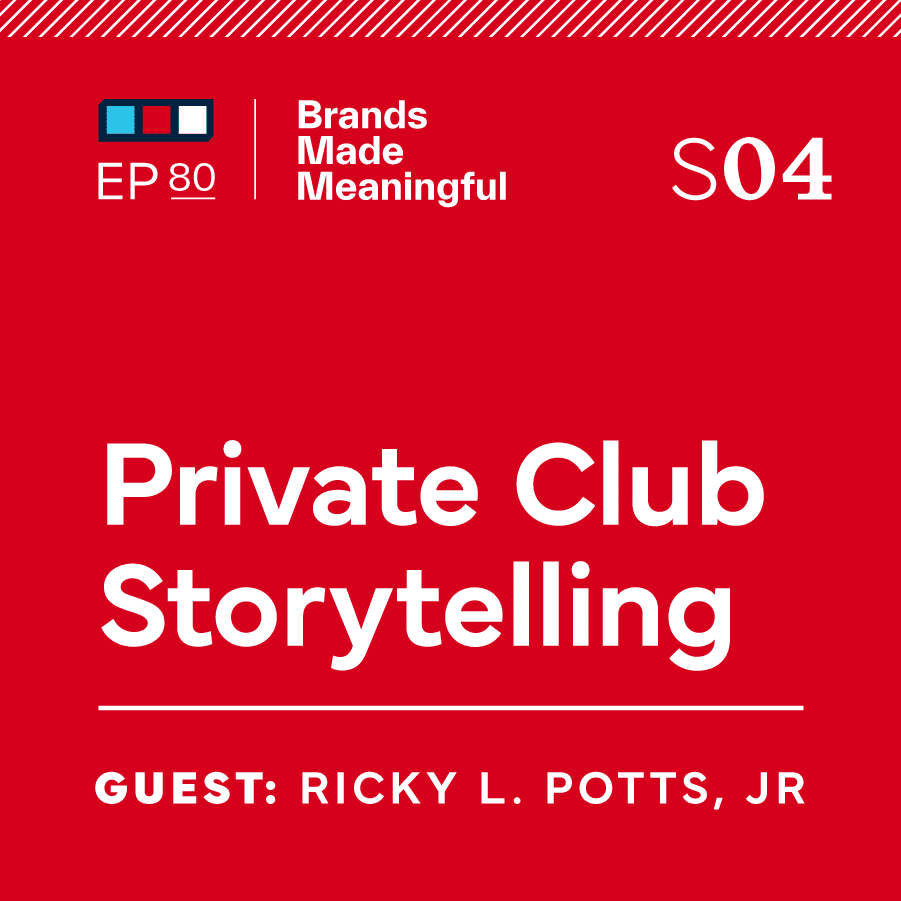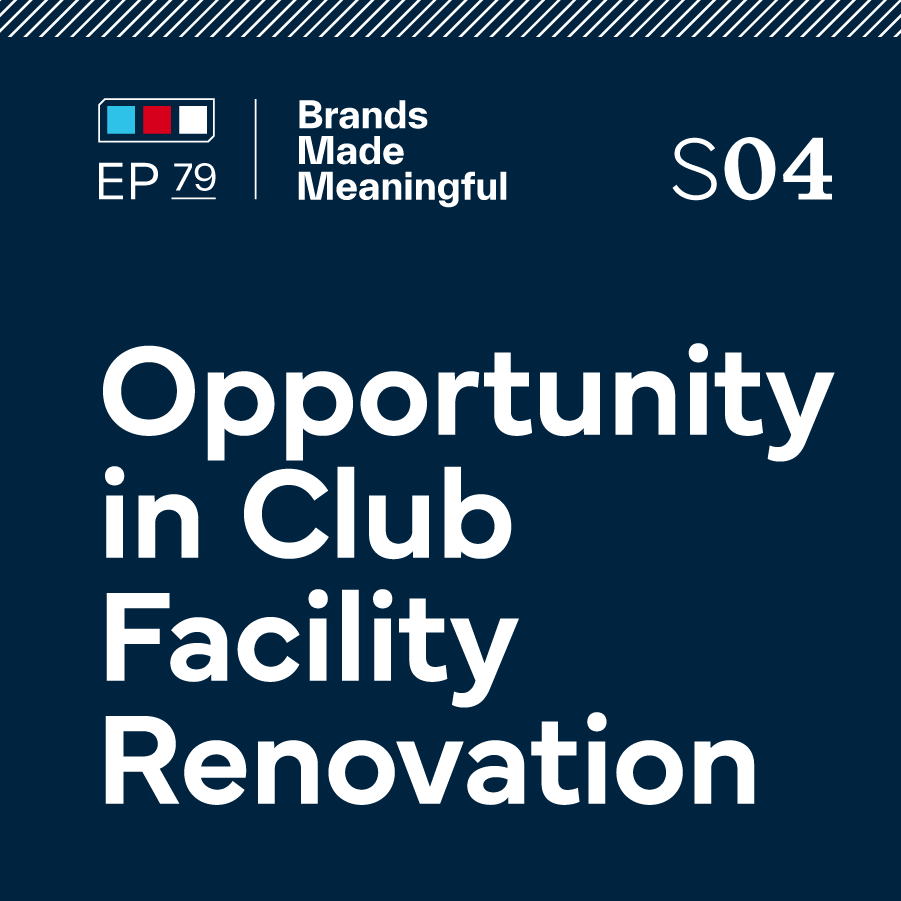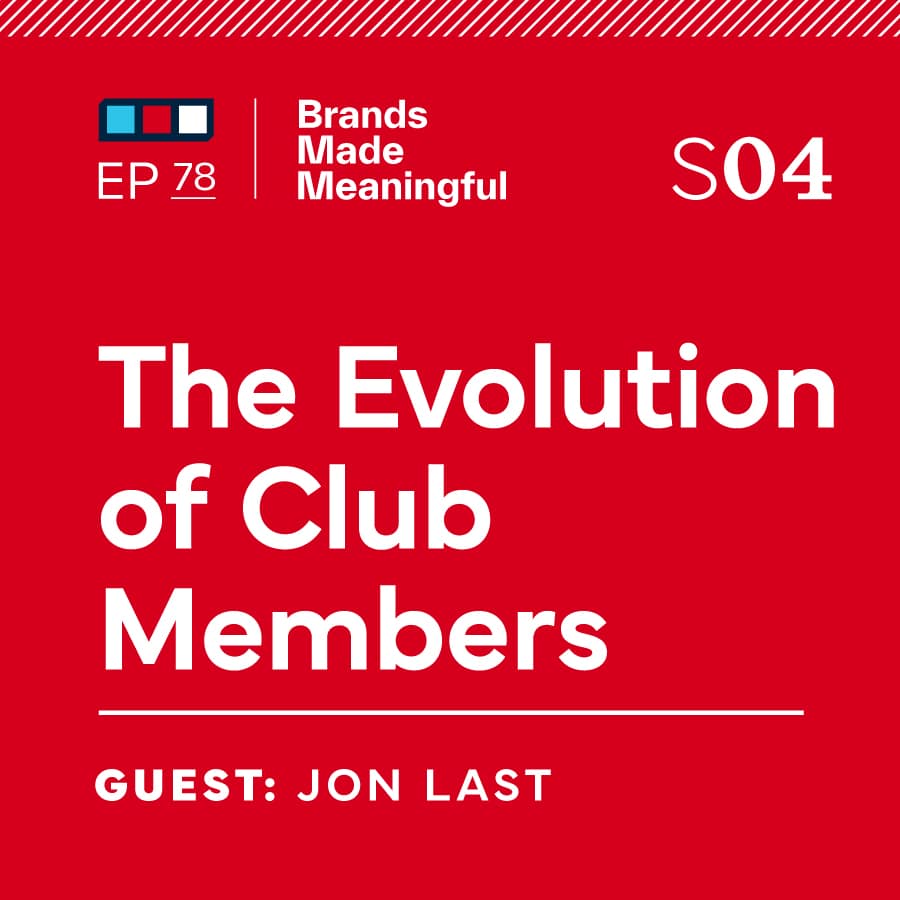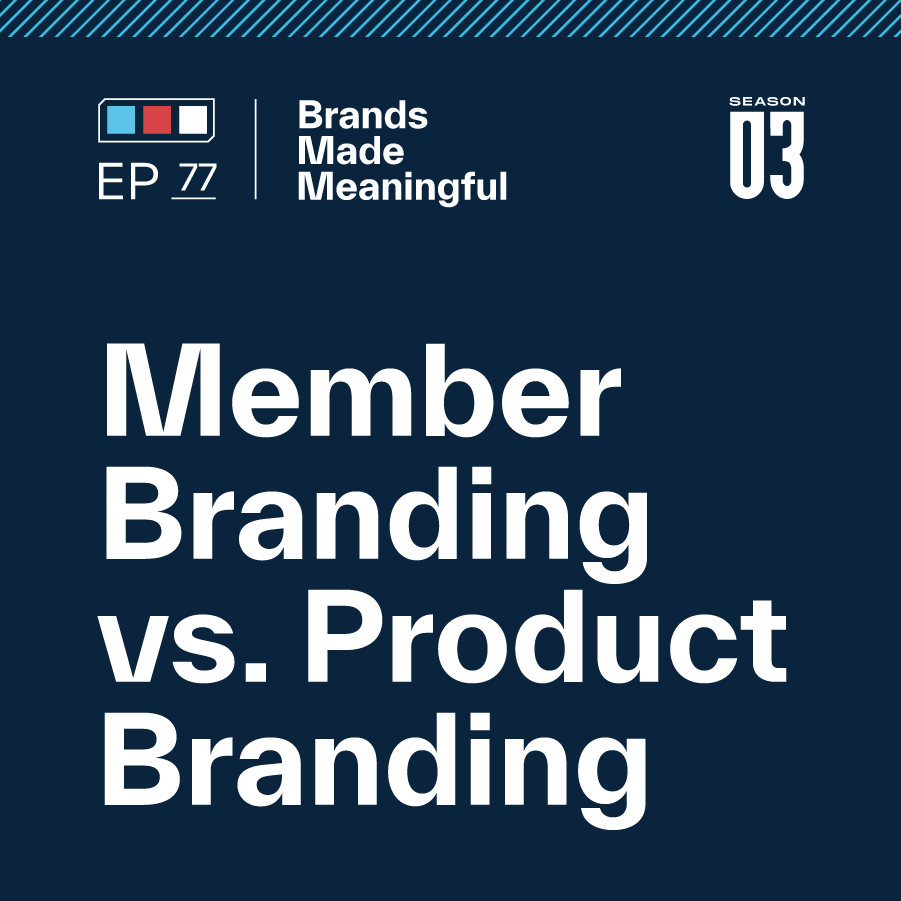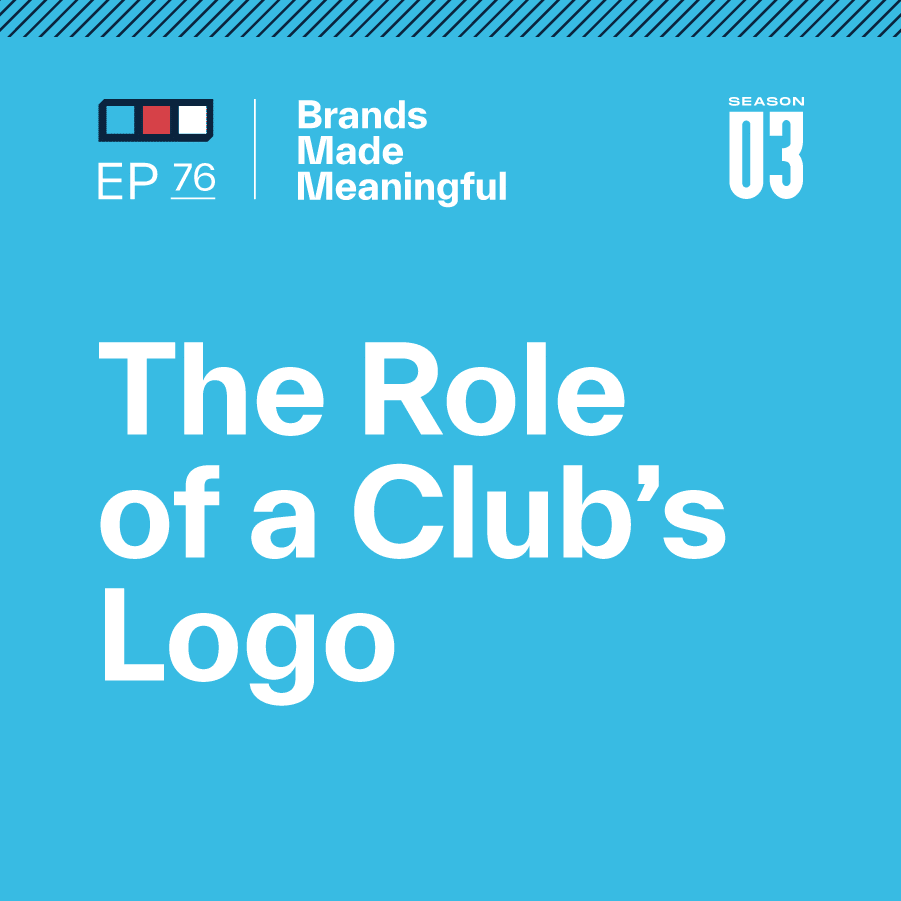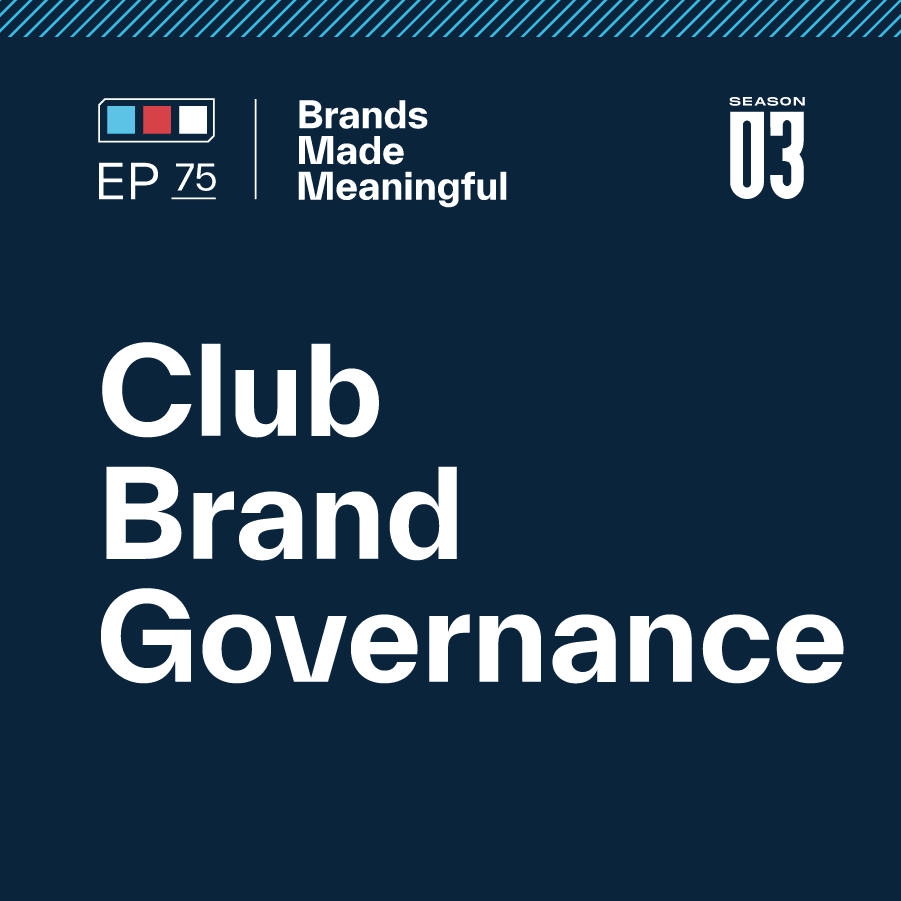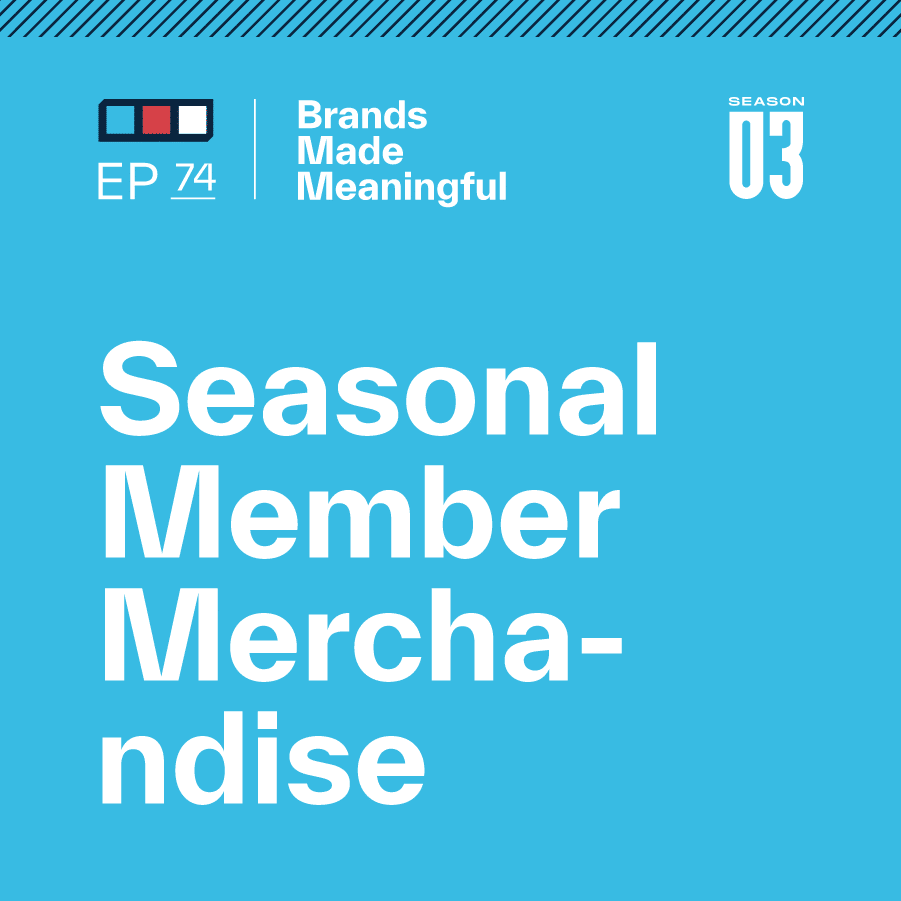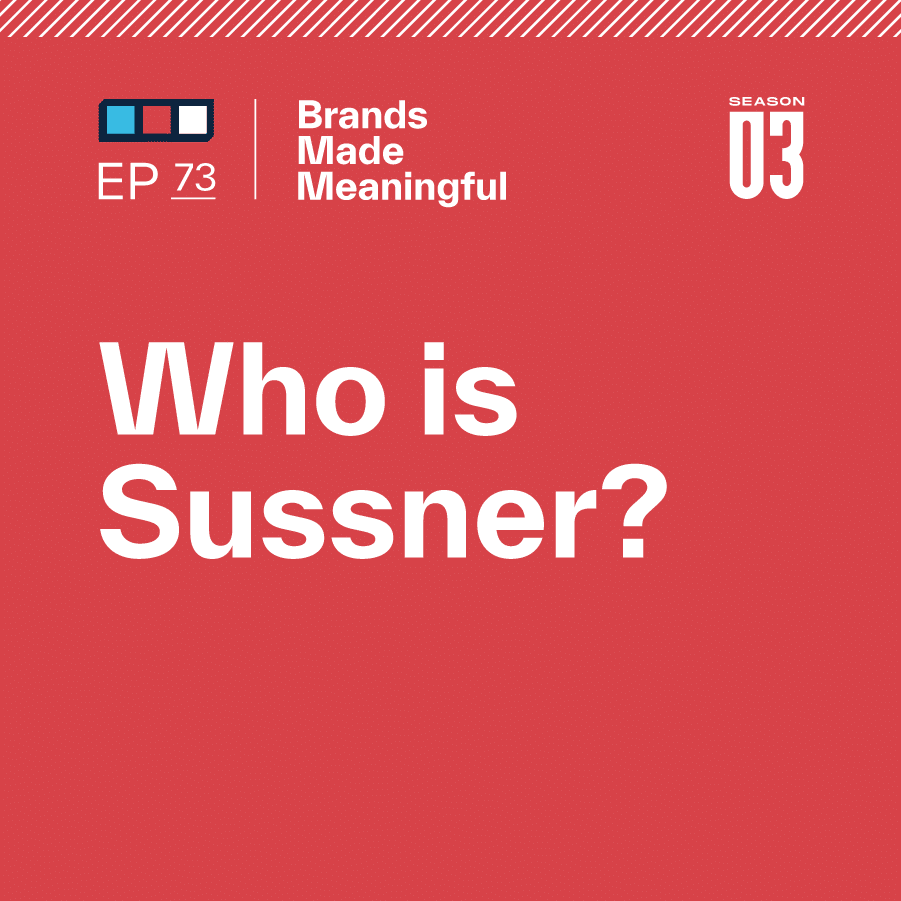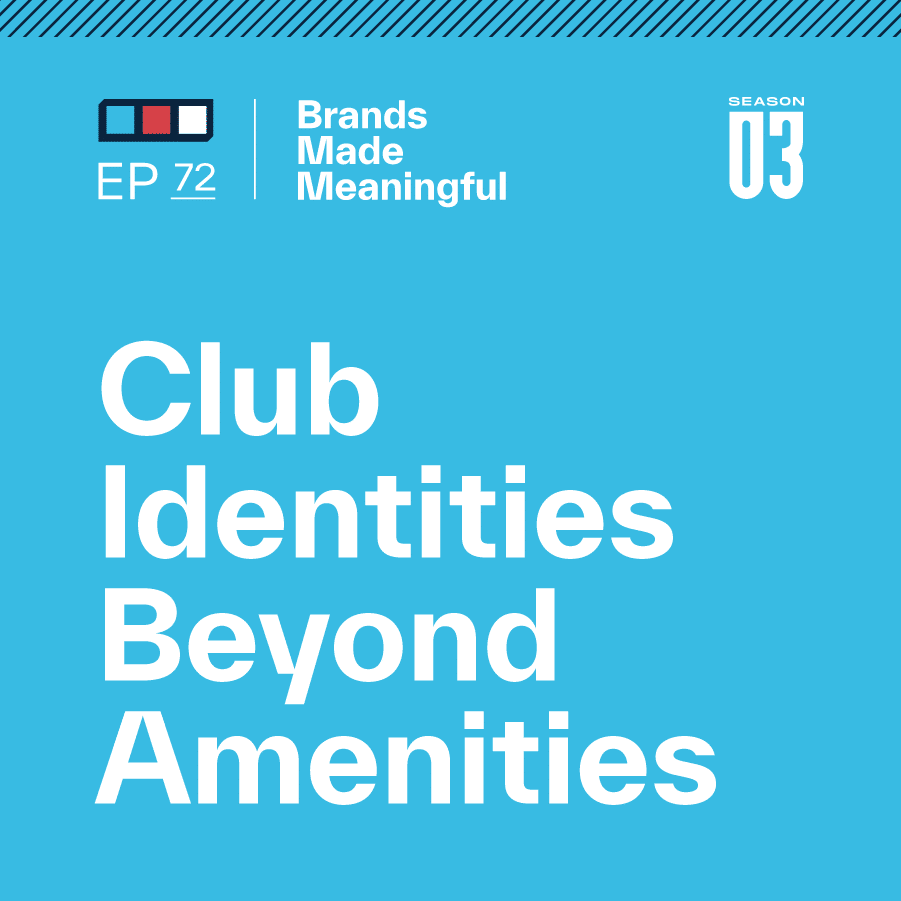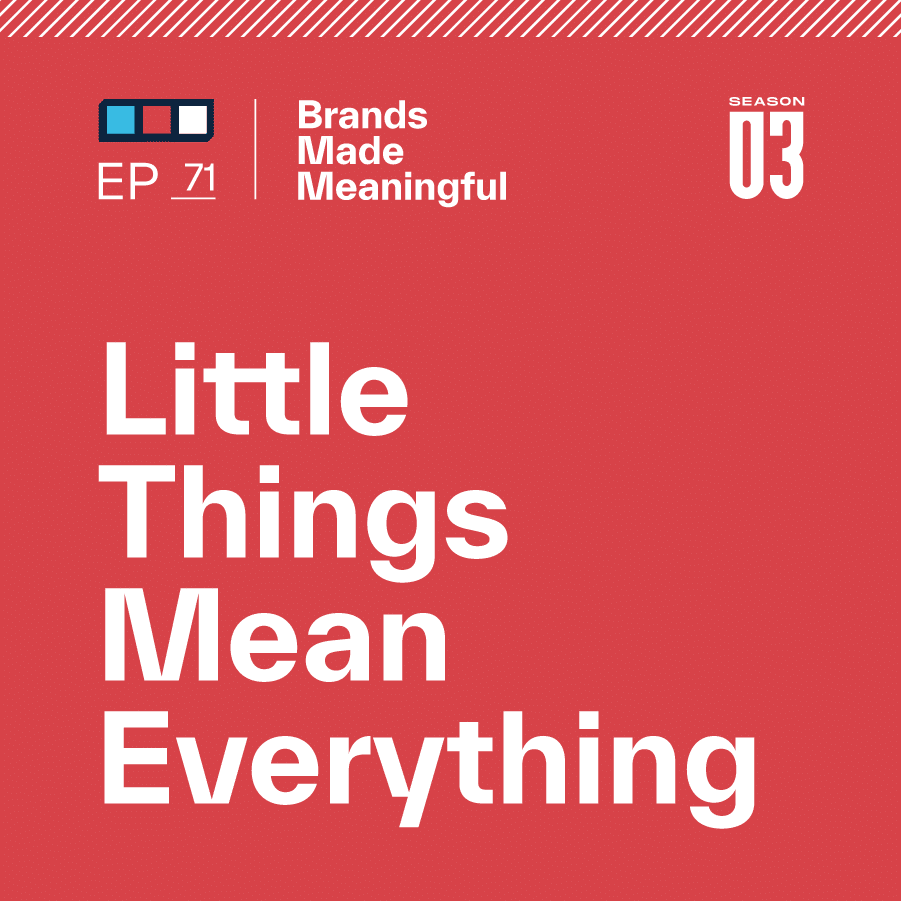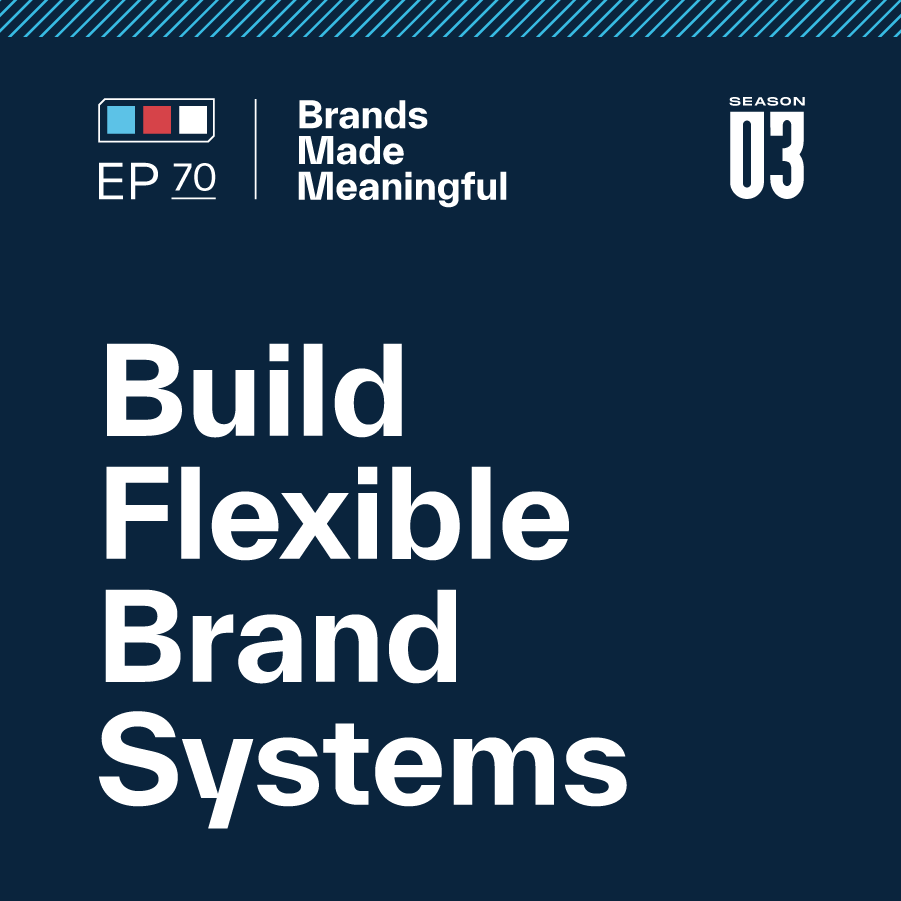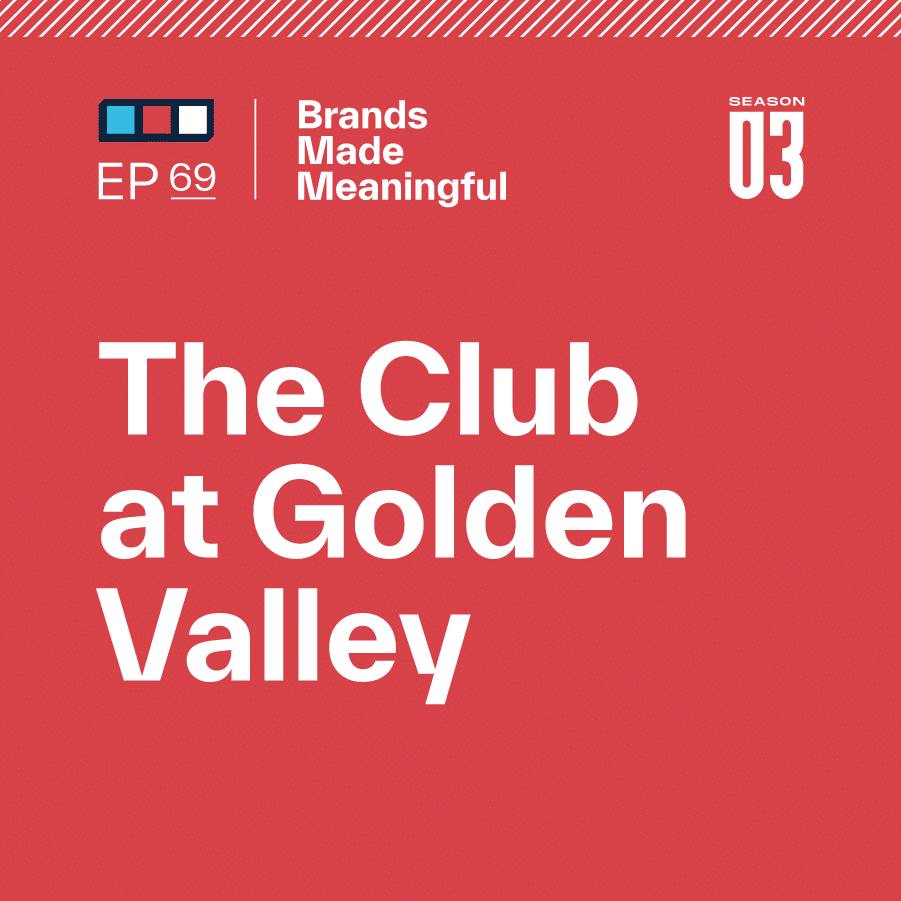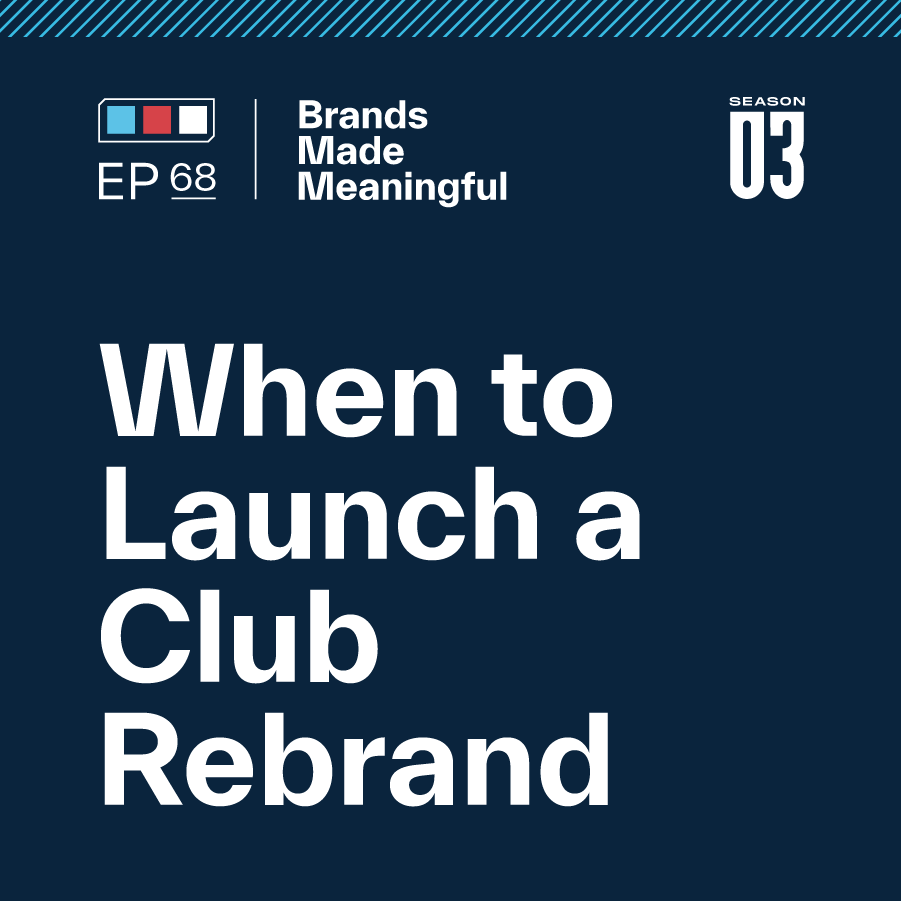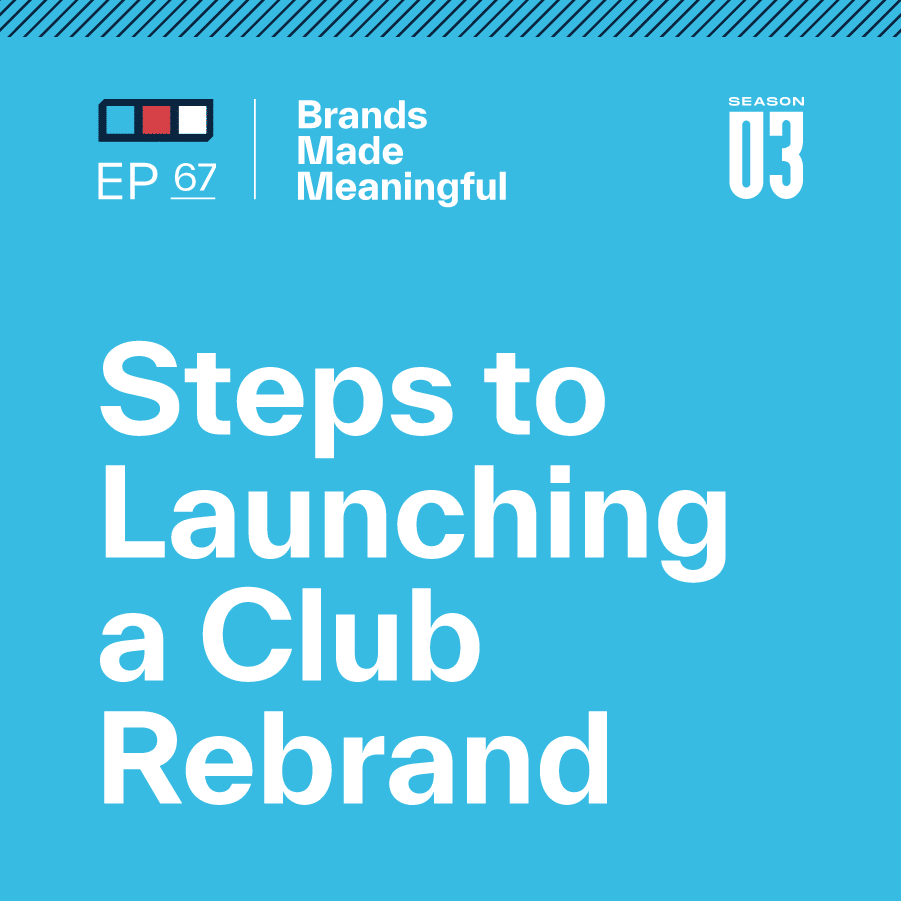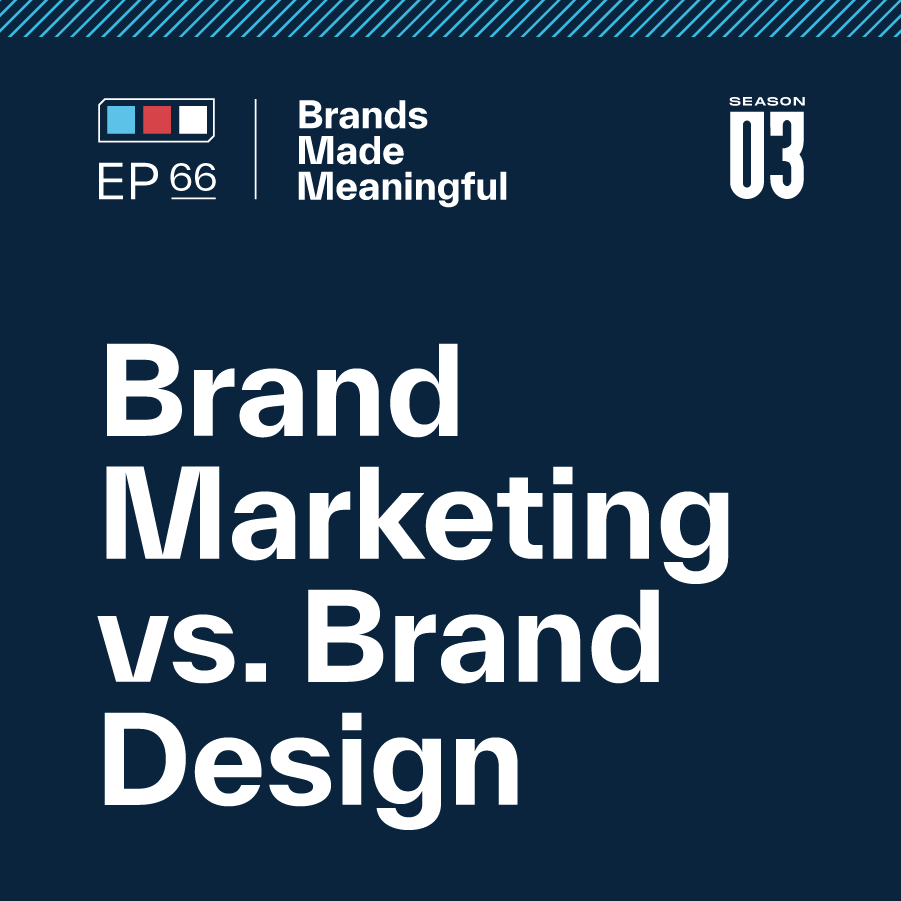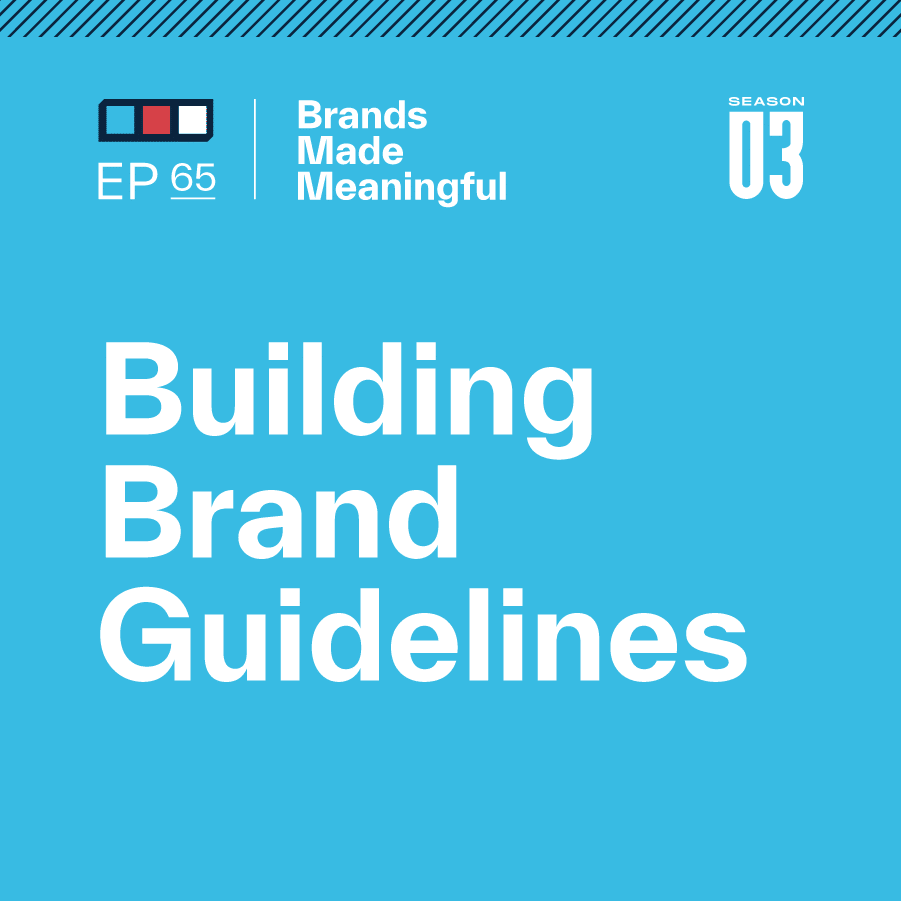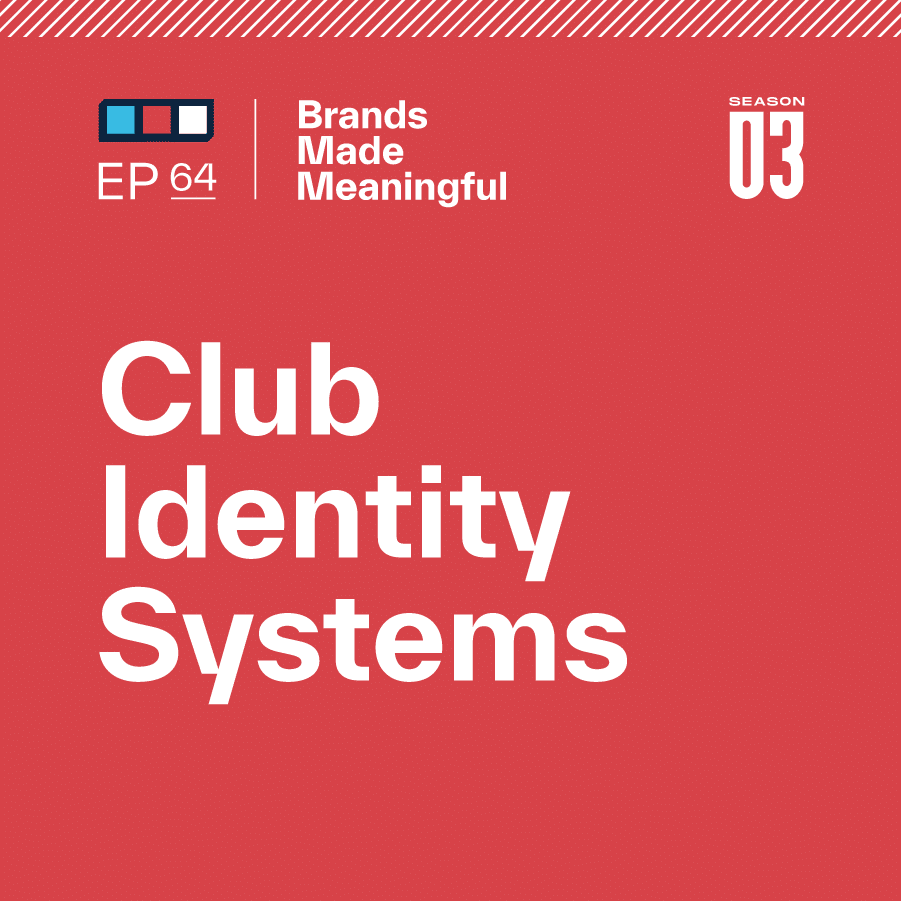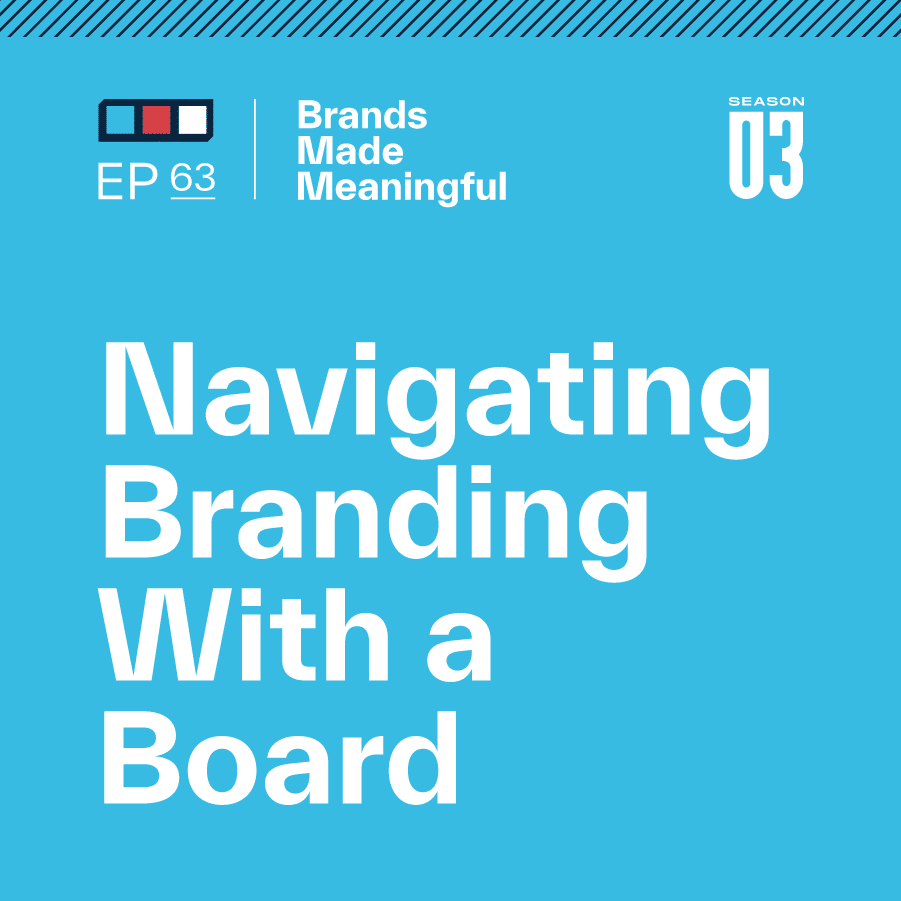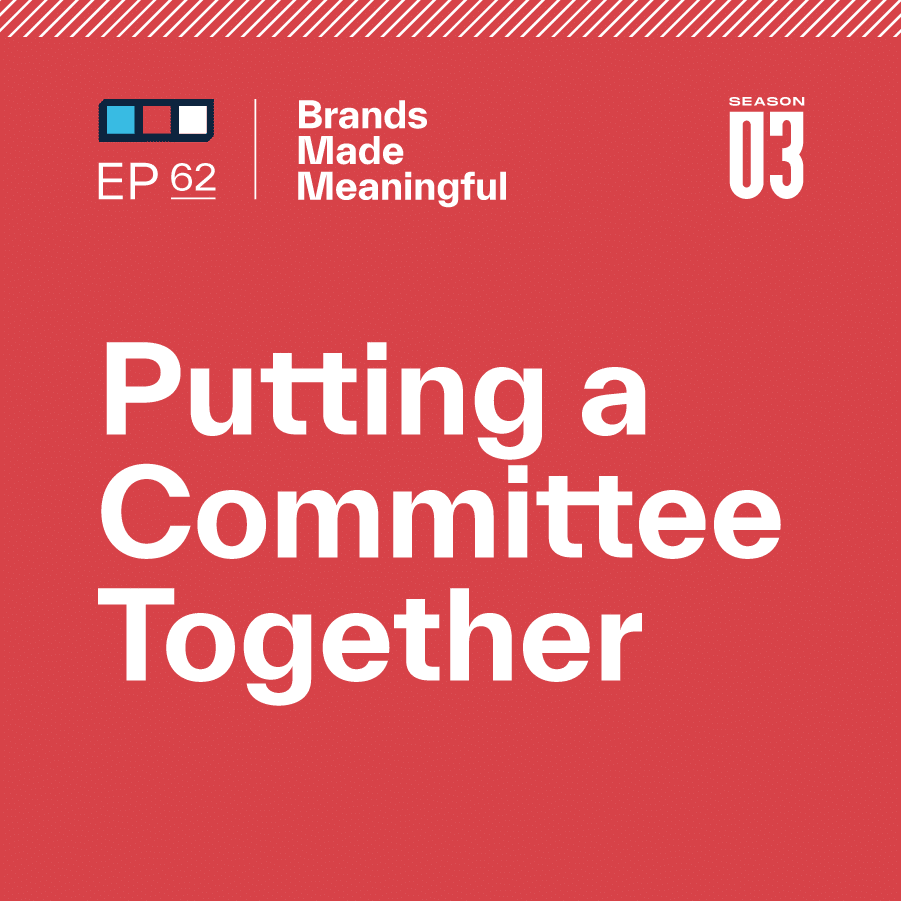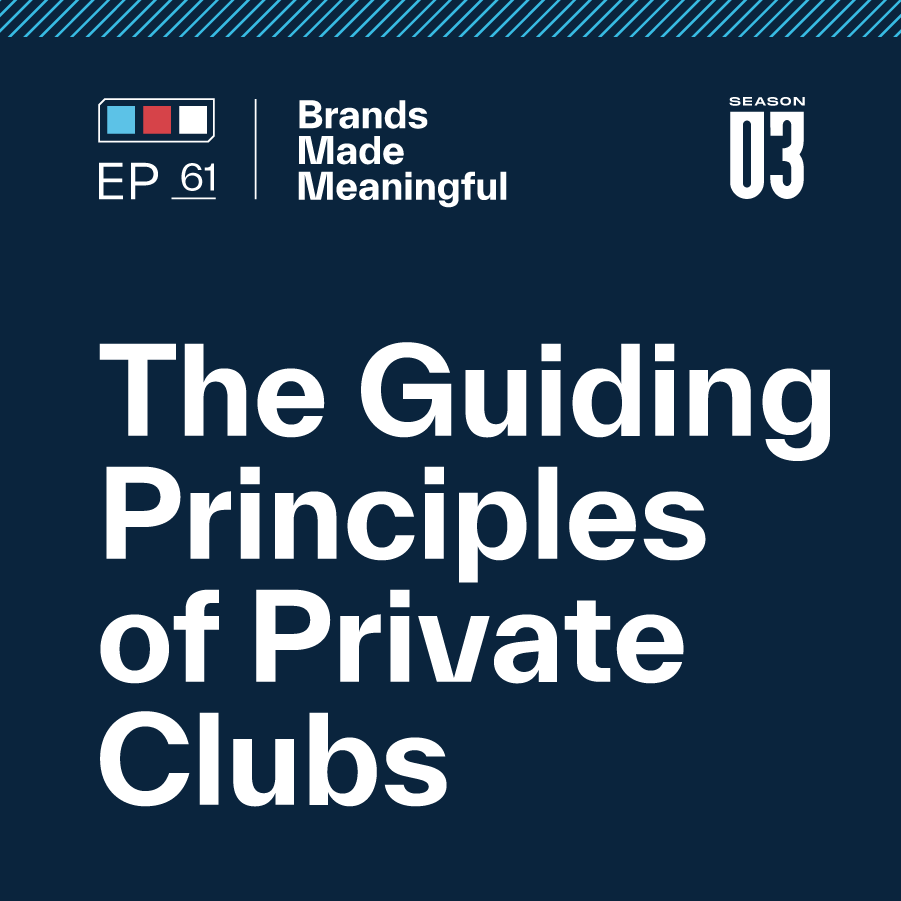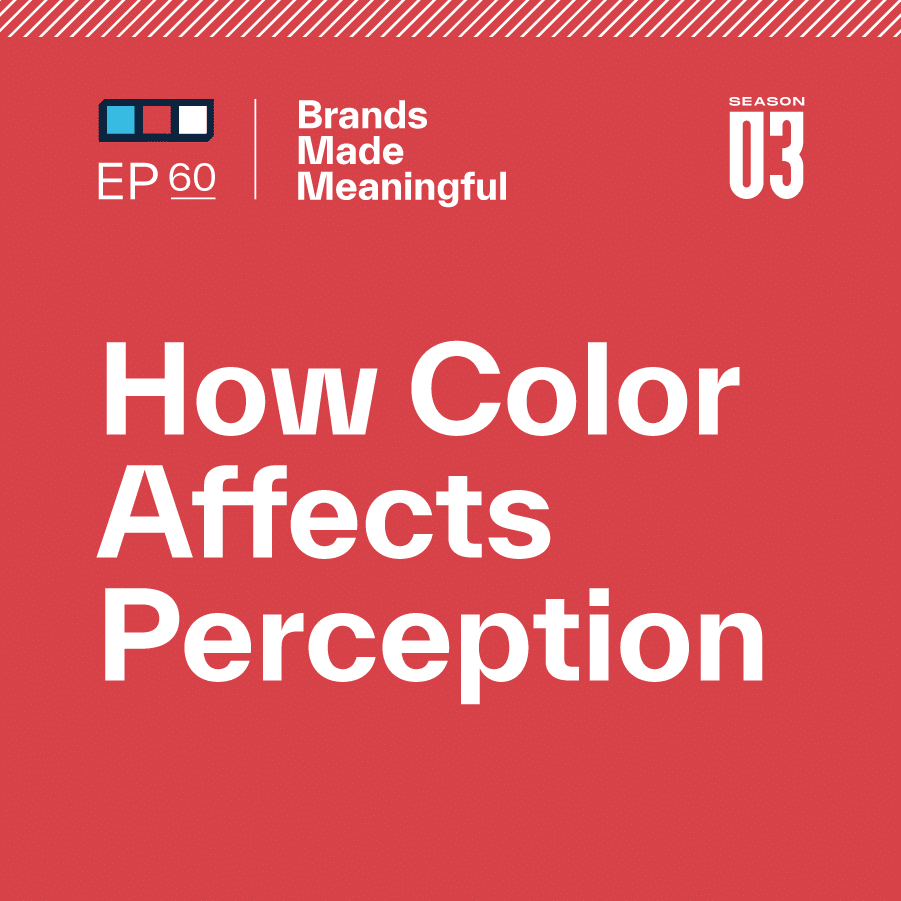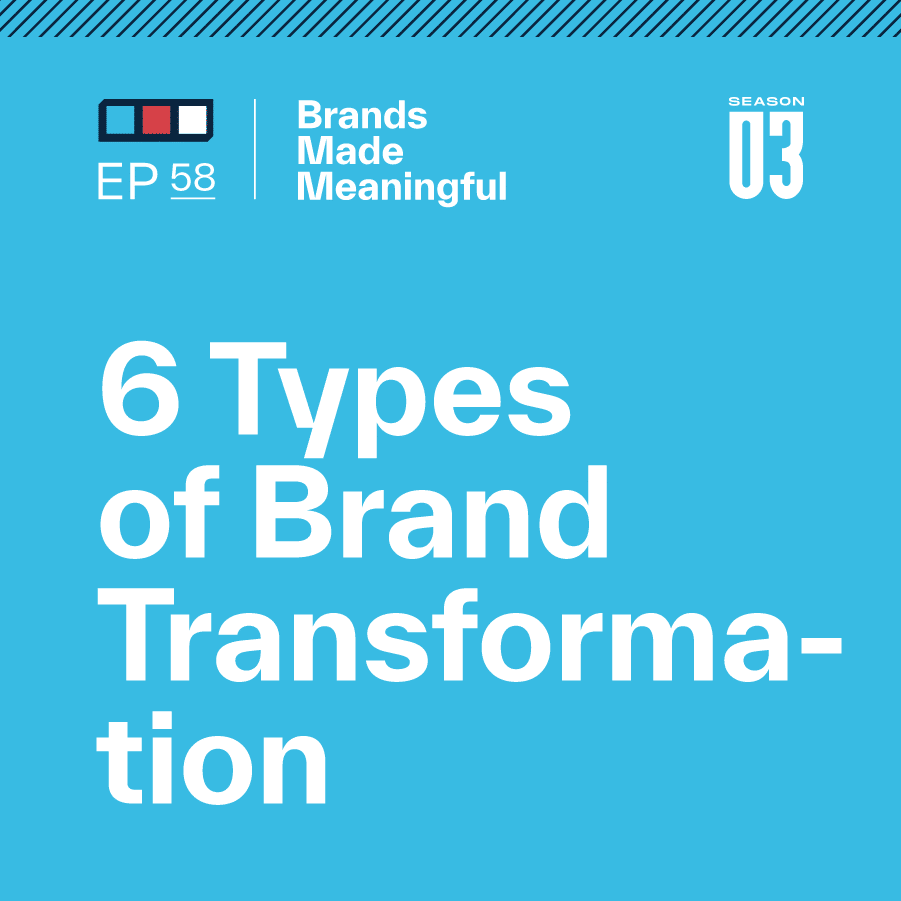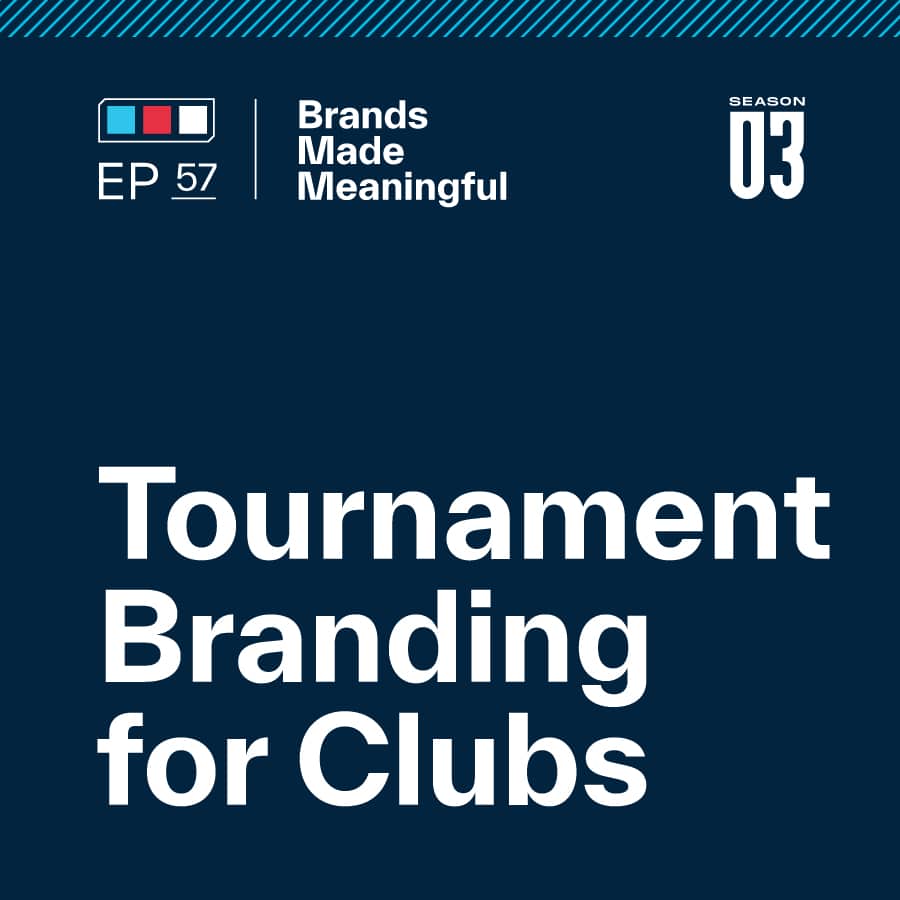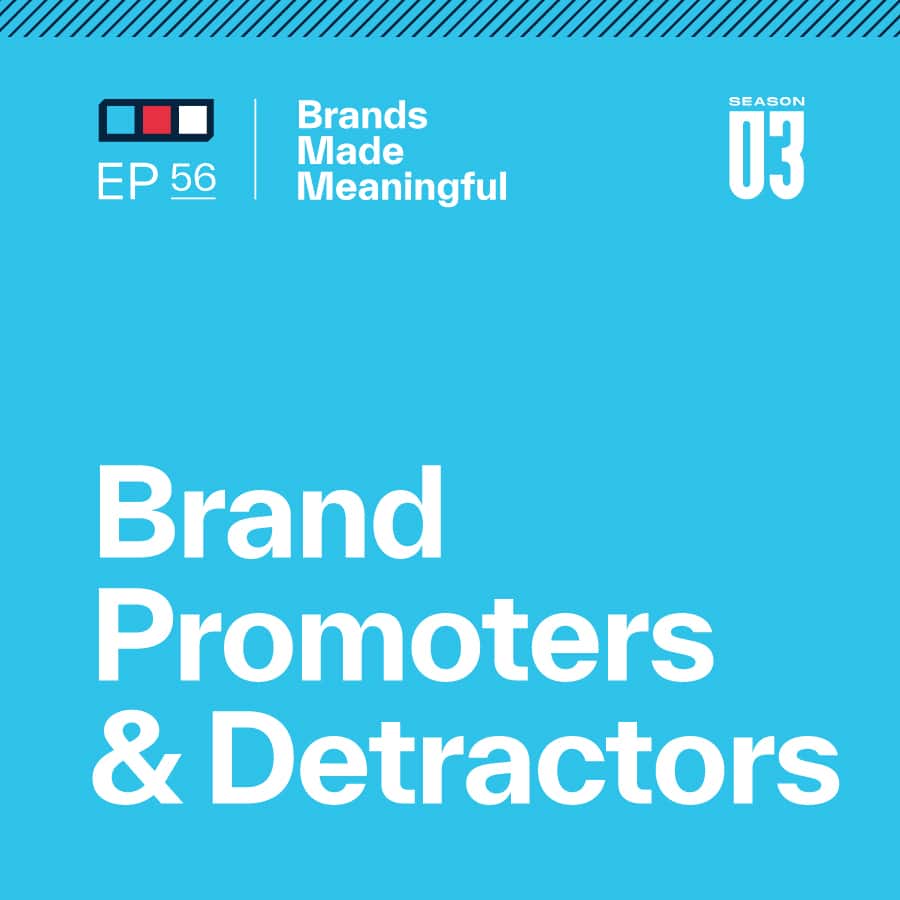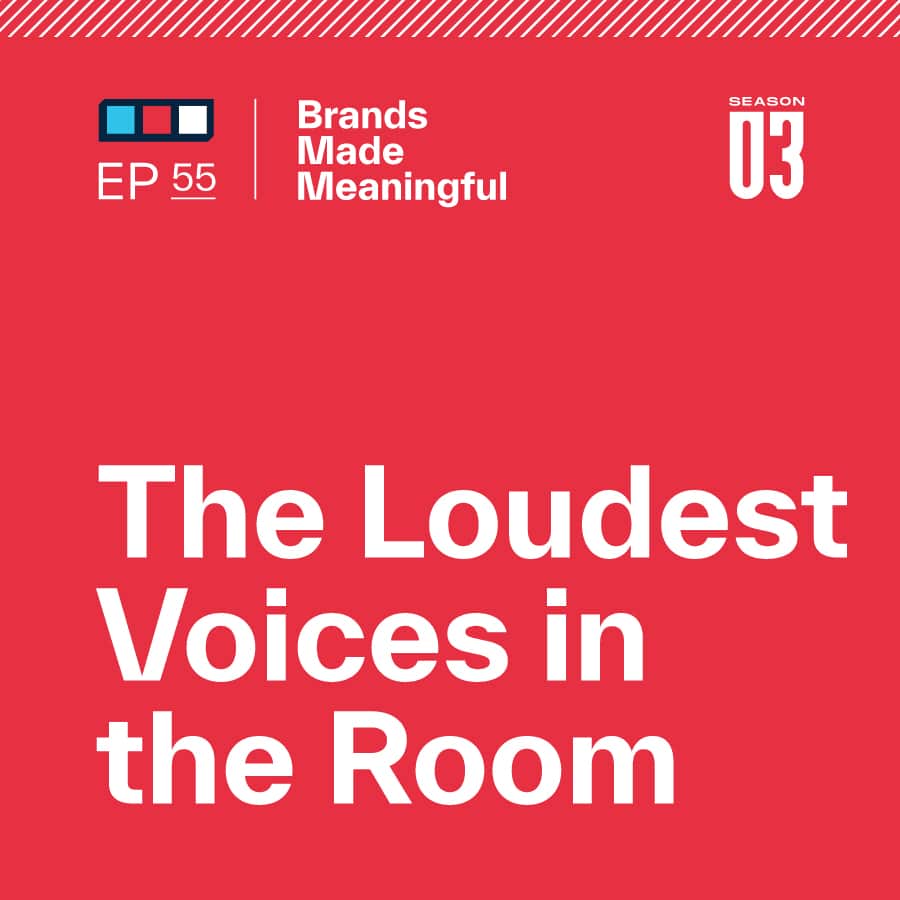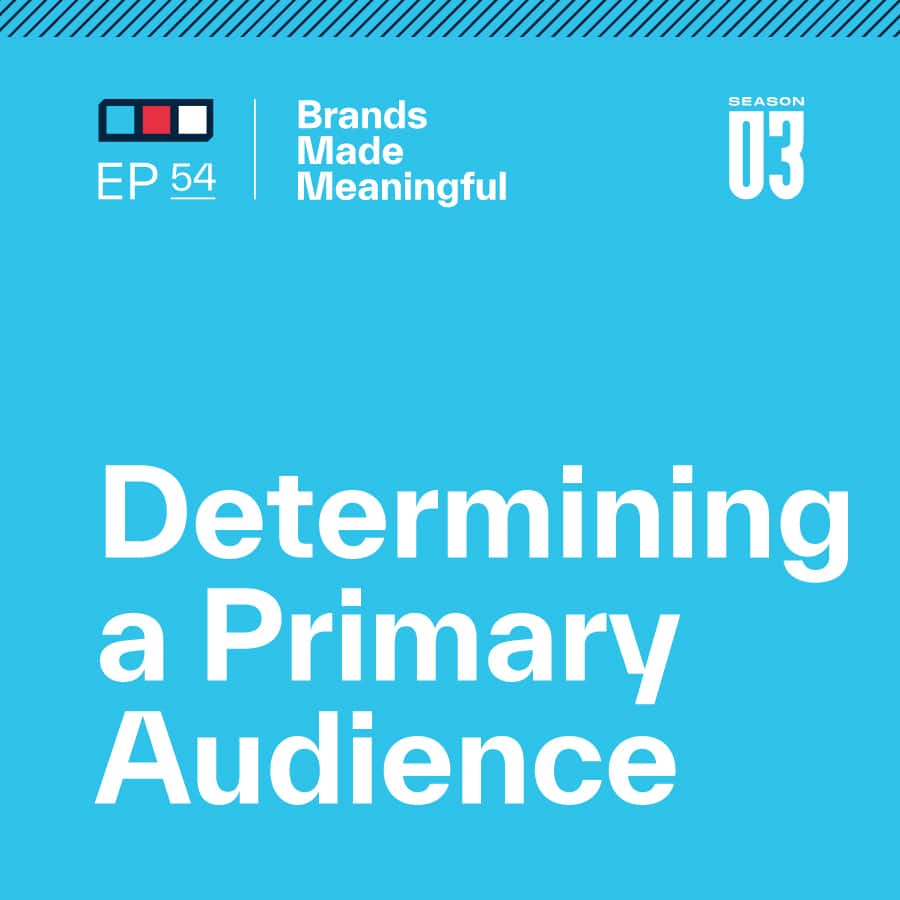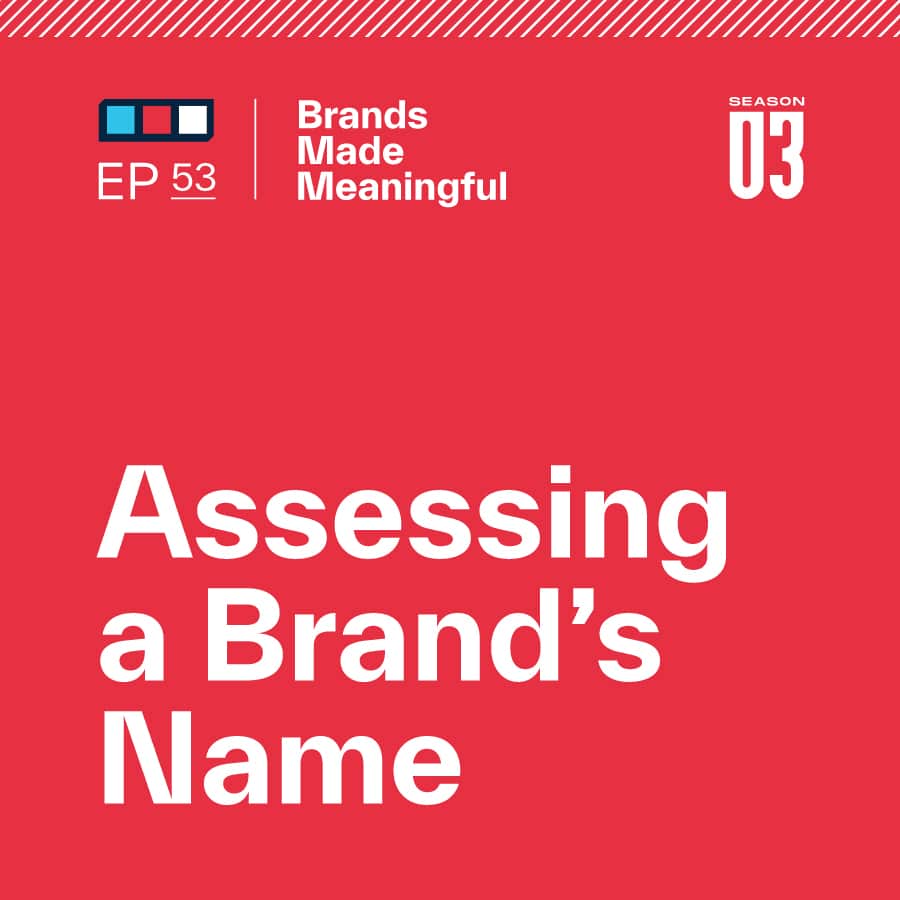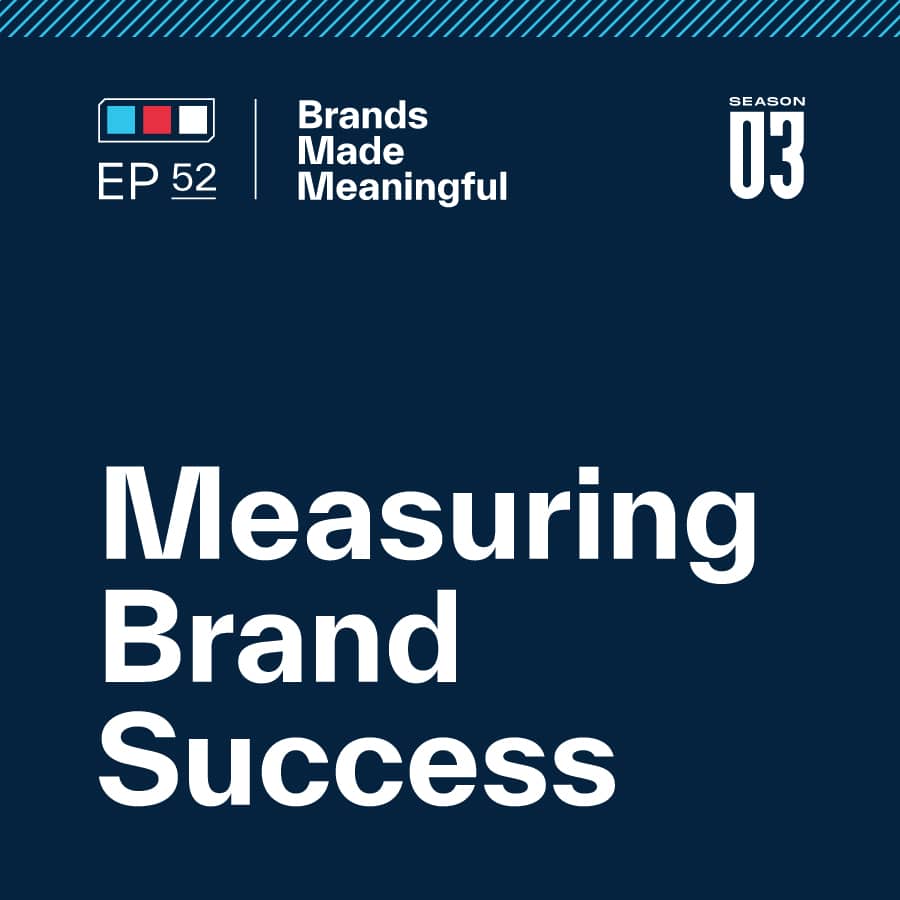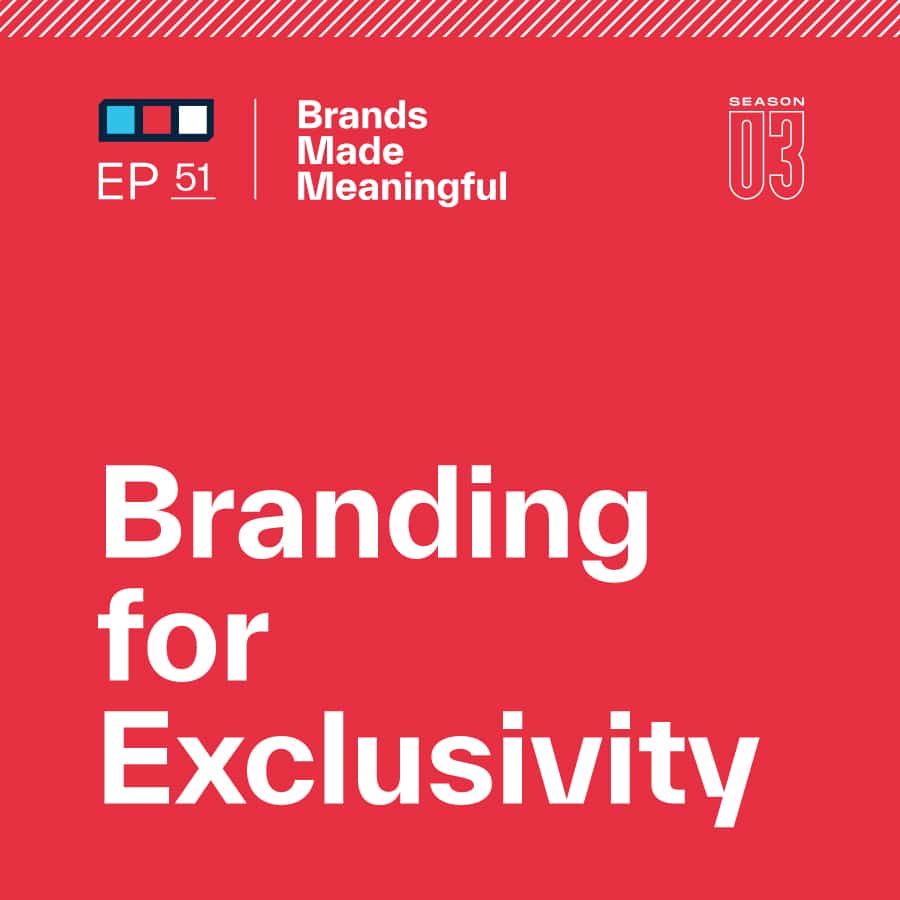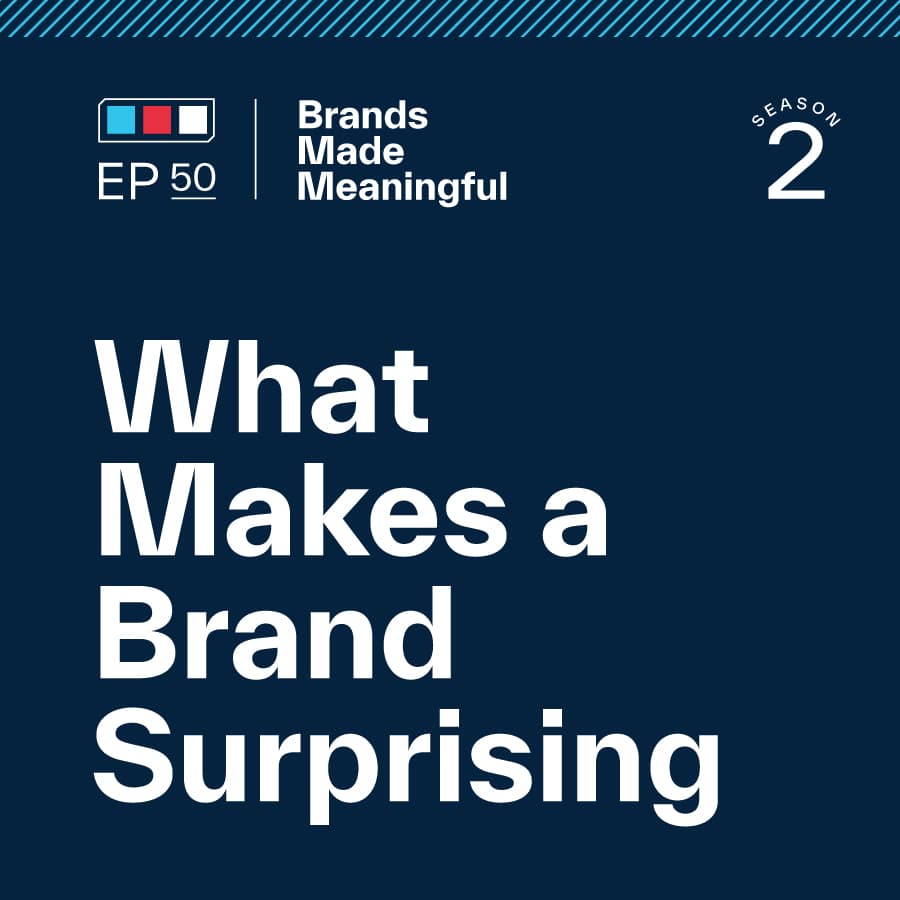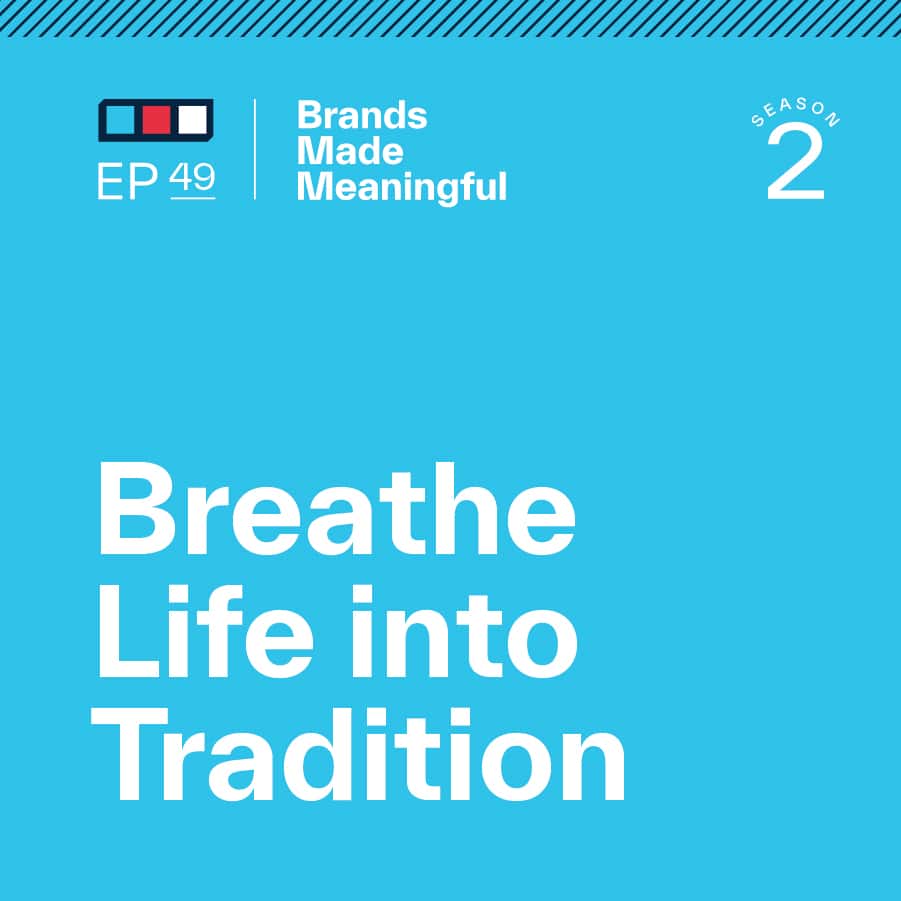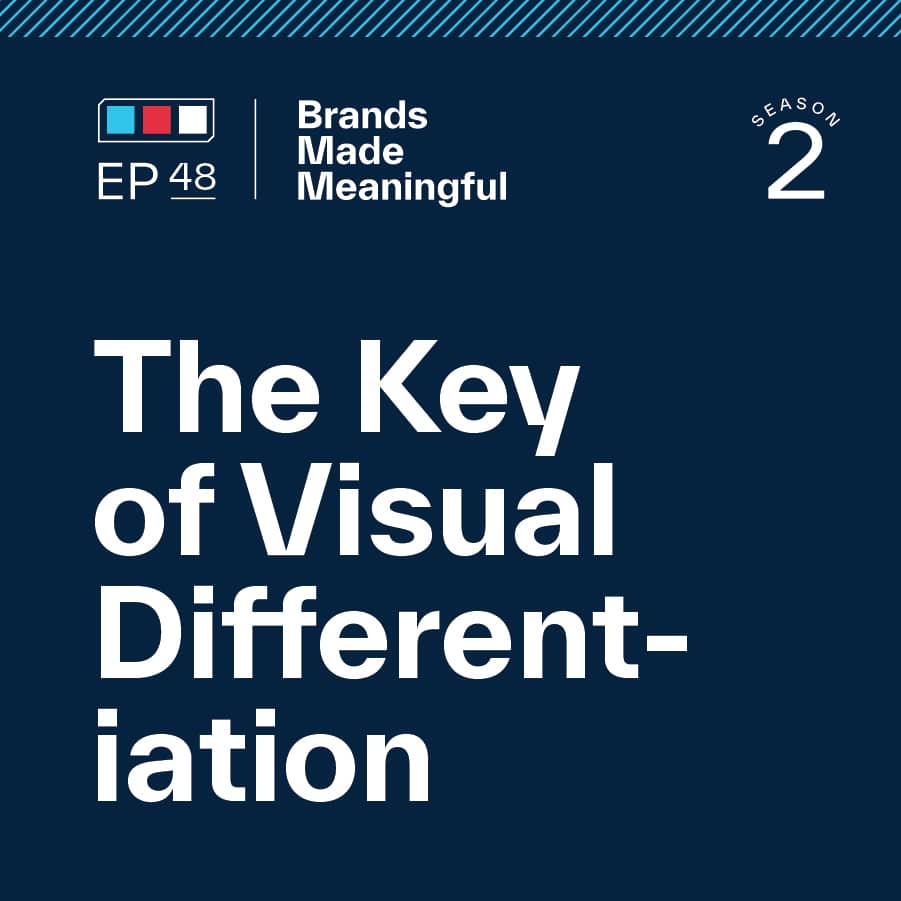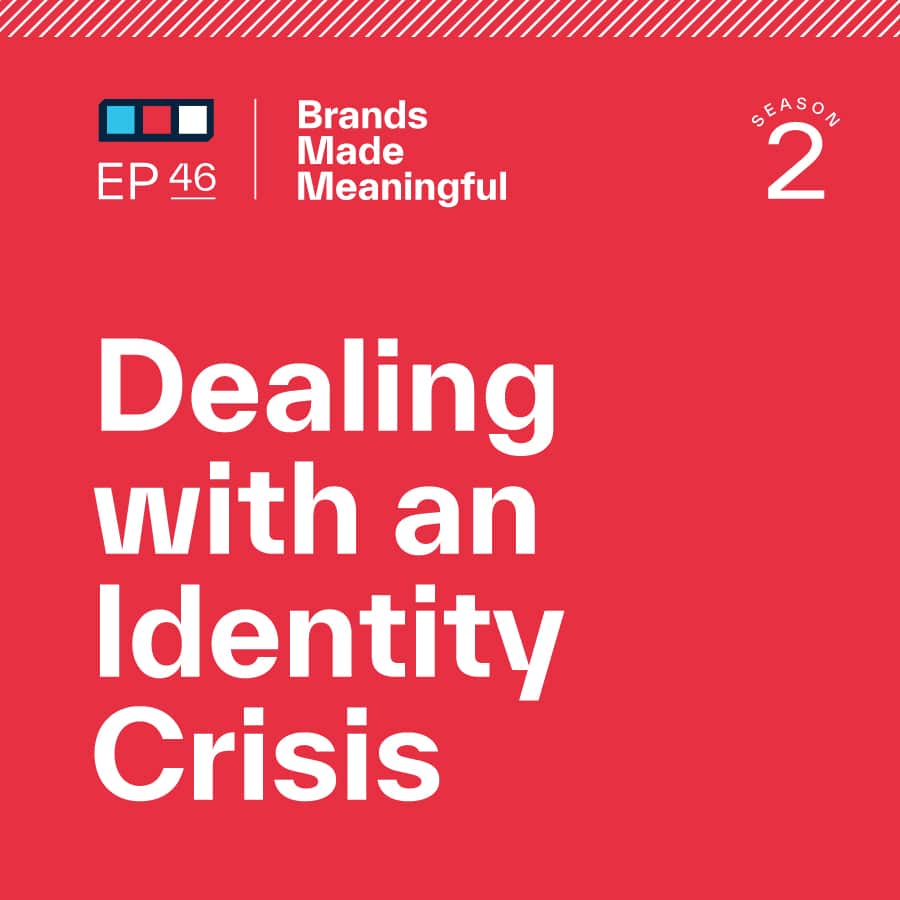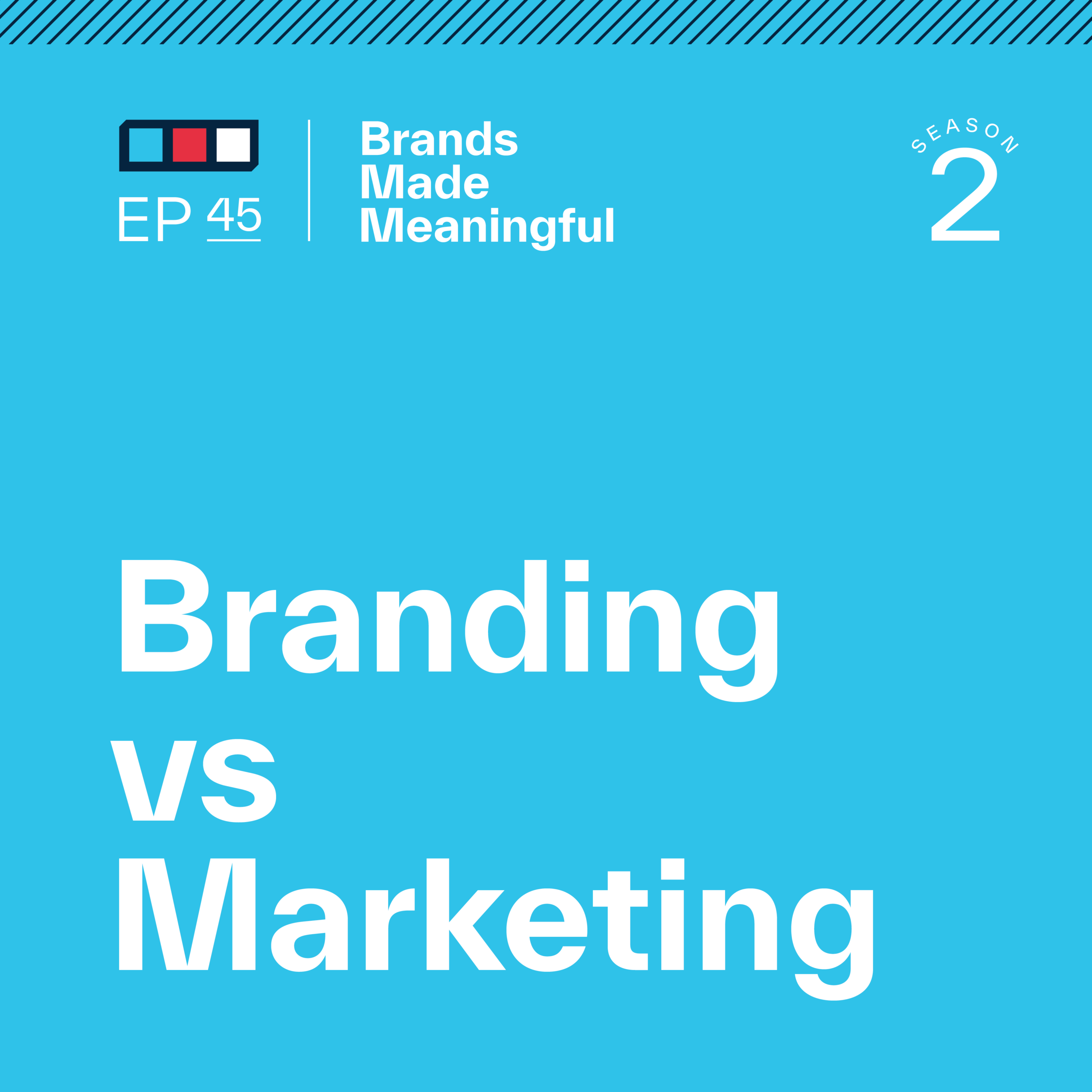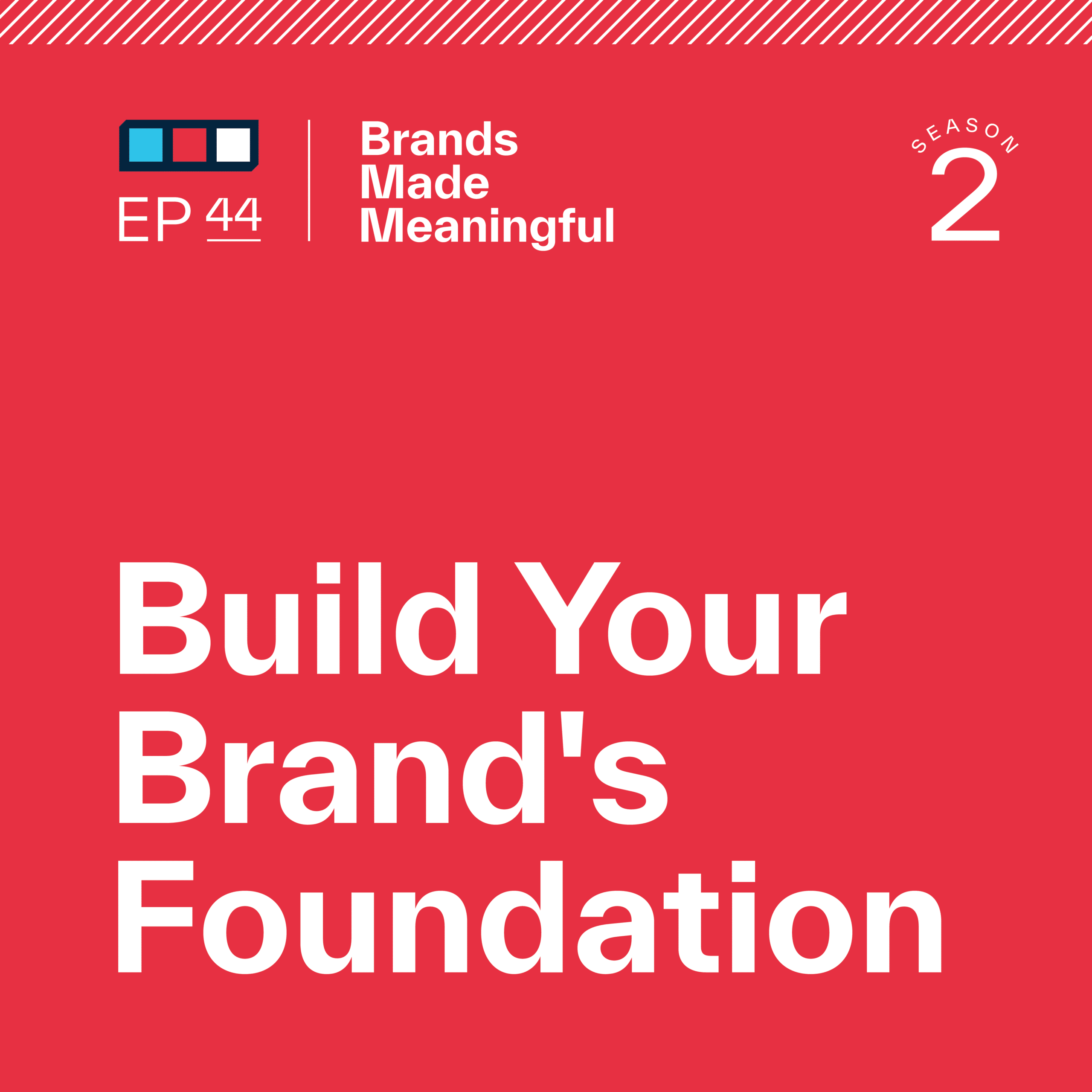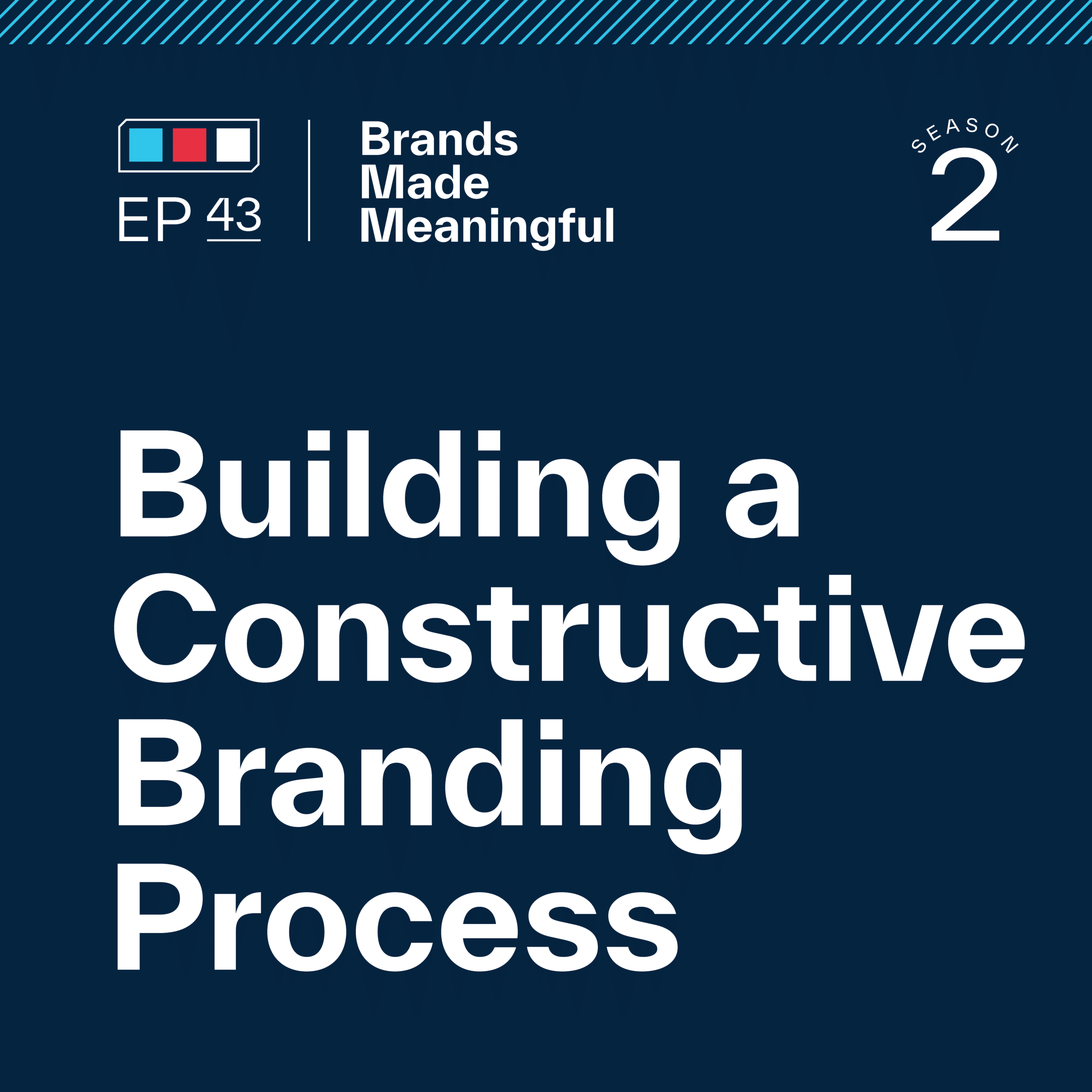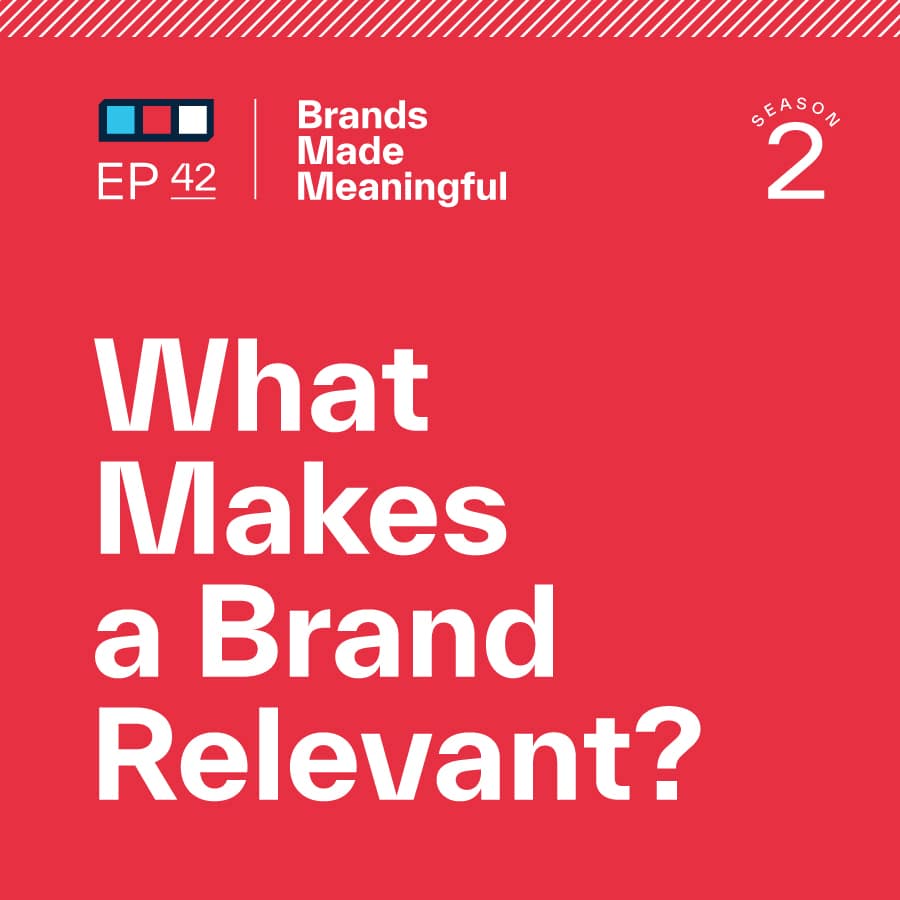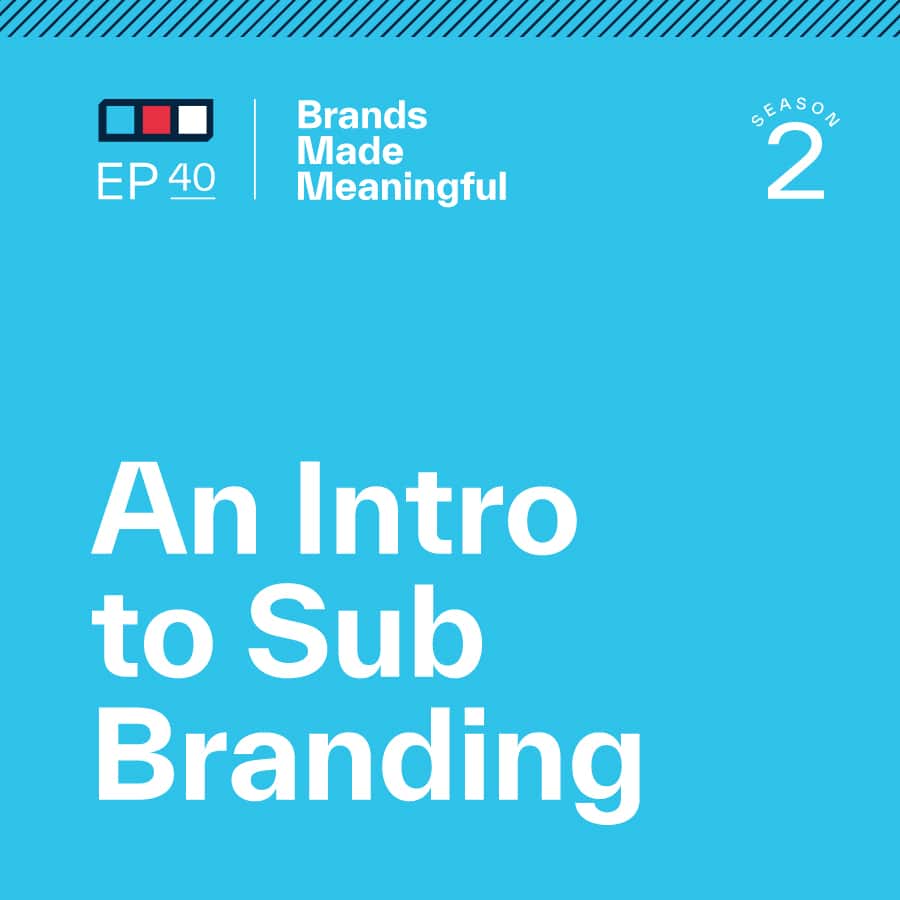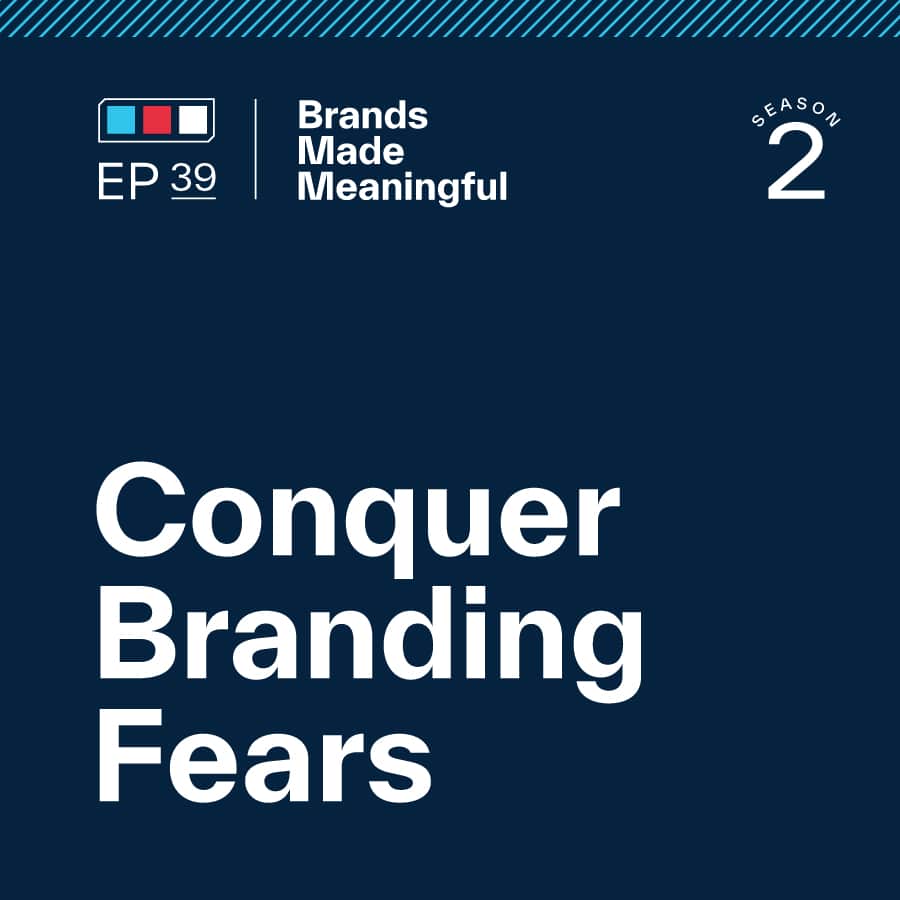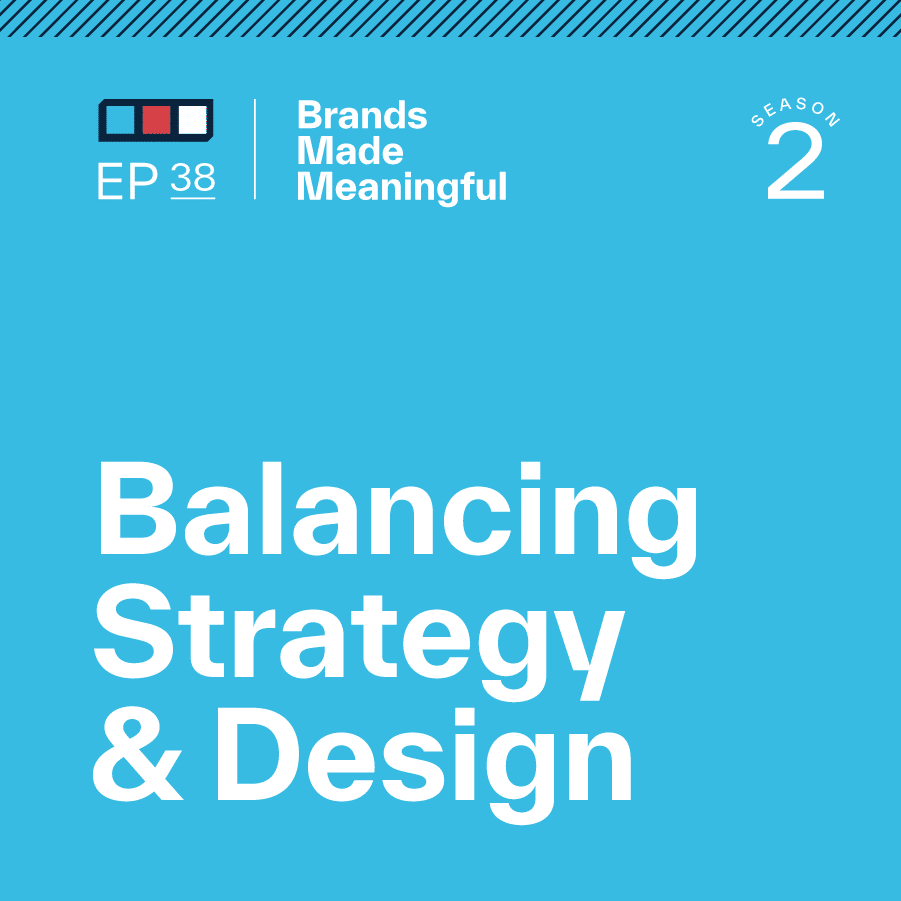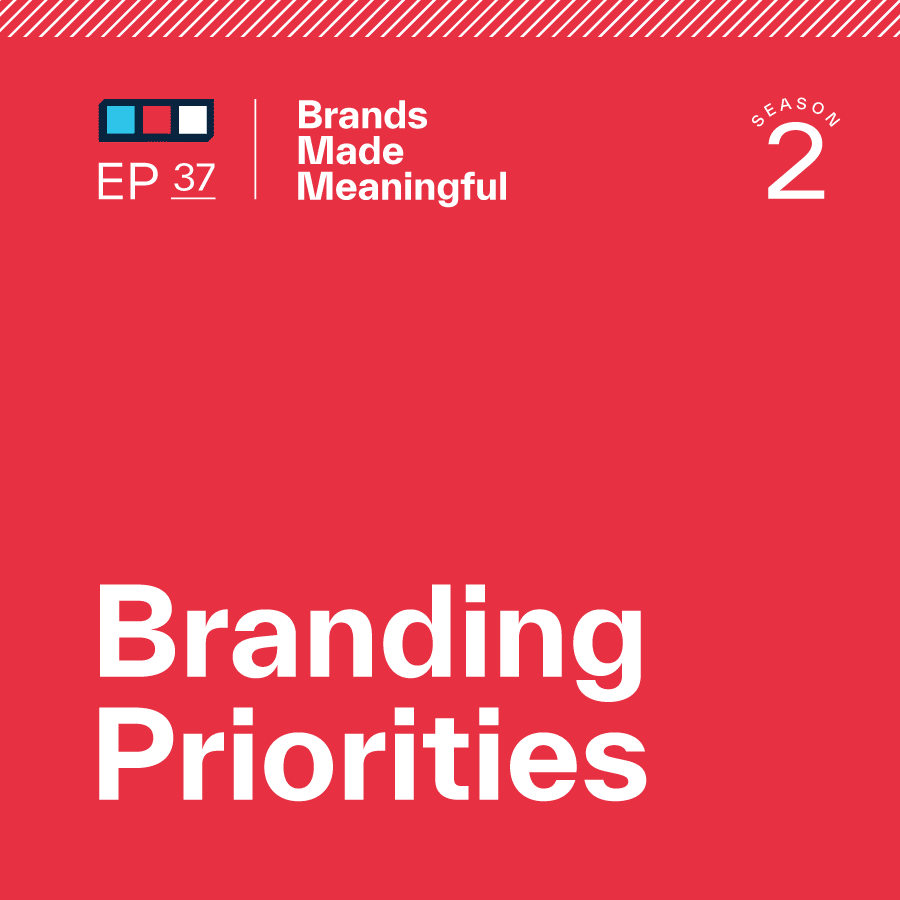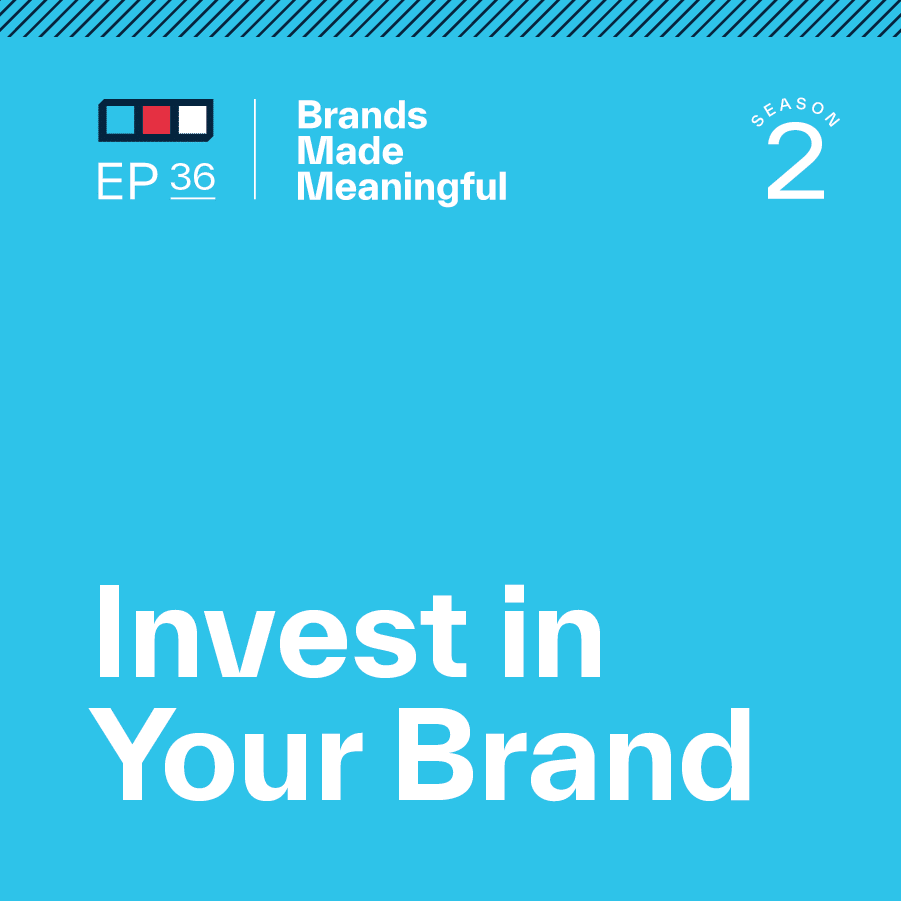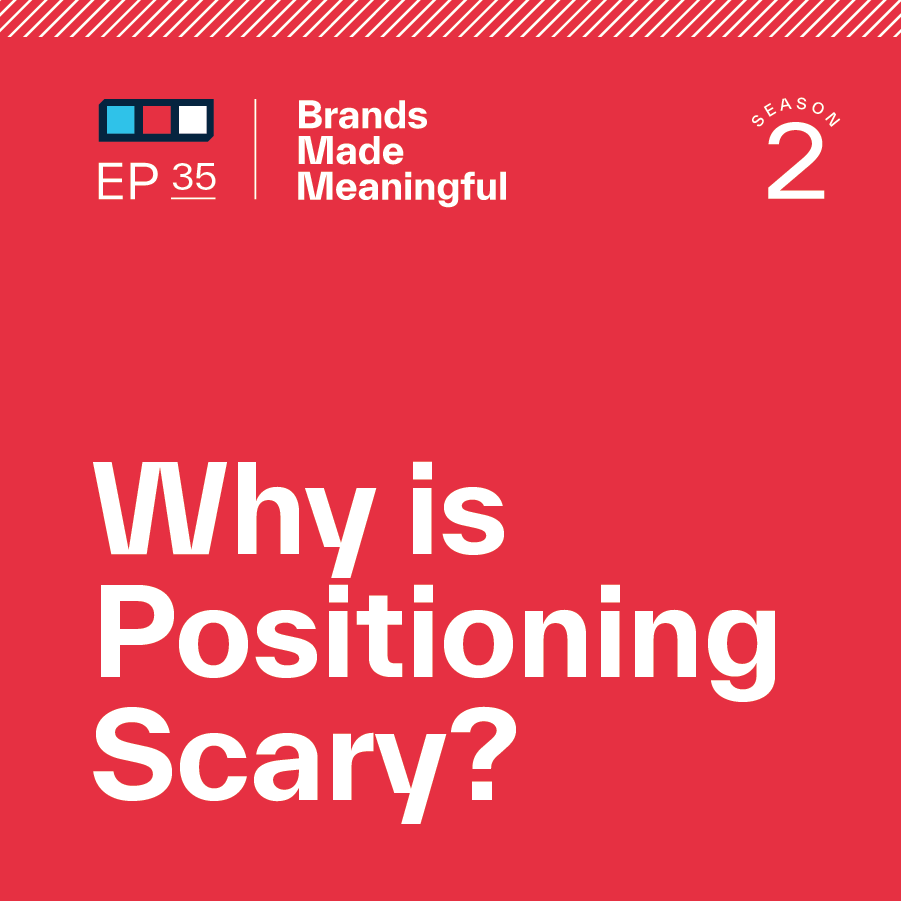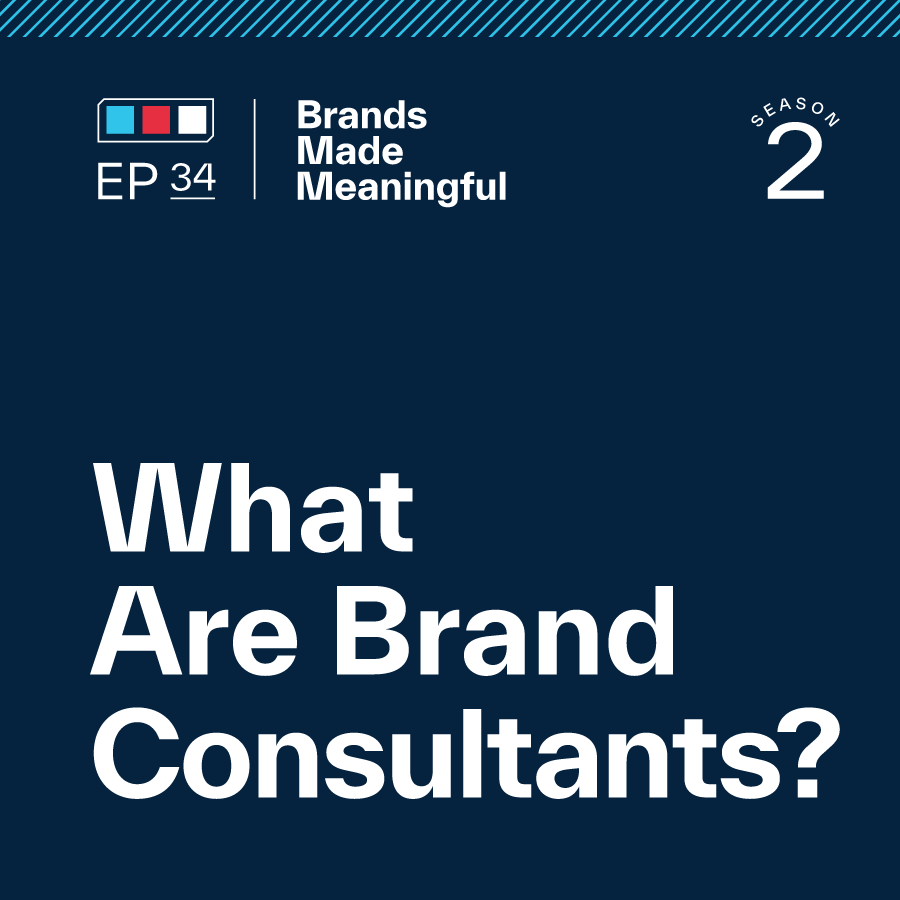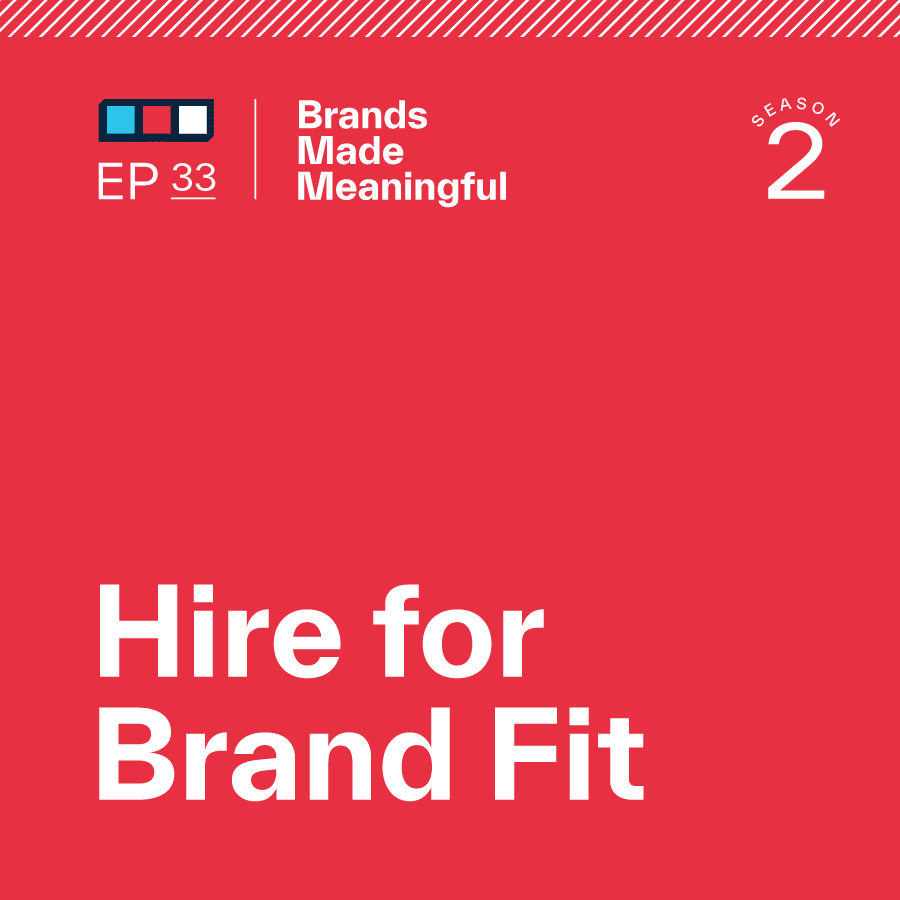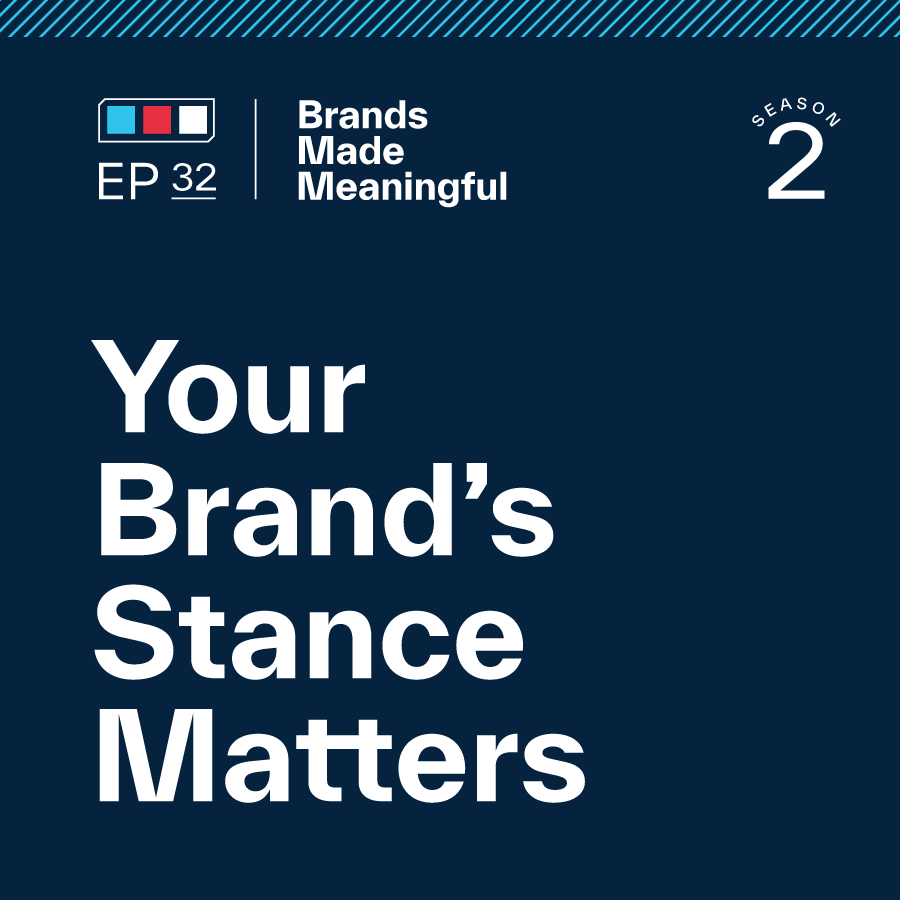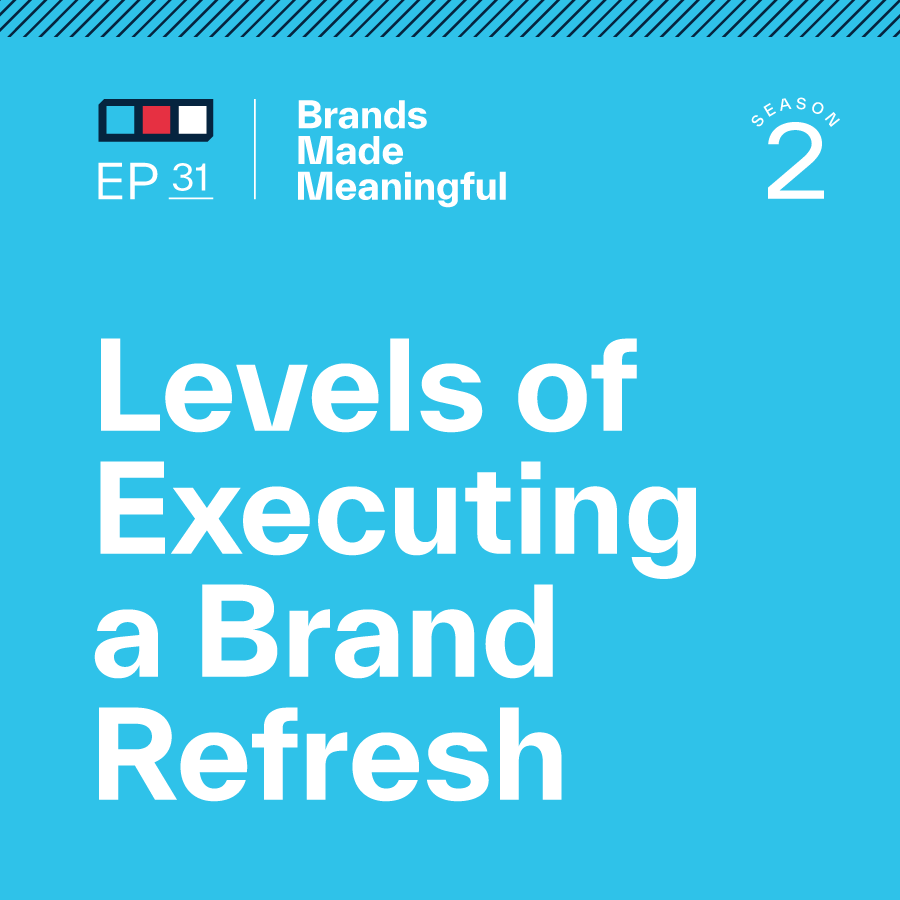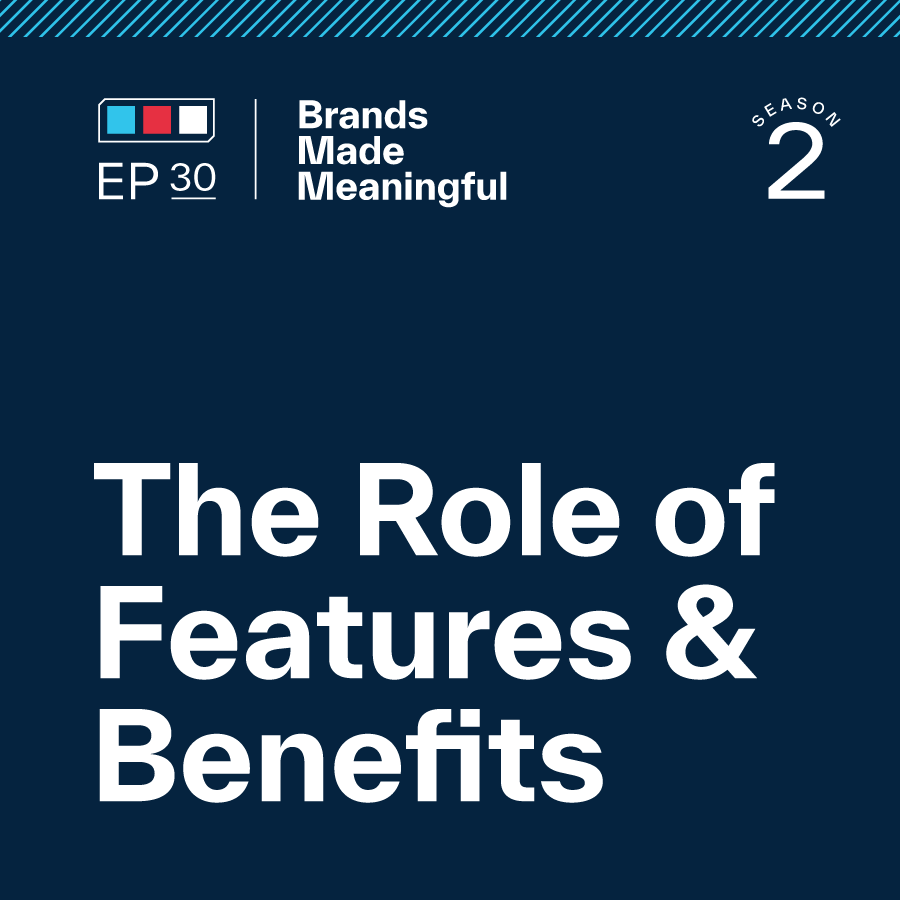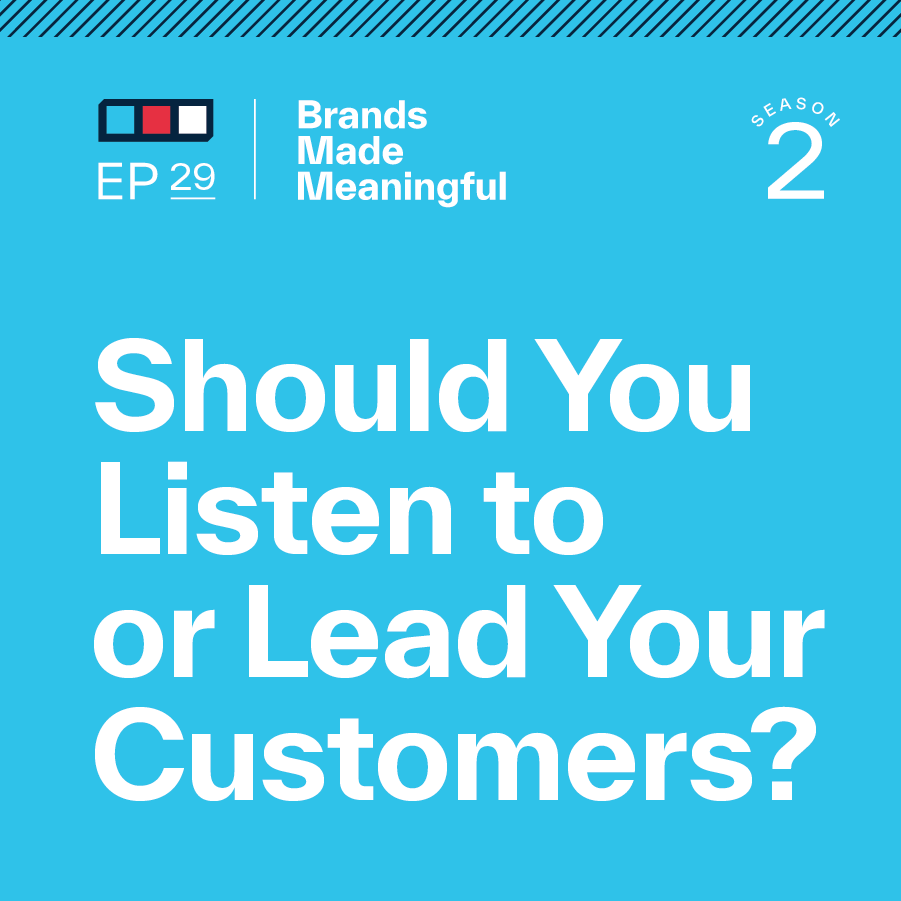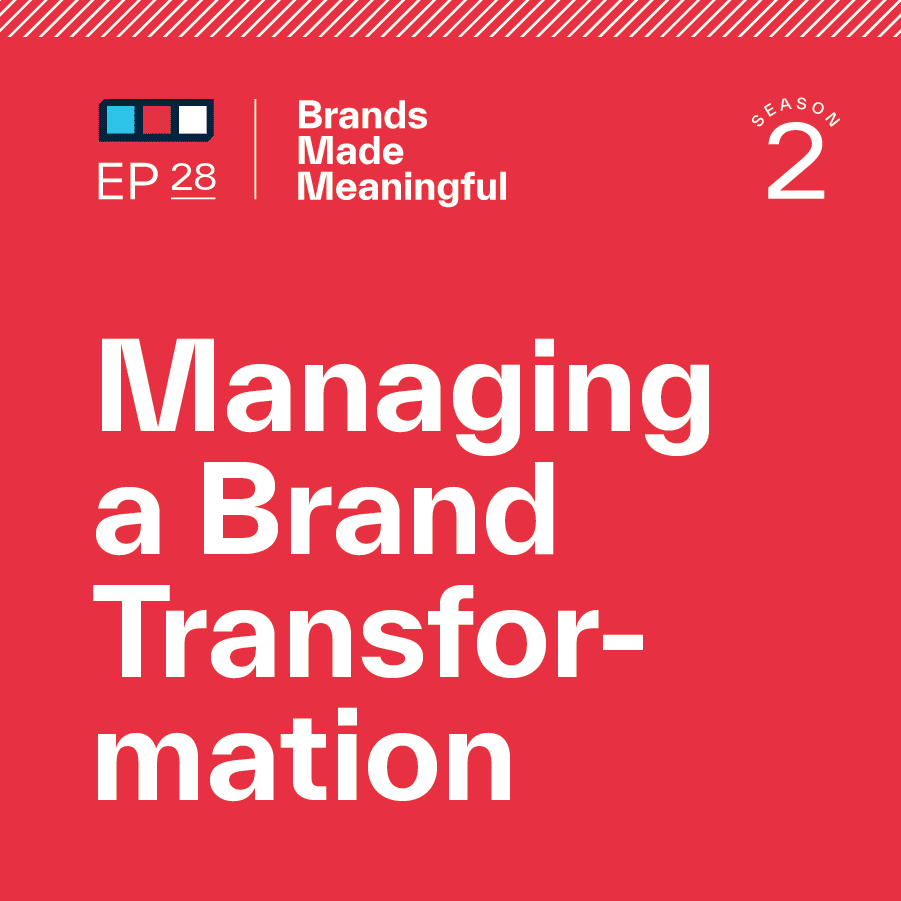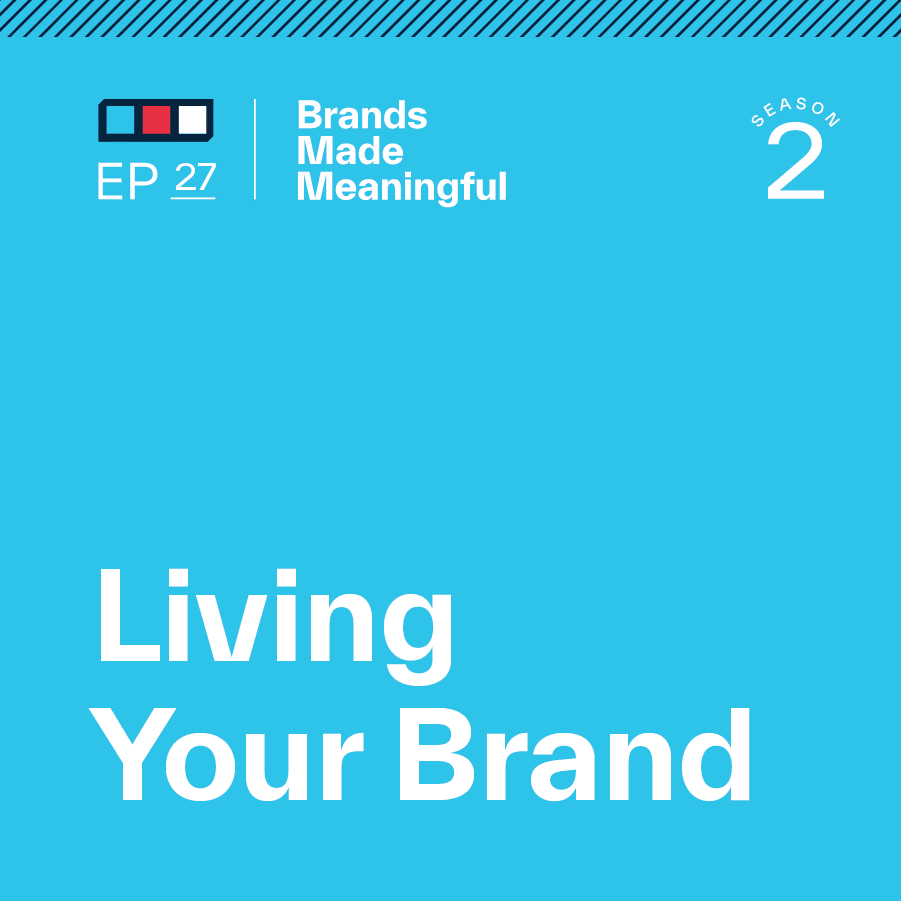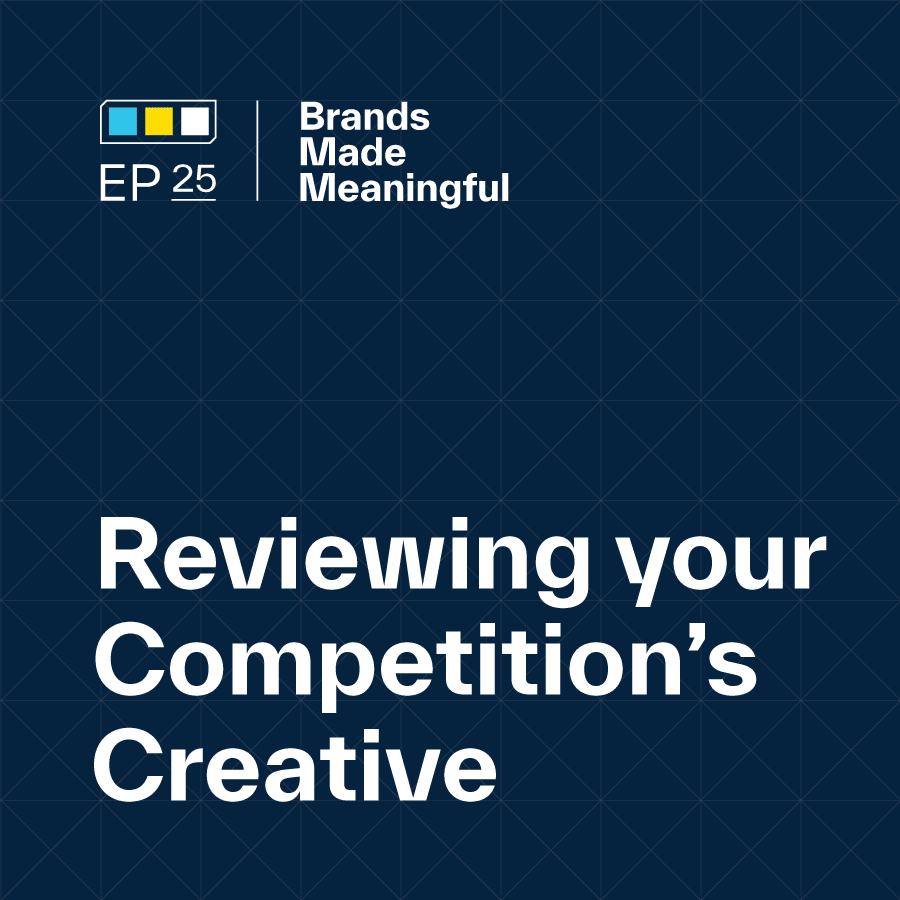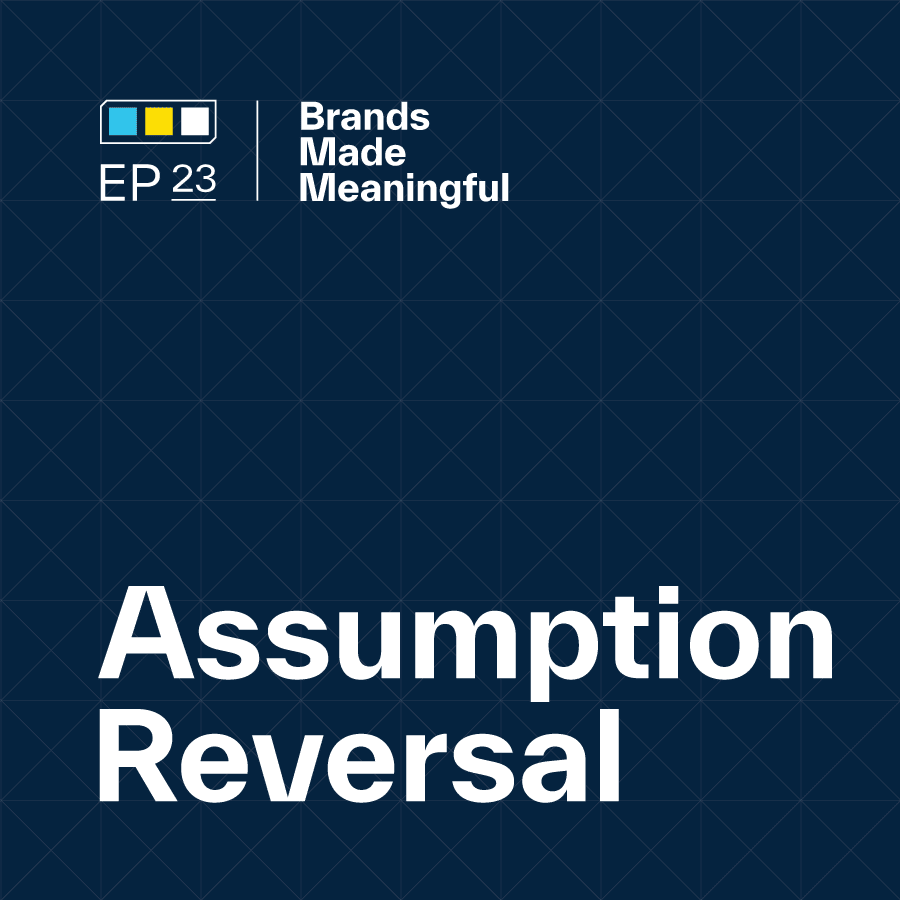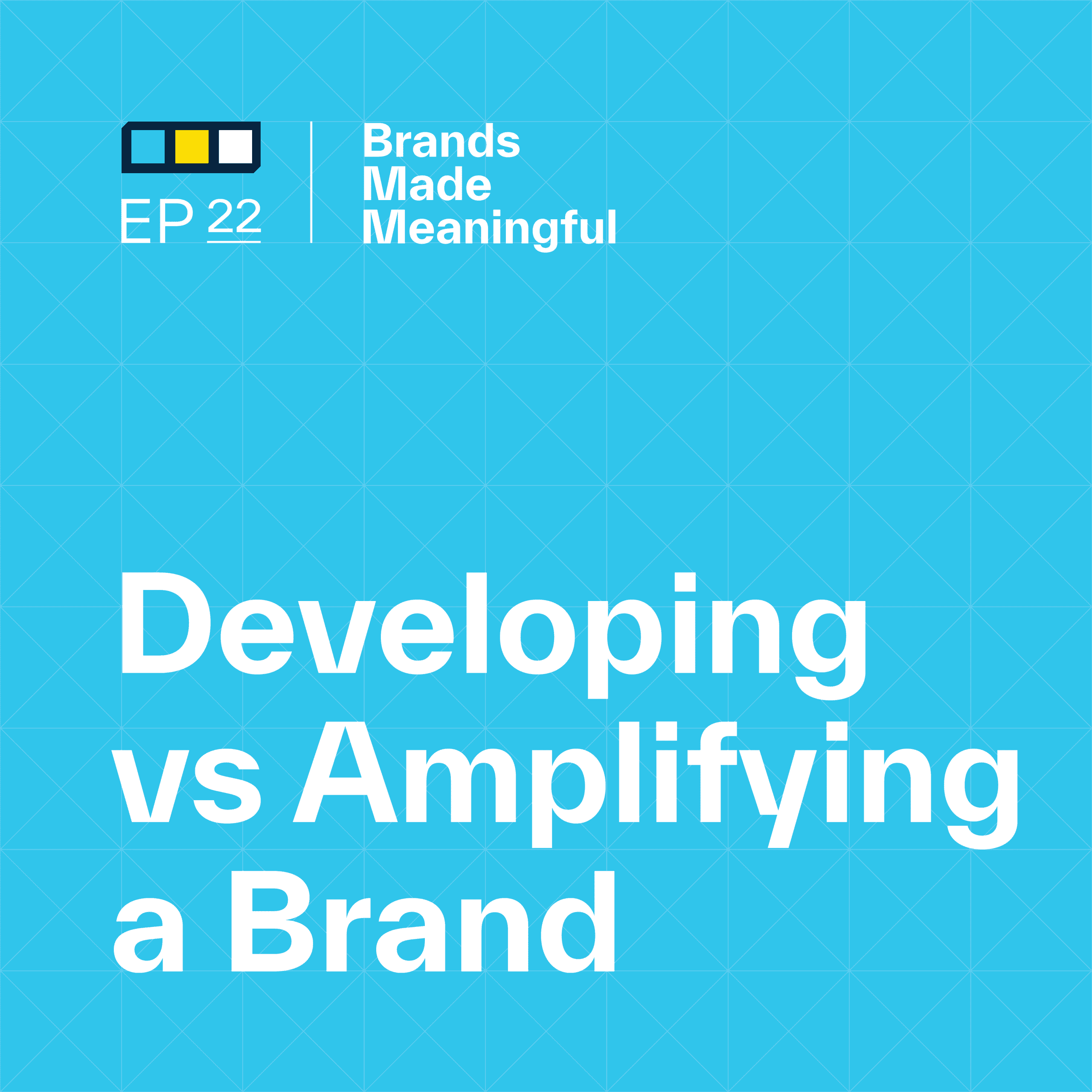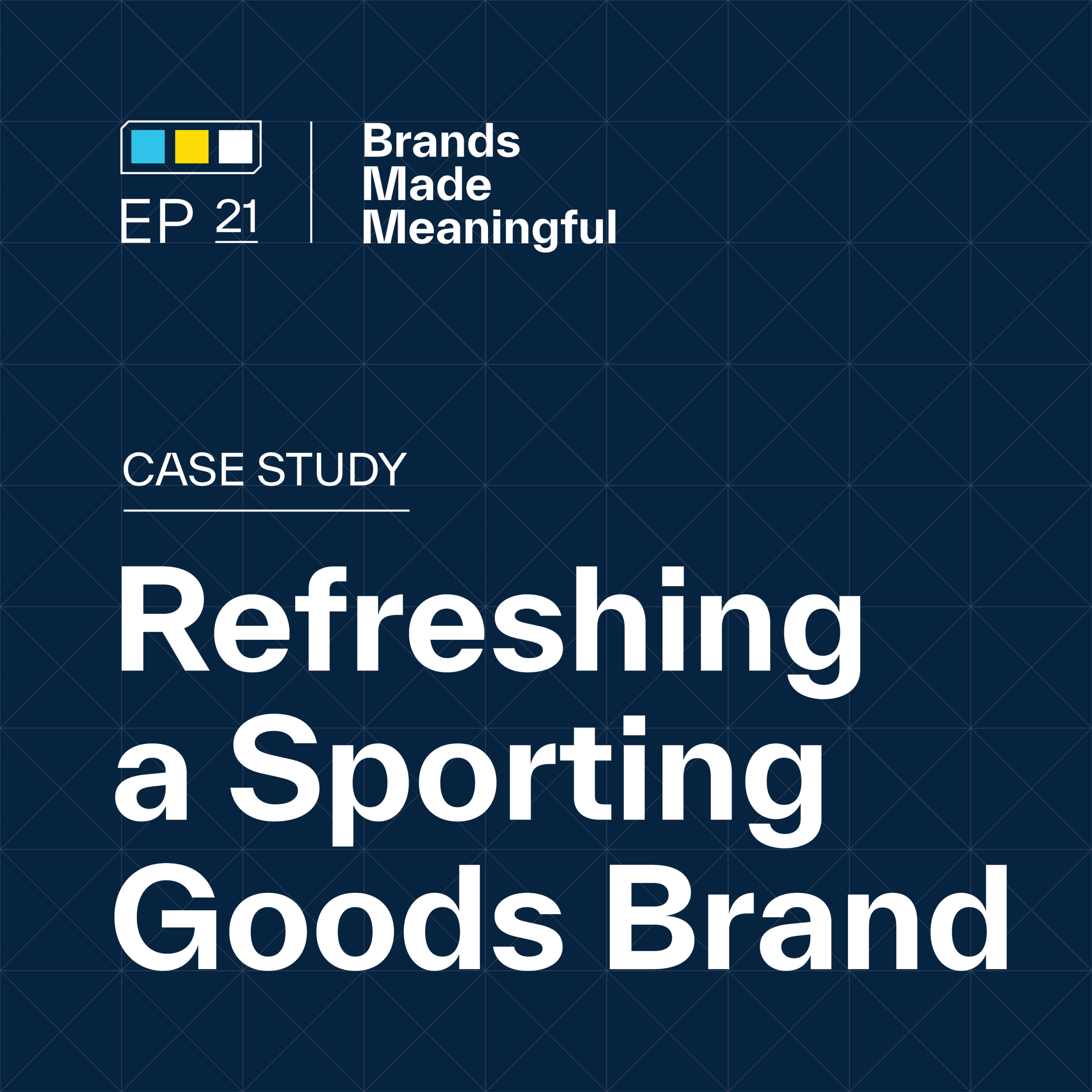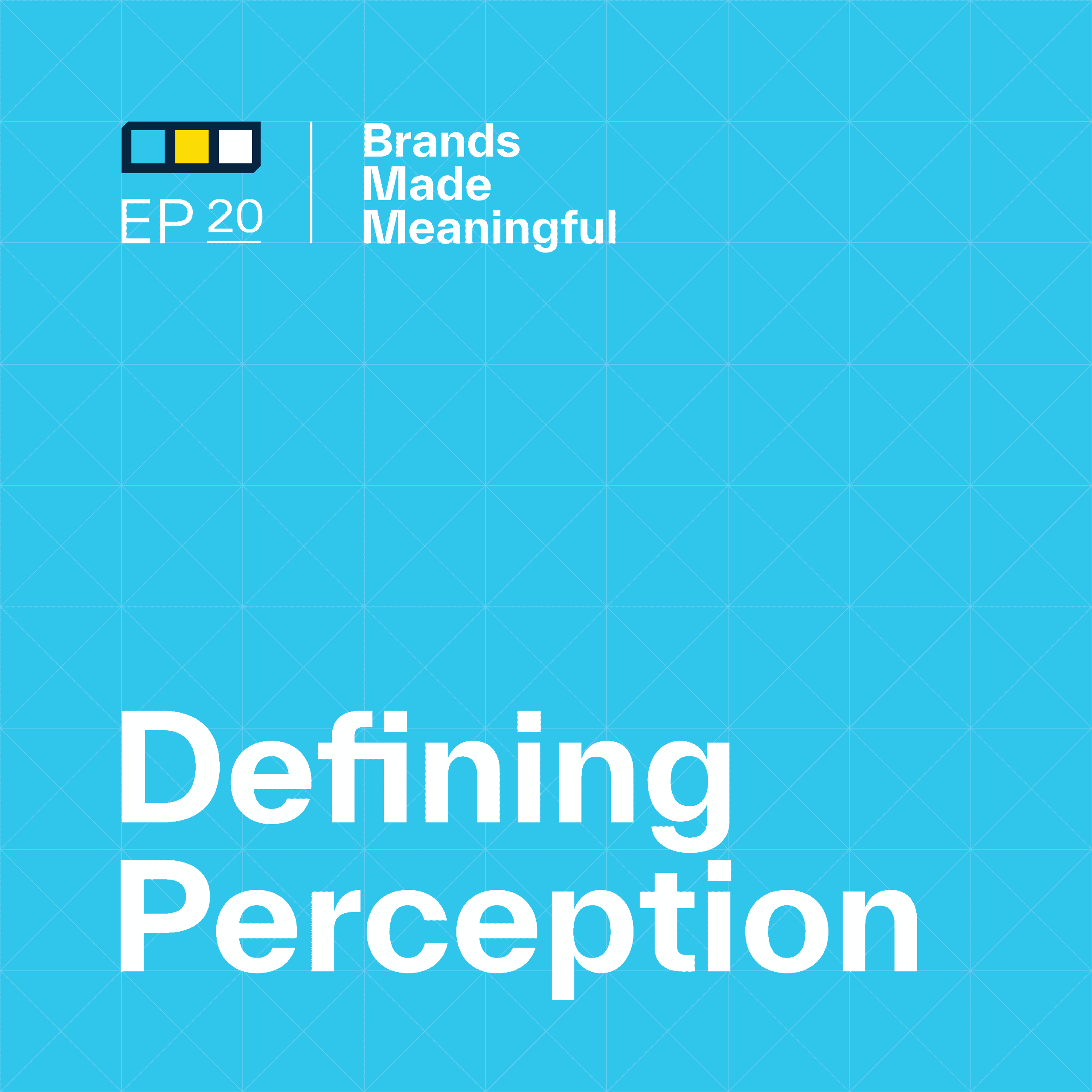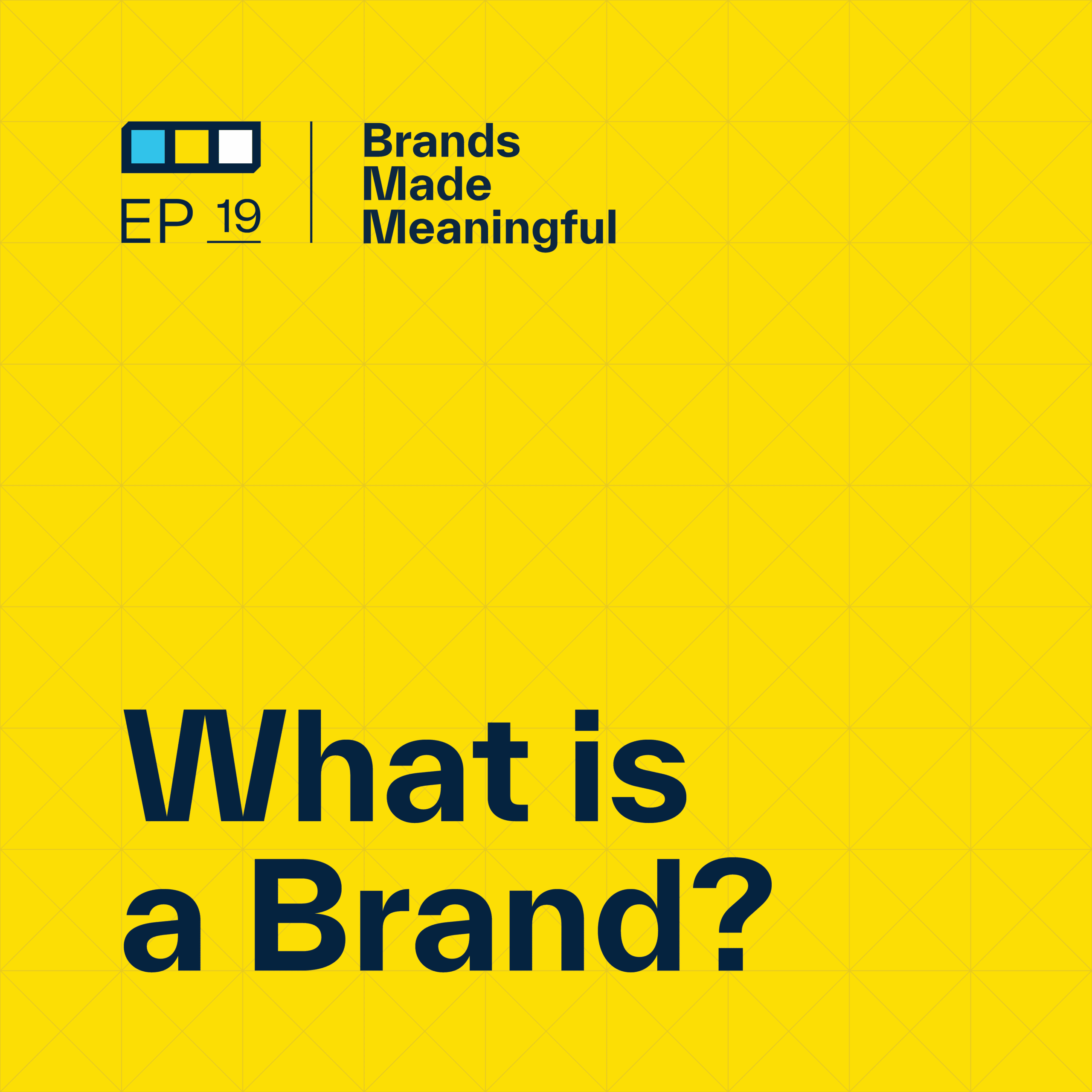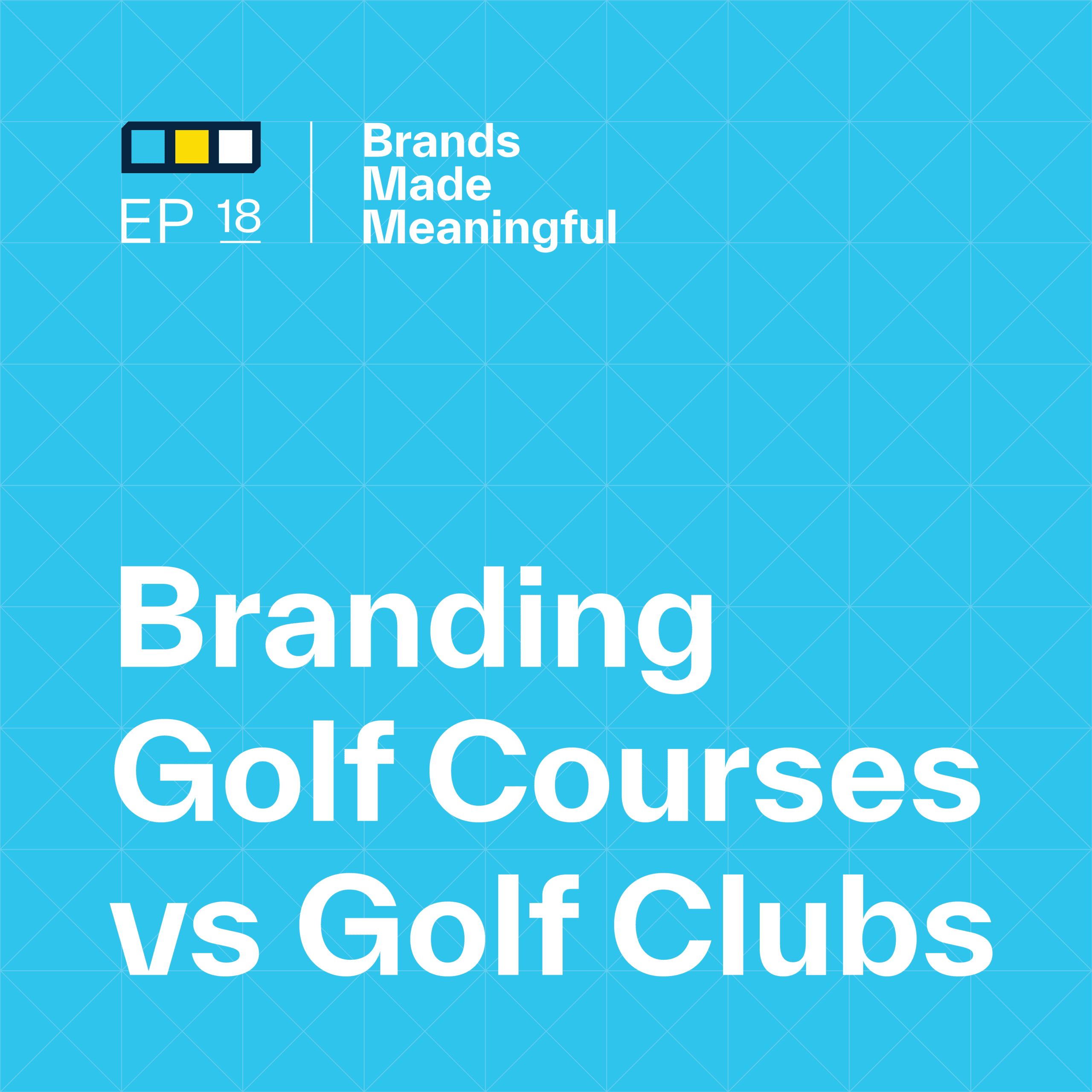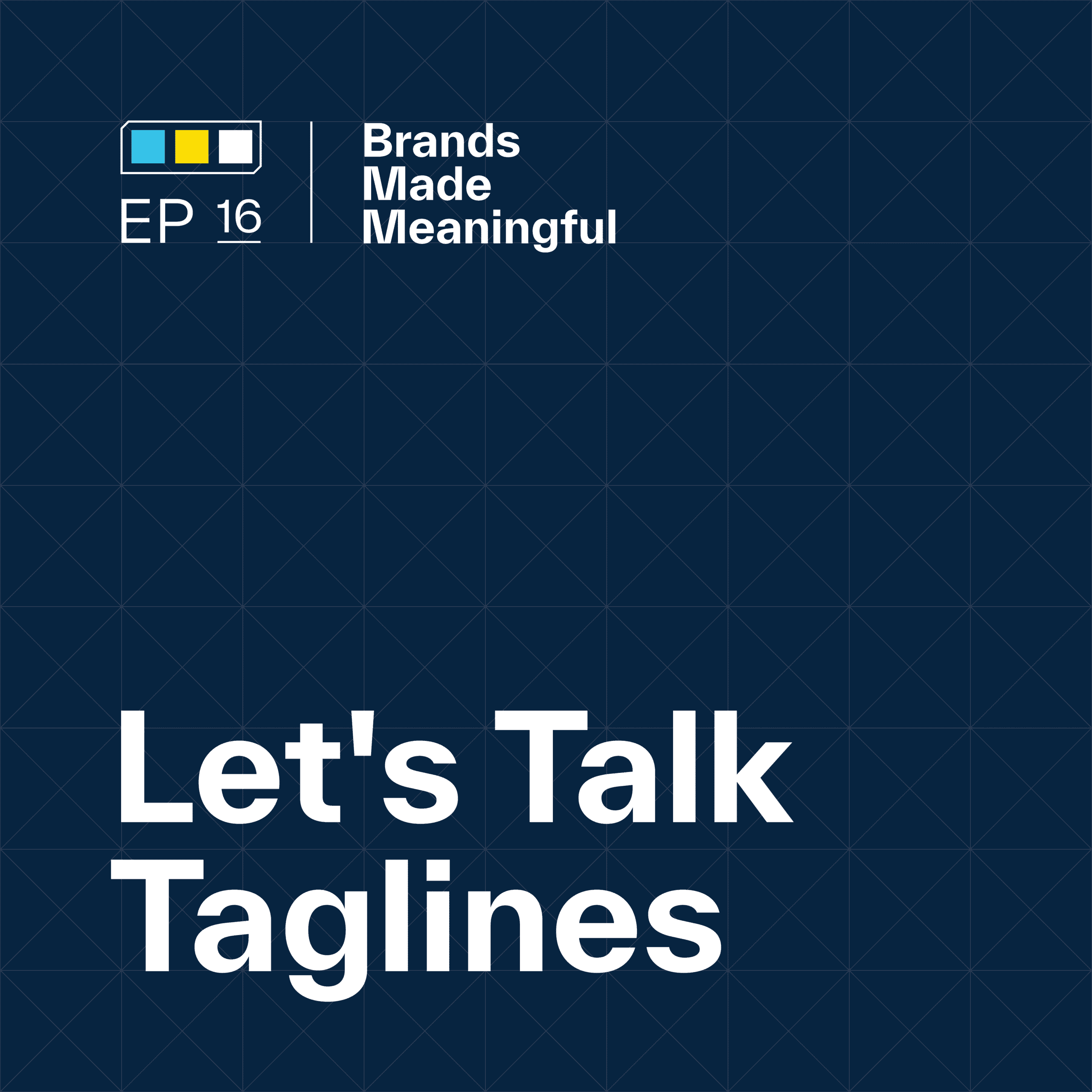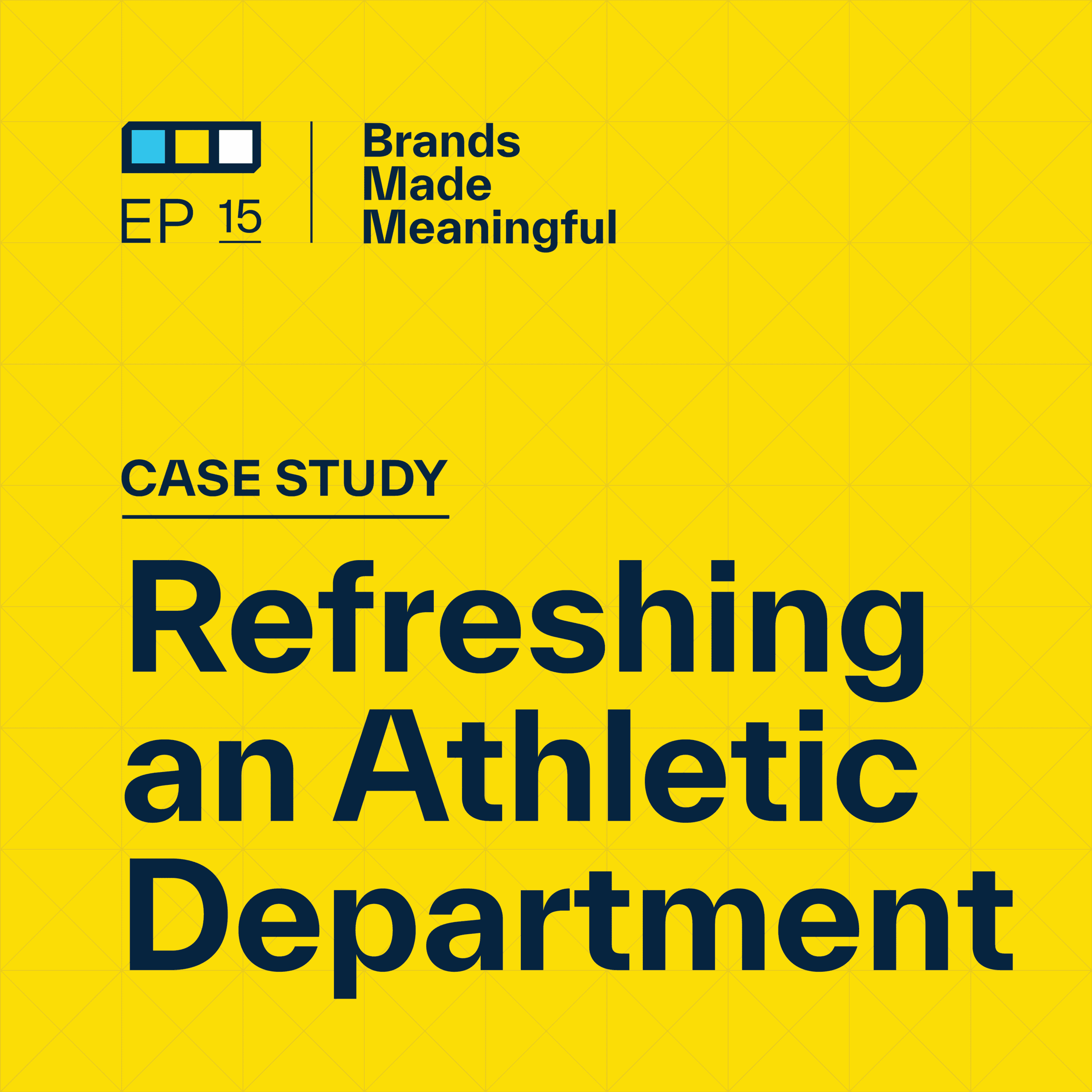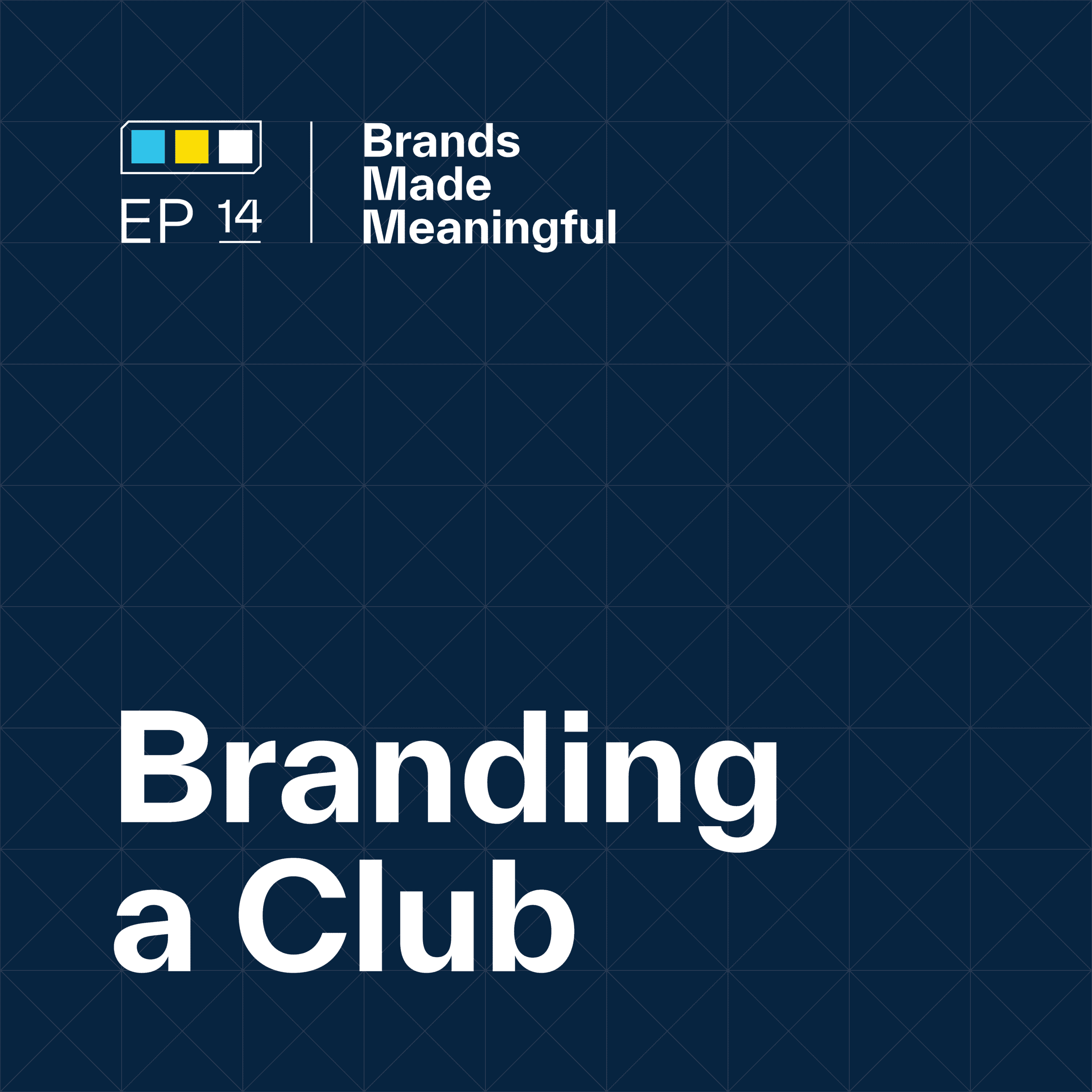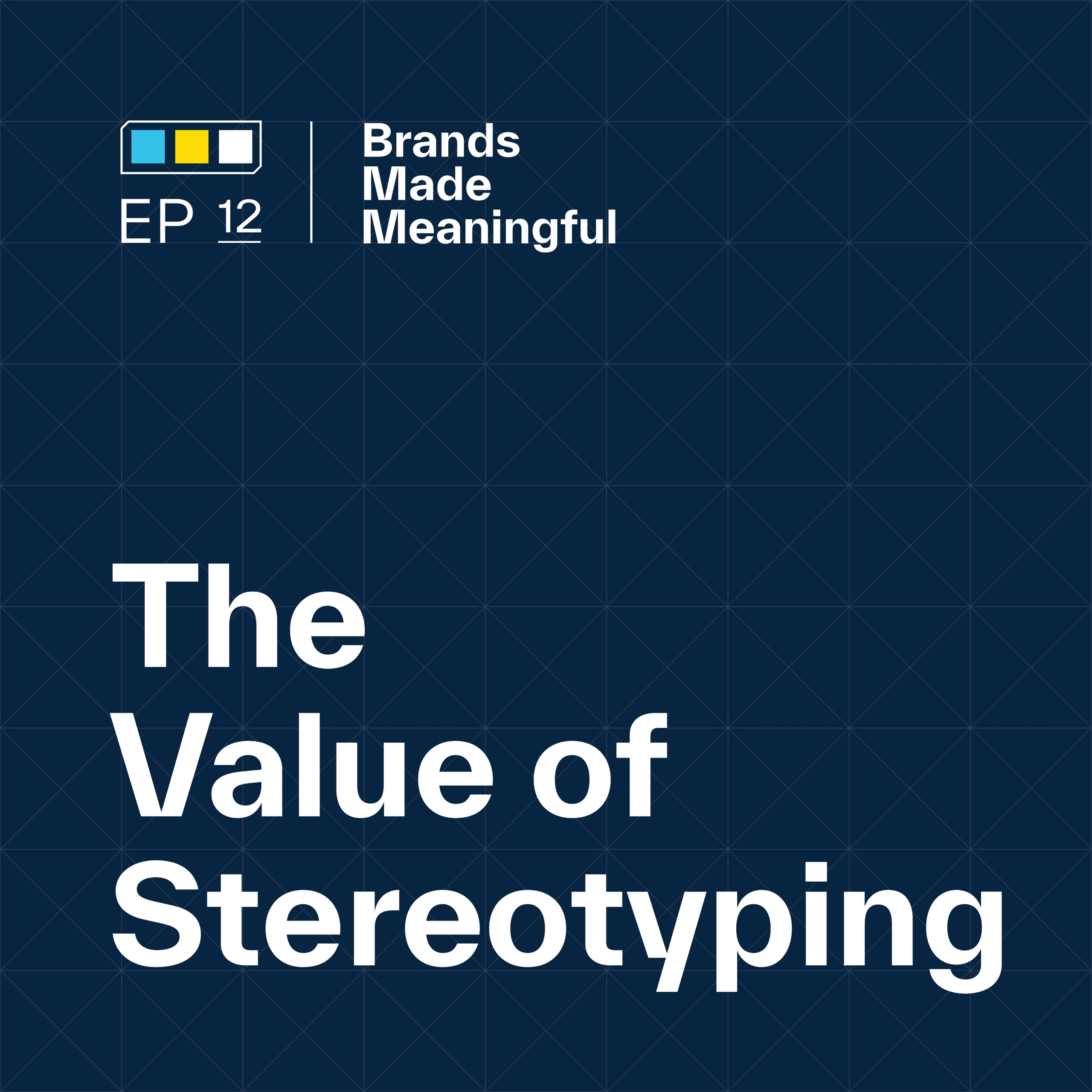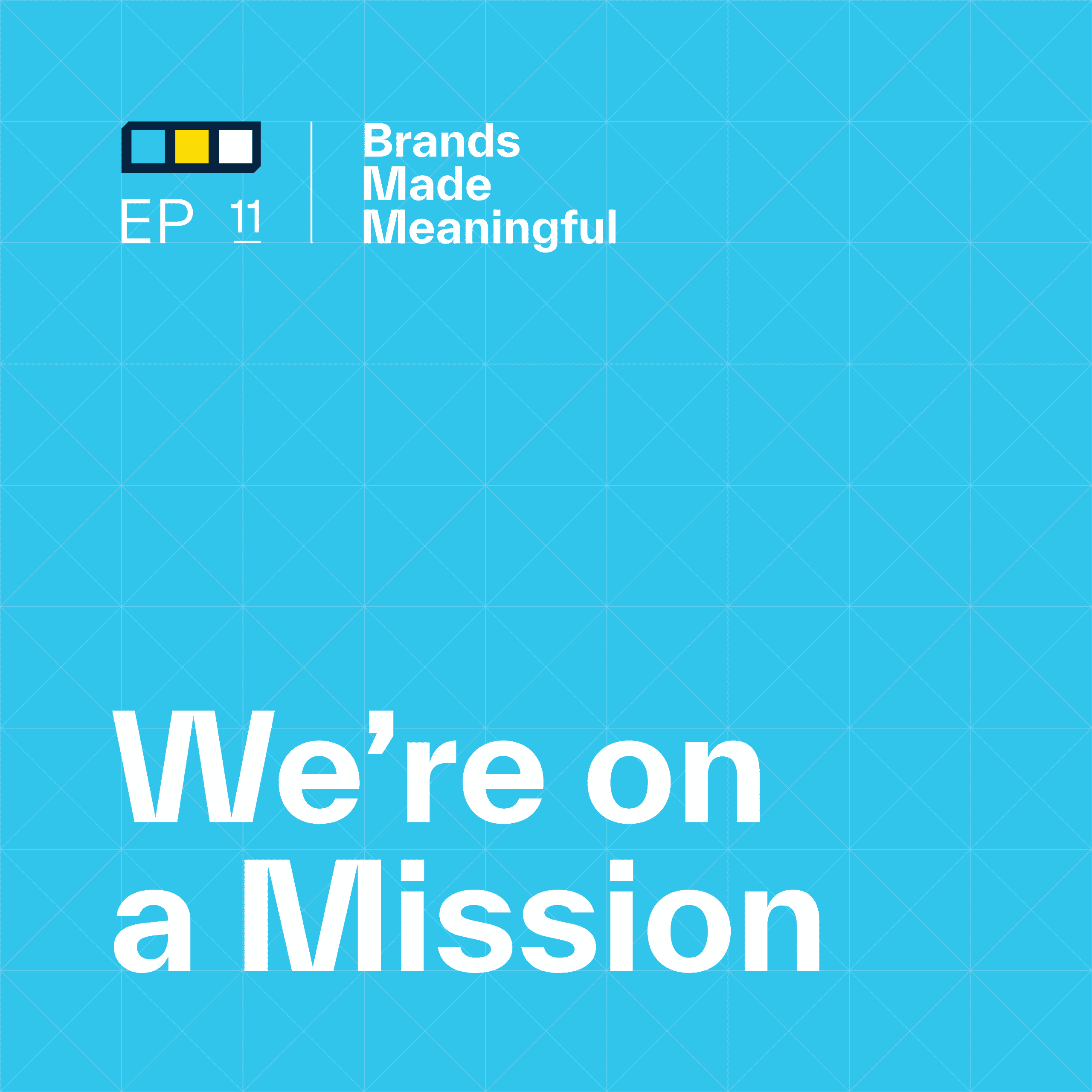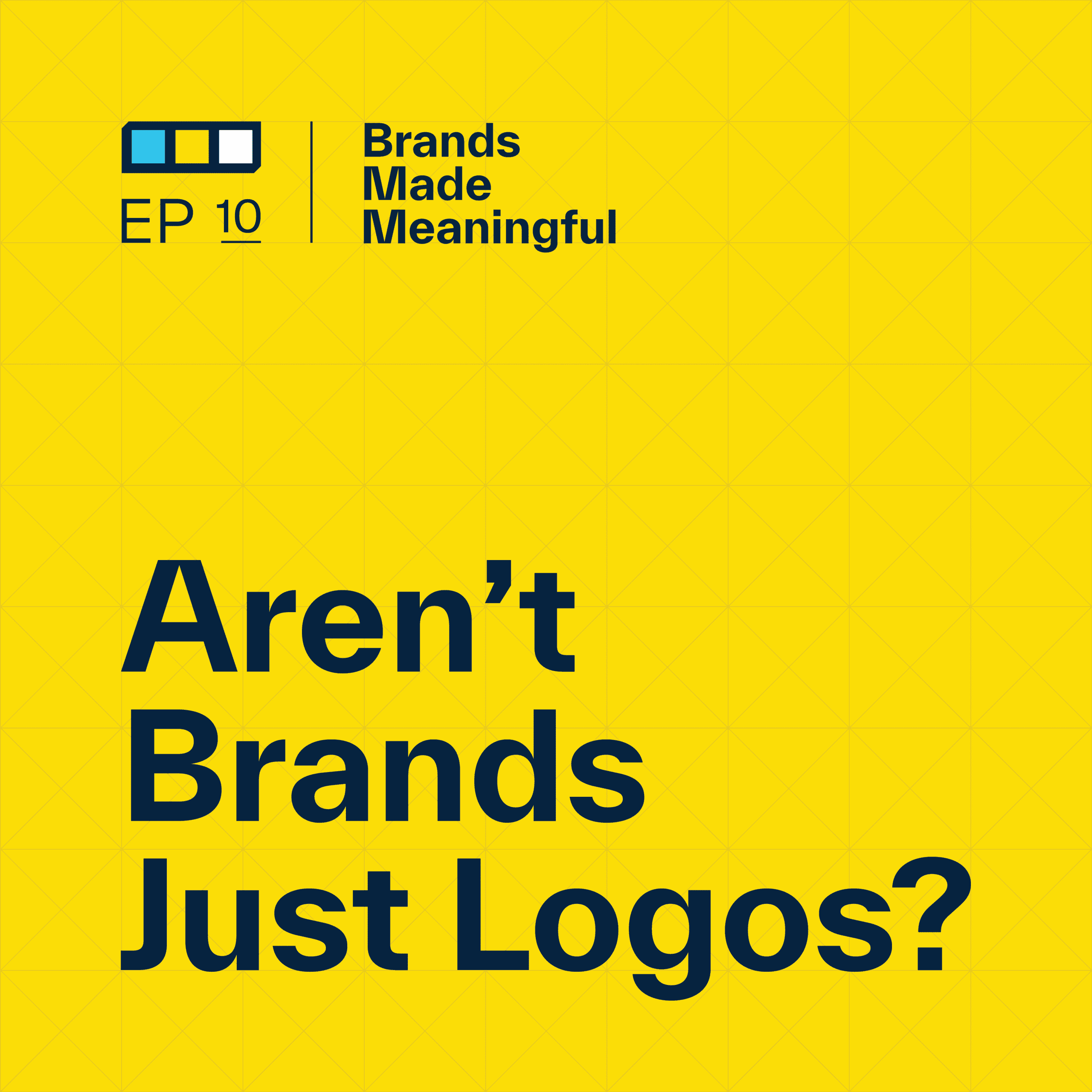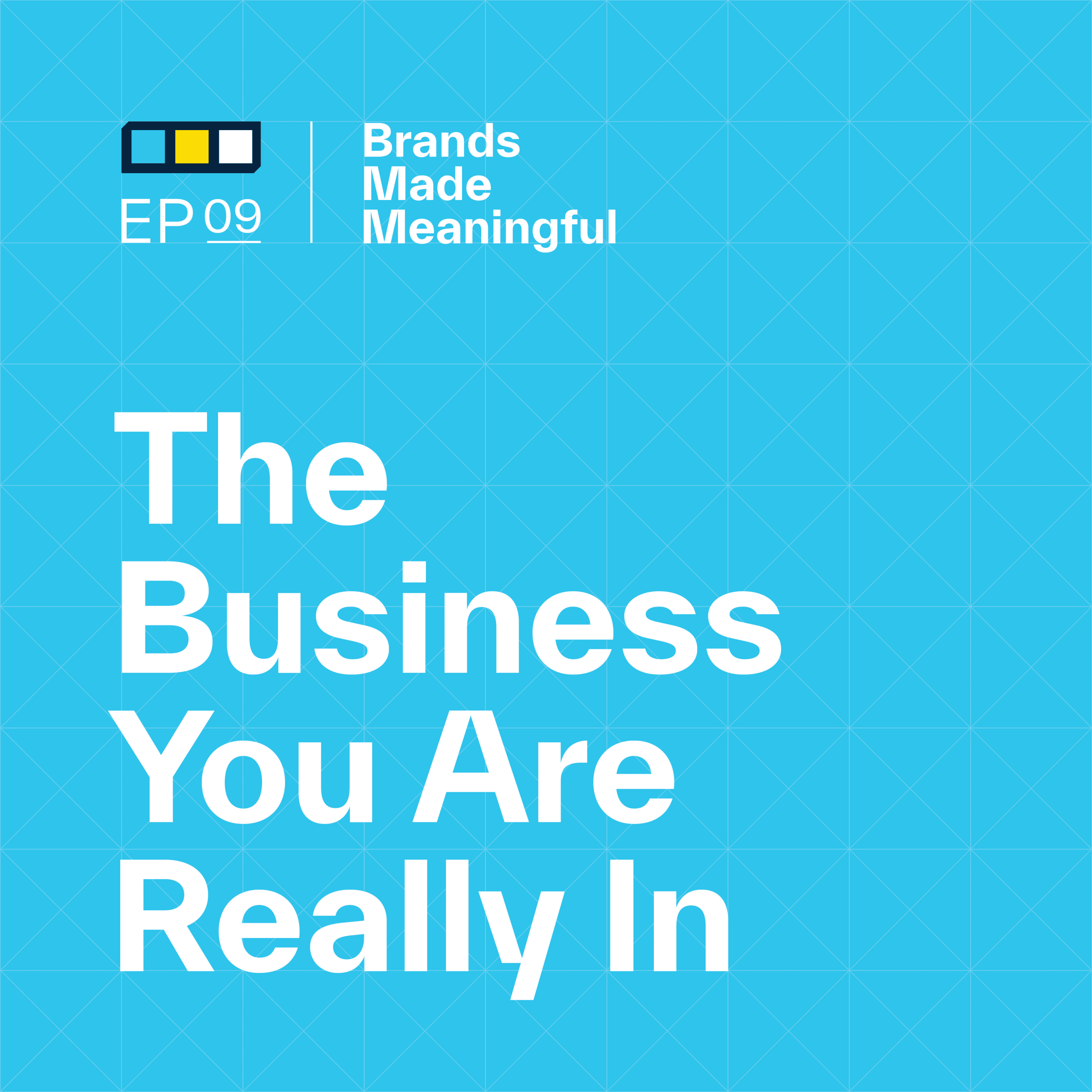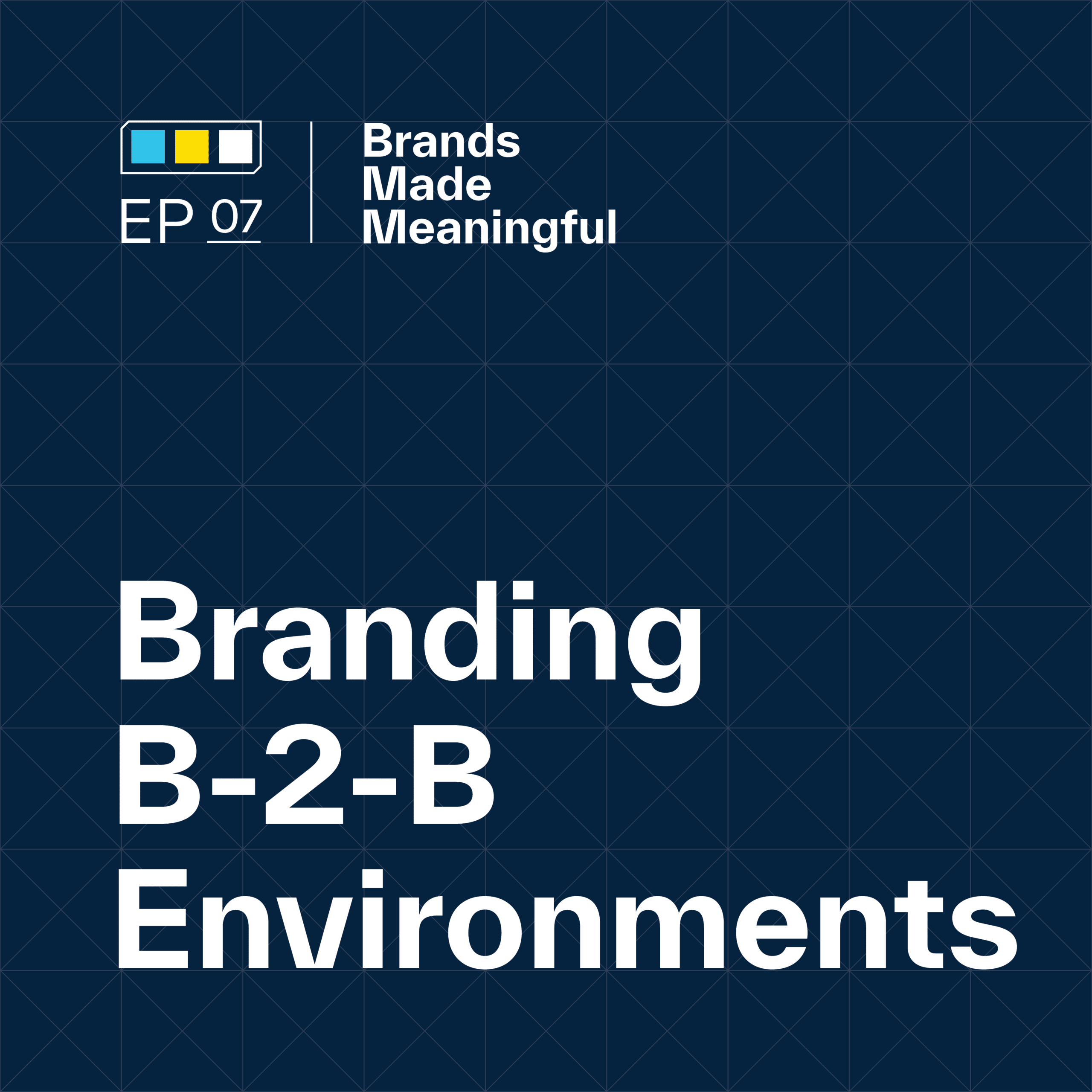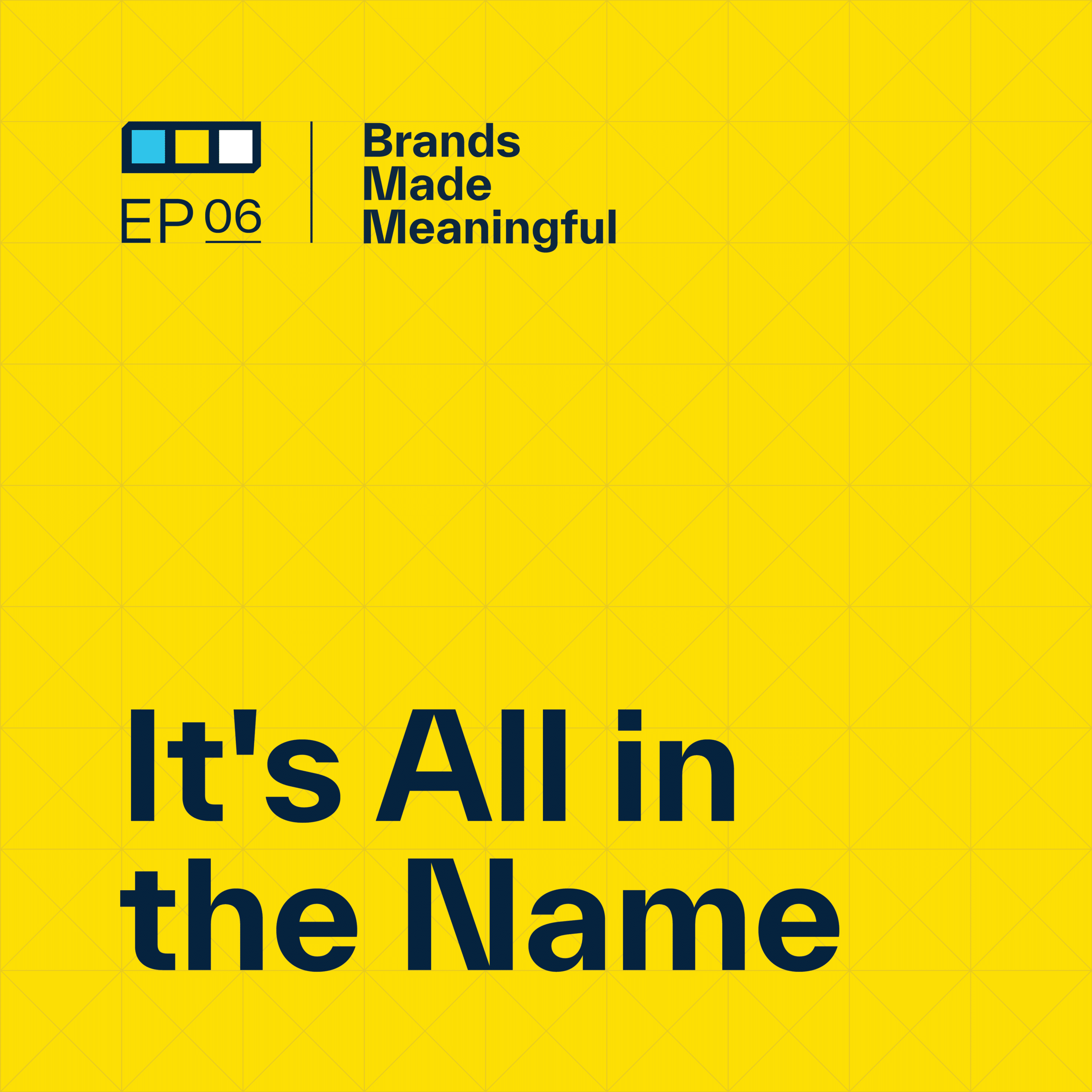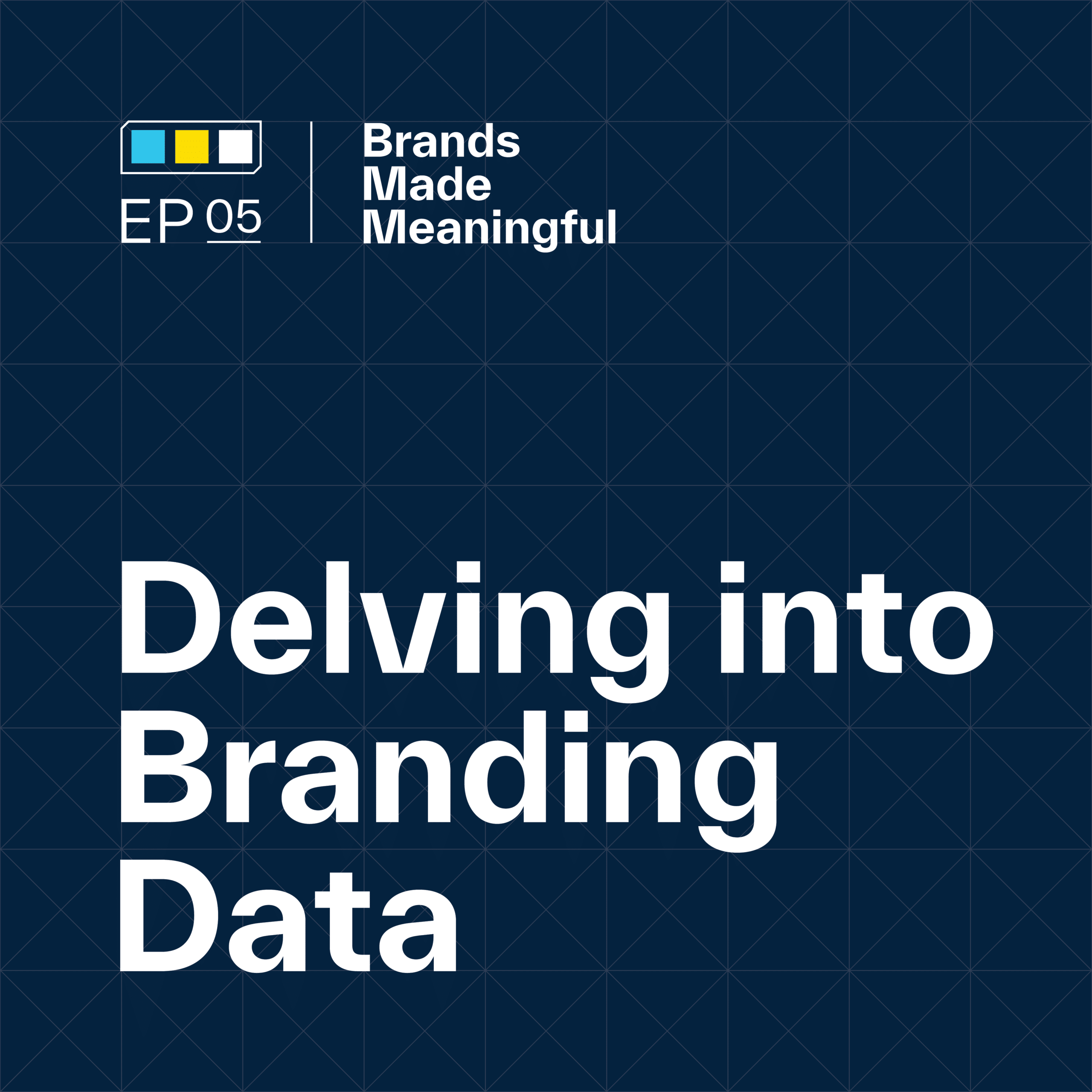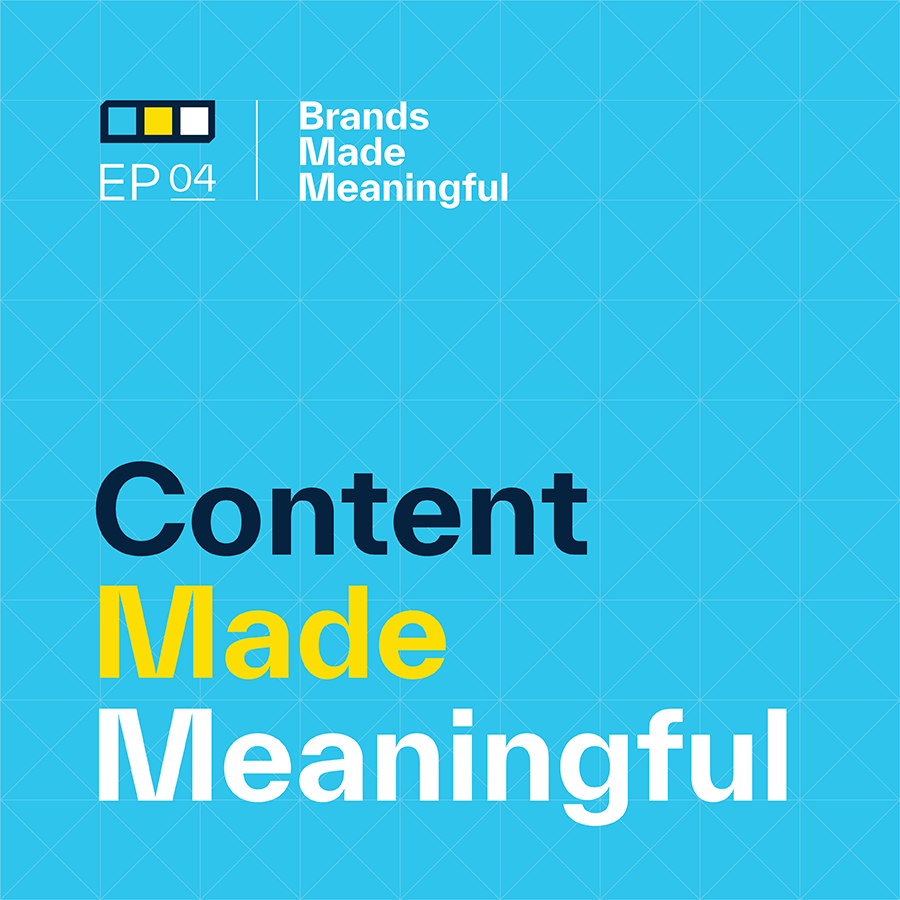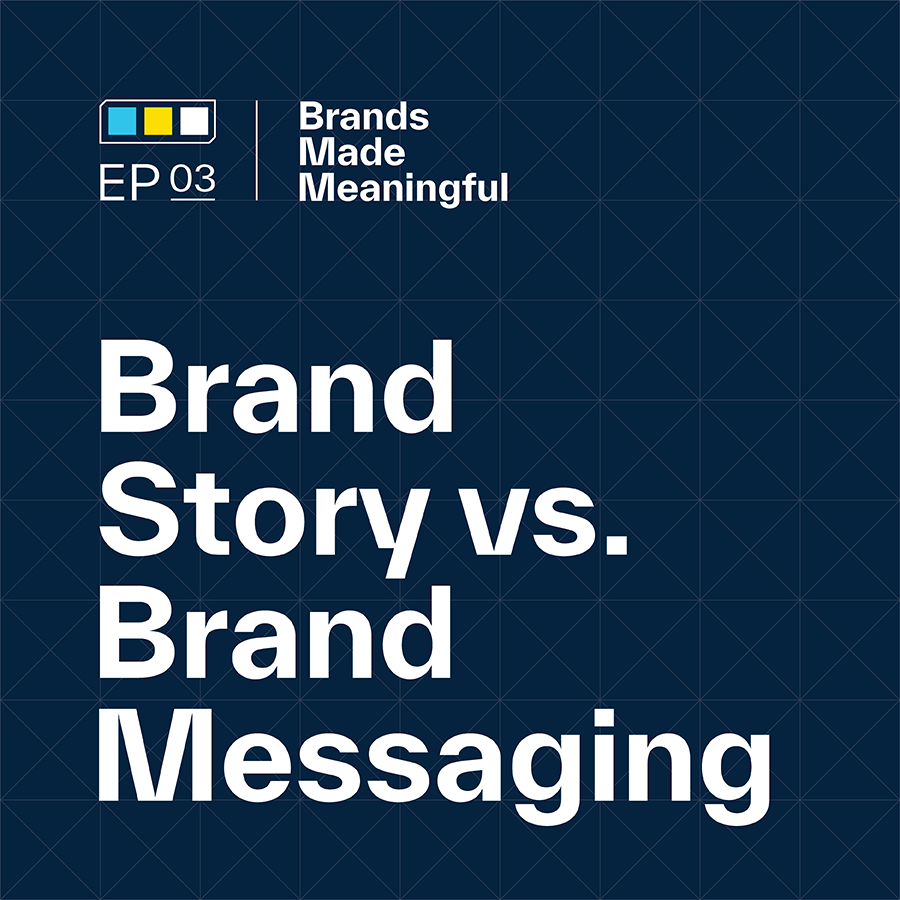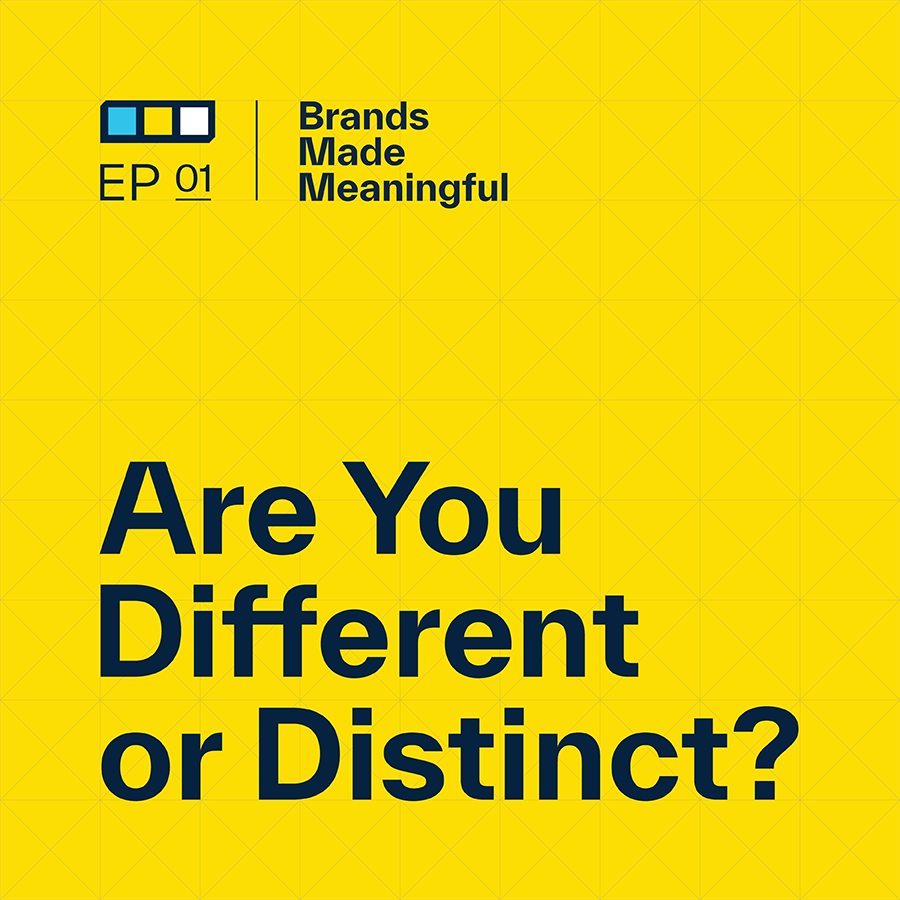EPISODE 59
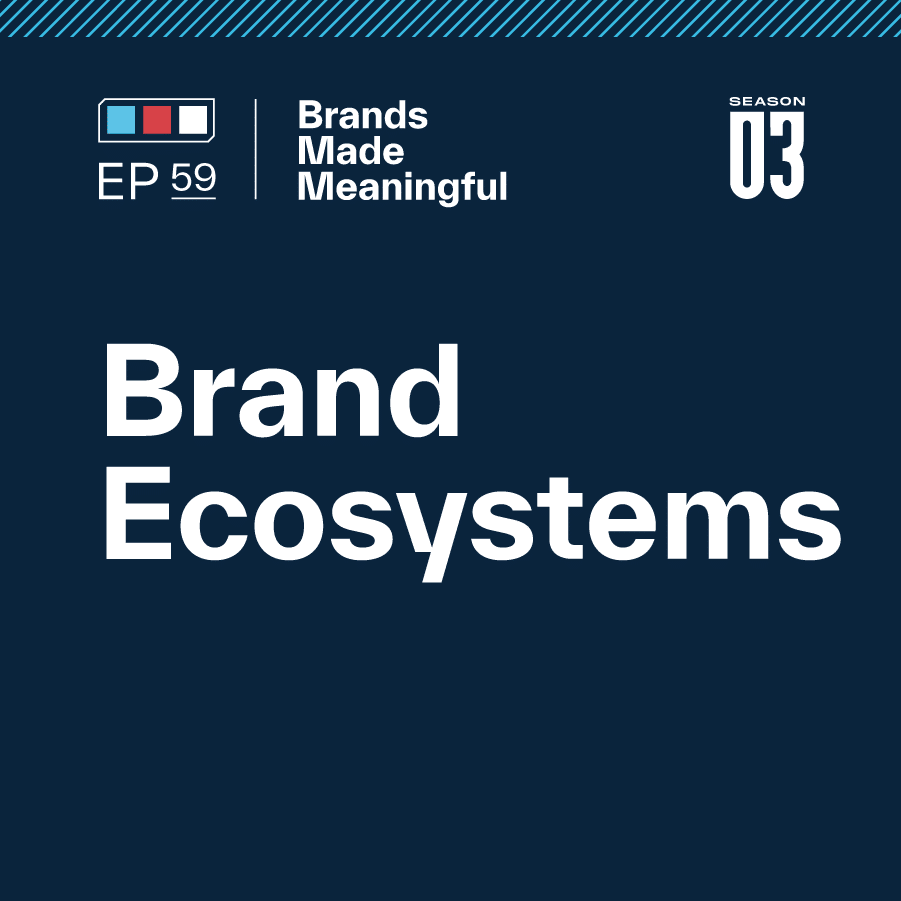
Brand Ecosystems
Episode 59
Derek and Tucker break down how to craft effortless experiences when considering your brand as a whole.
EPISODE TRANSCRIPTION
Today, we’re talking about how a brand is more than a logo
Tucker Derek, today we’re talking about ecosystems. We’re talking about pulling things together. We’re also talking about how a brand is more than just your logo, which comes up a lot. When we work with clients, they think about working on their branding which means they think they have to change their logo. That’s not always the case, and I think this conversation is a good example of why you can do a lot around your brand that isn’t necessarily changing the primary logo.
Expand Full Transcript
Derek When we say the word brand, everybody jumps straight to the logo and that’s normal. It’s not a criticism. We’ve been trained to think of them interchangeably. But a brand touches so many parts and places of an experience that somebody has with a business, with an organization, with a club, etc. so to only think of a brand as the logo short changes all of the ways and places and opportunities we have to reinforce the type of perception and reputation that we want our brand to stand for.
Tucker If you think of a brand as being defined by a person’s gut reaction or gut feeling or gut perception of a person, a place, or a thing, to say we’re going to brand this product is someone’s gut reaction to that product. Well, that gut reaction is built off of much more than just the visual aesthetic of it. That’s a huge part of it. And there’s a lot of the verbal aesthetic parts like the messaging and the tagline that go along with that too. The name has a huge piece in that. But a lot of it is experience too. What was it like when you used that product if you’re talking about a service? What was it like when you got that service when you were working with maybe a professional services firm? So people think of our brand. It’s bigger than just our flag or our logo. It’s a lot more of who they think of when they’re working with us and how that experience is working with them and the results that come out of that. So the brand and the ecosystem that builds around it really has to do with the interconnected web of elements that make up the identity. And then identity is a lot larger than just the visual identity.
Derek If you think of brands that you have a positive association with, something that you belong to, a place that you frequent, an organization that you work with, the more consistent they are and the more intentional they are with their brand, the more effortless that experience is going to seem to you. Maybe it’s because of what we do, but I notice all the ways and places that people haven’t taken advantage of when it comes to the entire ecosystem of their brand. When somebody does it right, you almost don’t notice it because it’s done so thoughtfully, and it’s so effortless and so consistent. We should do a whole podcast on the gut reaction thing, like, what is your gut? The good news is that there is some science behind it. The frustrating thing is, how do you define brand? Well, it’s your gut reaction to something. But that’s not to undervalue your first response, your impression, your gut reaction, how something makes you feel, how an experience with somebody, someplace, either does or does not fulfill expectations or that you walk away from that as a positive or negative association.
Tucker We had a conversation about a sub-branding thing a while back. I think it was episode 40, and we got into brand architecture. This is a little bit different than that. It has to do with architecture. It has to do with those things. And I would say you need to care about your brand ecosystem. And someone might ask me, you might ask me, why should anyone care about that? And I think it’s important because a lot of organizations – big, small, indifferent – don’t think of their brand as this ecosystem. They might have a positioning strategy. They might have all of these things that help their creative departments and their marketing departments function, but they’re not doing something with the mindset of the experience. There are a lot of organizations that we’ve worked with who don’t understand that we’ll talk about brand strategy and we’ll talk about this and that absolutely has to do with the visual direction that we will go. And it has to do with how we might change the name of the organization. But what they should also see is it should change the way that you market, it should change the way that you sell, and it should change the way that you service the current customers that you have. And how that all comes into play is really important.
Derek We are not saying that a branded ecosystem is slapping your logo everywhere. When you think of the professional sports team that we’ve worked with locally, they’ve identified something like eight very different types of fans. And that doesn’t also include their corporate partners. So the corporate partners and each of these different fan segments all want something. They all experience this brand in completely different ways. So you need to think about how to talk to them, what offer them, and how to reinforce each of those different experiences.
Tucker We work with a lot of private clubs. And this comes up a lot because private clubs, for those of you who have not worked in them, are home to a lot of pockets of people. They have membership factions. This is that group of people and this is that group of people. Maybe there are the tennis people that really love tennis over here. And this is the super hardcore golf fans. And those factions create a little bit of a challenge. If you don’t think ecosystem-wide, then how are you going to build a brand for all those different people to resonate with all of them without watering it down? That’s where you need an ecosystem to build unique experiences for each one of those fans like you’re talking about so that they can feel like they’re a part of something big and great and awesome. But it’s just for them.
Derek Having an ecosystem defined within a process of branding or rebranding an organization ultimately makes all the decisions easier. If this includes things like guiding principles, rationale, reasoning, and strategy, all within that strategy, as you look to different experiences, to different subsections of your audiences or your membership, etc., when done right, this makes all the difference in the world. It keeps the master brand cohesive and yet makes it applicable and personal for each of these different audiences.
Tucker So I want to do two things. I want to, one, talk about red flags. What do people see that if we talk about it here, they could go, I have that problem. That is absolutely me. And then, two, I want to go, What can you do about it? So walk me through a couple of red flags. Maybe it’s in a new business conversation and someone goes, Here’s the problem we have. And then we could go, Well, that’s because you’re not thinking like an ecosystem. You’re thinking very singularly about all of these things.
Derek The biggest one is a lack of consistency or fragmentation in how the brand is presented across different mediums, different platforms, and different ways. Some organizations might put a lot of effort and thought into their website, for example. And then when you go visit that organization and walk through their front doors in person, they’ve then maybe not taken the same thoughtful approach to what that experience is like. So there’s 2D, 3D, and then social, etc. So fragmented language, fragmented visuals, and lack of consistent presentation of who you are, what you look like, and how you sound, are probably the most common.
Tucker So from our brand standpoint, we don’t have fragmentation because both of us talk with our hands, and that’s just a part of our brand. And that’s just how it works. Because I’ve noticed that we both talk with our hands and maybe that’s just the experience of dealing with us.
Derek I’ve tried not to. And then, I feel like–
Tucker It’s not authentic.
Derek Yeah, it’s just not how it works.
Tucker The second one is brand experiences fall flat. This is where you get people saying it’s the watering-it-down approach that we were talking about. It doesn’t feel like it’s for anyone because it’s for everyone. And this happens a lot when we deal with experiential brands when you’re dealing with professional teams or with private clubs or any of the people that put on events or specific things for people to come experience. Sometimes when you are so afraid to make a decision because you have no ecosystem strategy, you don’t have an understanding of who this experience is specifically for, and you don’t have any guiding light for how it should be shaped, it makes you feel like you could have had this experience anywhere, and that is the worst thing that could happen, because you want your brand to feel memorable, unique and different. And how do we do that? We need to build what I call a strategy for all of these experiences that we give our teams so that they can come back and say, Here’s who it’s for, here’s what we’re going to do, and here’s why they’re going to love it.
Derek So sometimes it’s not intentional. Sometimes it’s sort of accidental. Time goes by and you are paying attention, and all of a sudden you just haven’t paid attention to it long enough that now it’s not up to date and current anymore. Other people we work with have made the mistake of taking a MeToo strategy and saying, Well, if that works for that competitor or comparable organization, then it will work for us too. So we want to look like them and sound like them. This Is not the strategy we would ever recommend. For your brand to be for somebody and for it to stand out amongst that crowd of competition, it’s critical. And sometimes you only have one crack at this. If that experience falls flat first, you very likely might not get a second chance.
Tucker The last red flag for me is when a client comes to us and we go, Okay, can you slide your brand rule book, your guidelines, across the table to us? Or can you send us the file that you use for any of that? They go, No, we don’t have any. We have a logo. Do you want that file? That is a huge red flag. So there are no guardrails keeping your team on the right road. There is nothing that you’ve identified or outlined, where you said, This is how we sound, this is how we look, this is how we treat our guests, this is how we build our visual experiences, or this is how we talk to people. If you don’t have a guideline set, if you don’t have rules that help your team make decisions quicker, then they’re just going to do what they think is right at the moment. Sometimes that’s awesome. Sometimes it’s absolutely right. Sometimes it’s super wrong. And that can get really dangerous too because it makes it harder to onboard people. It makes it harder to have consistency. It makes you less efficient. There are a lot of problems that come with not having those guidelines.
Derek When they don’t have all the assets they need to tell the story, when they don’t have the visuals and the guidelines, more often than not, they’ll get bored with the limited ones that they have and they’ll start adding their own. And to keep things visually fresh or to keep the messaging interesting, with their doing that, oftentimes without any guidelines, now we’re back to fragmentation and inconsistency. It’s good for us because that’s obviously a problem that we can help with. On occasion, we’ll run into a customer or client who actually has a whole brand style guide, brand book, and a ton of assets. But for whatever reason, they’re not using all of them. They’re kind of honed in on a couple and they’re not taking advantage of everything they have. That’s not as common as it is to talk to a marketing team or an in-house creative team that just says, I don’t have anything to work with.
Tucker Yeah, I laugh, not because it’s like a cackle like, ha ha ha, these suckers are going to come to work with us. But all I can imagine is if that was the approach a doctor took and they said, Well, I hope people get sick because that way I’ll still have a job. It’s just like a really funny thing for me. It’s a hard thing, but how can we solve this? How can we move this forward so that when someone goes, I think that we’re not giving our team all that they can have from a brand side. We’re just not thinking the right way. How can we solve that problem?
Derek I’ll let you take the strategy approach to this. For me, it starts with a brand audit. I like to recommend that you gather all the ways, all the places, whether that’s signage, images of your physical spaces, printed things, the collateral, website, social media, all of the ways and places in which your brand is currently being represented. This is usually a great lay of the land to take pictures and images and spread it all out on a table and see what you have and what you don’t.
Tucker We’ve had a lot of clients come to us and say, Let’s do an audit. And I think where it actually starts before the audit is a mindset. It’s a philosophy. It’s where you think about this from a bigger standpoint. It touches every single experience. It’s all visual. It’s all verbal. It’s all experiential. It’s all these things so that when we do an audit, they don’t get surprised when we take a picture of their front entryway. Why would you do that? That’s a huge part of the experience of your whole thing. Or maybe when you walk into the stadium, what’s the first thing that you see? There is another part of doing that audit. We’ve had clients, I call it undercover because it makes me sound cooler, where we go in unknown to get the experience as a guest without anyone knowing that we’re there for any reason, and we write down what we experience, who’s talking to us, who’s not talking to us, when they say something to us, what did they say and how did they say it? When you ask for something, how do they respond to that? Those are key points to put into an audit. So if you do your own audit, and I would suggest getting someone your staff doesn’t know and have them do that. Have them walk through an experience and give you a true audit. Don’t hold back. Don’t be afraid of not being good enough in some areas. There’s this level of being really transparent with your audit that will help you understand where you guys are lacking. And in some regards, it’s going to be visual. Sometimes it’s just going to be the way you talk to somebody that might totally have to change.
Derek We just did this for ourselves. This sort of an audit. Matter of fact, we probably do it more often than most because we need to do for ourselves what we do for our clients.
Tucker We try to do it yearly. And I tell our clients to do that too. Once a year – don’t try to make it the same time every year. But once a year let’s give ourselves a performance review and try to make it as honest as possible and as third-party as possible. That would be the best way to do it.
Derek At a high level, we think about what our customer journey looks like. What are the key touchpoints from hearing about us to visiting our website to taking a meeting to us sharing examples of other things with them, to them potentially walking in our door, or for them to meet us when we walk in their door and, and all of those steps. And this is just a super brief list. The list can be long. But when you start to think about all the pieces, places, and mediums – I forgot social media – all the ways that people interact with you, that’s the audit that we take. And to think about them through that strategic lens – what’s the purpose of each of these, and what’s the next one that that specific medium is trying to get to is the follow-up step.
Tucker And this all helps if you have a brand strategy, not a visual strategy. Visual strategies are very helpful, but a brand strategy is super important for this to say what perception we are trying to create. Who are we? What do we do and why is that important? And why should anyone care about that? Who do we do it for? Figuring out answers to these great questions as a strategic side – I’m sure we’ve done a lot of podcasts about that in the past and we’ll flip through the list – and applying that audit to that strategy to say where we are not accomplishing these things is going to be critical for you guys to look through your experience and then stand back and say, If we’re really trying to build this perception, how are we not doing it the way that we service this guest or this customer right now?
Derek I’m assuming we’ve done a podcast on perception, on reputation, and how to be thoughtful in landing on a series of 3 or 4 or 5 attributes that, when combined, describe how you want your brand to be perceived. Once you’ve done that, that’s the critical step. Once you’ve done that, then you can look at that audit and you can look at every piece, not just to understand what you have and what you don’t have, but to look at what you have and say, Is this reinforcing that perception or not? If we’re trying to be open, welcoming, warm, and timeless, is that message on our website reinforcing that? Does the furniture in the front lobby of our office represent that? Does the brand that’s then been applied to our member-member tournament also help continue to reinforce that whole story? So it’s strategy first. Like you said, you can skip the strategy and have a great-looking brand but it’ll fall flat. It won’t have the true meaning and it won’t resonate next level like the way that it can.
Tucker We need to redo the front office furniture. I can tell you that.
Derek We’re working on it.
Tucker So the takeaway is a big thing here. Within the brand ecosystem, remember that your brand is someone’s gut reaction to you. It’s the gut perception. It’s how someone experiences your organization. And if we think small, if we think only visually, then we’re going to limit ourselves to only improving visually. And that’s not okay.
Derek Get beyond the visual. Make it strategic. That makes it meaningful, which will help you stand out from the crowd. It’ll make you memorable. And then when that experience actually pays off for your audience, for your customer, for your guest, for your fan, they’re going to become advocates and start marketing for you.
Tucker All right, until next time.
Derek Till next time. Talk to you soon. Sussner is a branding firm specializing in helping companies make a meaningful mark, guiding marketing leaders who are working to make their brand communicate better, stand out, and engage audiences to grow their business. For more on Sussner, visit sussner.com.
More Episodes Like This
Reclaiming Reputation Through Brand RevitalizationEpisode 85
Derek and Tucker discuss the potential that a branding initiative can have to restore a club’s reputation.
Branding The Club with Don KovacovichEpisode 84
Don Kovacovich, GM of The Club at Golden Valley, joins Derek & Tucker to discuss the impact that rebranding has had on his club and the opportunity it presents for other clubs
Changing a Club’s Membership ModelEpisode 83
Derek and Tucker discuss key considerations and challenges when changing your club’s membership model.
Connecting a Club with its Story with Jackie CarpenterEpisode 82
Derek and Tucker are joined today by Jackie Carpenter, author of People First.
Branding a Club AnniversaryEpisode 81
Derek and Tucker discuss the unique opportunity presented by milestone and anniversary dates for private clubs.
Private Club Storytelling with Ricky L. Potts, Jr., CCMEpisode 80
Derek and Tucker have the pleasure to speak with Ricky L. Potts Jr. about how powerful storytelling can be for your club members.
Opportunity in Club Facility RenovationEpisode 79
Derek and Tucker discuss pivotal key moments in your legacy and how to transform your story through renovation.
The Evolution of Club Members with Jon LastEpisode 78
Derek and Tucker are joined by Jon Last from Sports & Leisure Research Group to discuss the evolution of club members.
Member Branding vs. Product BrandingEpisode 77
Derek and Tucker discuss the challenges their client's have moved through when approaching differing styles of branding.
The Role of a Private Club's LogoEpisode 76
Derek and Tucker take a look back on private club logos they've designed over the years and explain the strategic reasons behind their choices.
Club Brand GovernanceEpisode 75
Derek and Tucker divulge the steps to evolving your brand while retaining your core values.
Seasonal Member MerchandiseEpisode 74
Derek and Tucker take a look at crafting specific merch to celebrate landmarks and special times of the year.
Who is Sussner?Episode 73
Derek and Tucker take a break from talking shop to talk about who they are and what they stand for.
Club Identities Beyond AmenitiesEpisode 72
Derek and Tucker discuss what it takes to stand out in unique ways for your club.
Little Things Mean EverythingEpisode 71
Derek and Tucker take a look at the often missed and easy to overlook.
Build Flexible Brand SystemsEpisode 70
Derek and Tucker break down the building blocks for long lasting branding.
The Club at Golden ValleyEpisode 69
Derek and Tucker take a close look at one of their recent rebrands.
When to Launch a Club RebrandEpisode 68
Derek and Tucker break down how to find the perfect timing when launching a club rebrand.
Steps to Launching a Club RebrandEpisode 67
Derek and Tucker break down the steps to take and the reasons why you should consider a club rebranding.
Brand Marketing vs. Brand DesignEpisode 66
Derek and Tucker define the line between marketing and design and how they intersect to inform one another.
Building Brand GuidelinesEpisode 65
Derek and Tucker show us how to build infrastructure guidelines to unify your brand experience across the board.
Club Identity SystemsEpisode 64
Derek and Tucker cover what Identity Systems entail and how to discern between internal and external methodologies.
Navigating Branding With a BoardEpisode 63
Derek and Tucker bring clarity to uniting your company under one cohesive vision.
Putting a Committee TogetherEpisode 62
Derek and Tucker assemble your need-to-know facts when putting together your committee.
The Guiding Principles of Private ClubsEpisode 61
Derek and Tucker go over the top ways private clubs can find the balance between pleasing old members while attracting new ones, all while making moves towards the future.
How Color Affects PerceptionEpisode 60
Derek and Tucker cover how to best convey your business with color.
Brand EcosystemsEpisode 59
Derek and Tucker break down how to craft effortless experiences when considering your brand as a whole.
6 Types of Brand TransformationEpisode 58
Derek and Tucker dive into 6 distinct types of transformations for a wide range of brands.
Tournament Branding For ClubsEpisode 57
Derek and Tucker discuss designing and delighting your club members with tailored events.
Brand Promoters & DetractorsEpisode 56
Derek and Tucker discuss how high level promoters increase your NPS and how to turn the tides on your detractors.
The Loudest Voices in the RoomEpisode 55
Derek and Tucker talk about gathering feedback while prioritizing every voice.
Determining A Primary AudienceEpisode 54
Derek and Tucker discuss if and when you should be honing in on your audience vs. casting as wide a net as possible.
Branding For ExclusivityEpisode 53
Derek and Tucker discuss the intricate process of naming your brand.
Measuring Brand SuccessEpisode 52
Derek and Tucker discuss how we measure our success in branding and a few key KPIs that help us understand our impact.
Branding For ExclusivityEpisode 51
Derek and Tucker breakdown how brands can create the perception that they are exclusive and only for a certain type of consumer.
What Makes A Brand SurprisingEpisode 50
Derek and Tucker break down the Sussner formula that we believe leads to a surprising brand.
Breathe Life Into Brand TraditionEpisode 49
Derek and Tucker discuss the intricacies and common pitfalls of branding for Private Golf Clubs.
They Key of Visual DifferentiationEpisode 48
Derek and Tucker break down the importance of differentiating your brand on a visual level.
Branding For Private GolfEpisode 47
Derek and Tucker discuss the intricacies and common pitfalls of branding for Private Golf Clubs.
Dealing With An Identity CrisisEpisode 46
Derek and Tucker breakdown how to identify and remedy a brand's identity crisis throughout thoughtful and intentional brand management.
Branding vs MarketingEpisode 45
Derek and Tucker discuss the differences between Branding and Marketing and how to make the two compliment each other.
Build Your Brand's FoundationEpisode 44
A brand's foundation is a critical element in being successful in the long-term.
Building a Constructive Branding ProcessEpisode 43
Derek and Tucker break down the steps required to build the most constructive and meaningful branding process.
What Makes a Brand Relevant?Episode 42
Relevance is a key piece of a brand's identity for creating clarity and connection.
Your Right to WinEpisode 41
Derek and Tucker discuss the “Right to Win” and the odds of your brand's success within your target market.
An Intro to Sub BrandingEpisode 40
Derek and Tucker discuss the nuances of developing sub-branding and strategies.
Conquer Branding FearsEpisode 39
Derek and Tucker dive into how to overcome the fear of change and the nature of constant refinement of your brand.
Balancing Strategy & DesignEpisode 38
Great strategy is a necessary foundation for great design—and great design brings great strategy to life.
Branding PrioritiesEpisode 37
Branding priorities are the actions and initiatives that shape or enhance a brand's identity, perception, and market position.
Invest in Your BrandEpisode 36
Investing in your brand benefits your company as a competitor in the marketplace, builds trust with customers, increases perception of quality, and drives employee engagement.
Why is Positioning Scary?Episode 35
Narrowing the brand's position is really a strategic decision to focus the brand's offerings, messaging and target audience on a specific niche or segment within the market.
What Are Brand Consultants?Episode 34
Derek and Tucker discuss the importance of hiring expertise with a wider breadth of knowledge than just visuals.
Hire for Brand FitEpisode 33
Hiring people that fit your brand is key in order to maintain brand authenticity, positive culture, and consistent messaging.
Your Brand’s Stance MattersEpisode 32
Your stance can help define your brand from a core level and make branding, hiring, and marketing not only easier, but more meaningful.
Levels of Executing a Brand RefreshEpisode 31
If you have a brand strategy in place, how do you execute it?
The Role of Features & BenefitsEpisode 30
Derek and Tucker discuss the importance of features and benefits within the context of branding, selling, and marketing your products and services.
Should You Listen To or Lead Your Customers?Episode 29
Within the challenge of any rebrand is the challenge of managing customers' perception of change.
Managing a Brand TransformationEpisode 28
Episode 28 discusses the highlights and challenges of rolling out a new brand, both internally and externally.
Living Your BrandEpisode 27
Your brand is not this shiny trophy on the shelf. It is something that you are molding every single day.
What Makes a Brand Authentic?Episode 26
Season 2 starts off with a discussion about building authentic brand experiences, both internally and externally.
Reviewing your Competition's CreativeEpisode 25
Derek and Tucker discuss the process of reviewing your competitors' creative strategy to better position your brand within the market.
Interviewing your Audience for InsightsEpisode 24
This episode details the process and benefits of interviewing your audience as part of the branding process.
Assumption ReversalEpisode 23
Derek and Tucker discuss how we change our thoughts and get into a different mindset to refine and revise our branding.
Developing vs. Amplifying a BrandEpisode 22
Another way to say it is, development is building and crafting your brand story, and amplification is then telling it.
Refreshing a Sporting Goods BrandEpisode 21
This episode shares the steps behind Sussner’s work in refining the Shock Doctor brand.
Defining PerceptionEpisode 20
Derek and Tucker discuss the positive and negative impacts of brand perception.
What is a Brand?Episode 19
Derek and Tucker discuss what defines a brand and what makes them successful.
Branding Golf Courses vs Golf ClubsEpisode 18
Derek and Tucker further hone in on golf course design.
Refreshing a Golf CourseEpisode 17
Derek and Tucker discuss the bar for golf course design – and how to push past it.
Let’s Talk Taglines Episode 16
Derek and Tucker talk taglines in today's episode.
Refreshing an Athletic DepartmentEpisode 15
Derek and Tucker sit down today to discuss what logos mean within branding.
Branding a Club Episode 14
Derek and Tucker discuss how to brainstorm branding a club.
An Intro to Internal Branding Episode 13
Derek and Tucker discuss the power behind internal branding.
The Value of Stereotyping Episode 12
Derek and Tucker sit down today to discuss the meaning of stereotyping within the branding world.
We’re on a Mission Episode 11
This episode digs into the rallying cry for the greatness your team is going to accomplish.
Aren’t Brands Just Logos? Episode 10
Derek and Tucker sit down today to discuss what logos mean within branding.
The Business You Are Really In Episode 09
Derek and Tucker sit down today to discuss how to discover what business you are really in to better understand your mission statement.
Clarity of Vision Episode 08
Derek and Tucker discuss the importance of looking ahead towards the big picture to better hone the purpose behind what we do in the now.
Branding B-2-B Environments Episode 07
Derek and Tucker discuss the Branding of Spaces.
It’s All in the Name Episode 06
Derek and Tucker discuss what a name can say - and not - about your company.
Delving Into Branding Data Episode 05
Derek and Tucker jump into the discovery phase of branding before it hits the drawing board.
Content Made Meaningful Episode 04
Today Derek and Tucker discuss the concepts within content and its common misconceptions such as the phrase "Content is King."
Brand Story vs. Brand Messaging Episode 03
Your story matters.
Visuals That Take The Cake Episode 02
Derek and Tucker sit down to discuss visual impact and what that could mean for your brand.
Are You Different or Distinct? Episode 01
It's not about being the only option, it's about being the right option. Join Derek and Tucker as they discuss Differentiation & Distinction.



